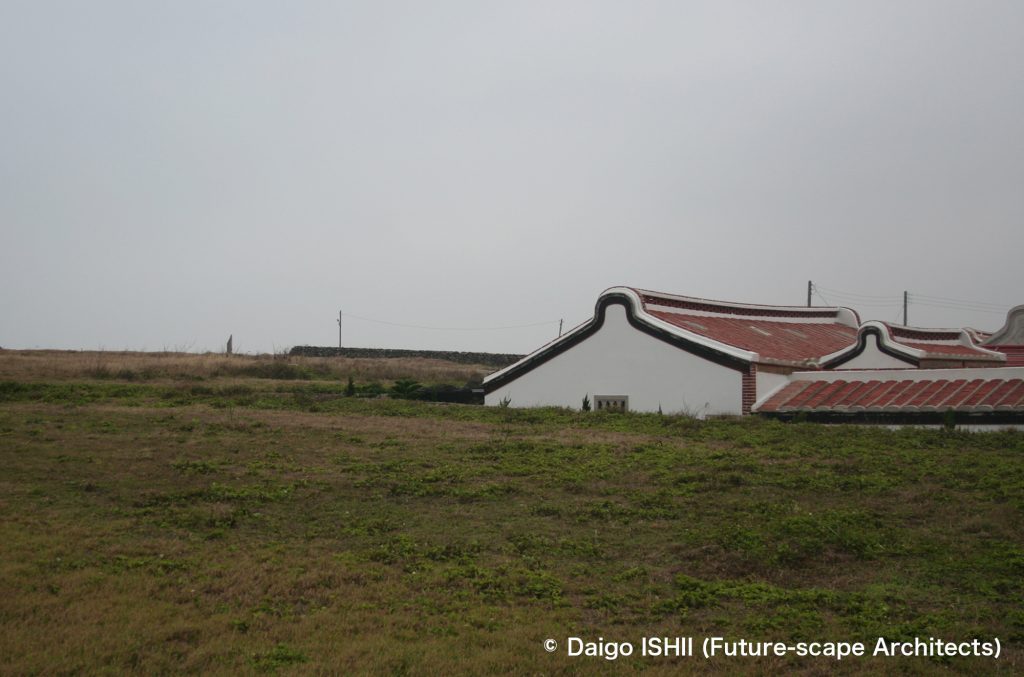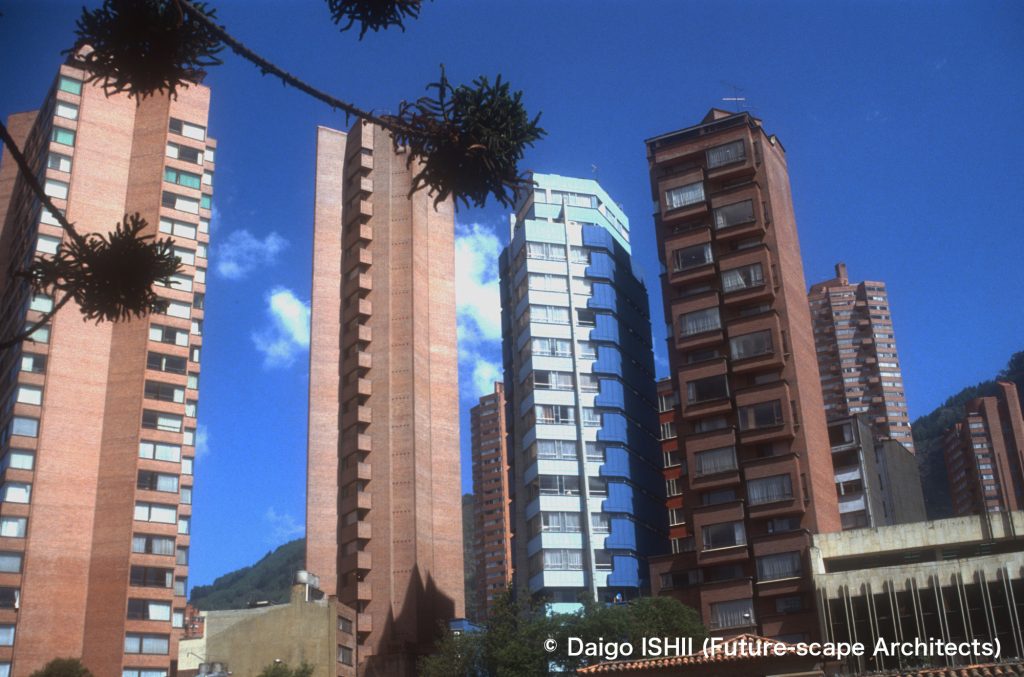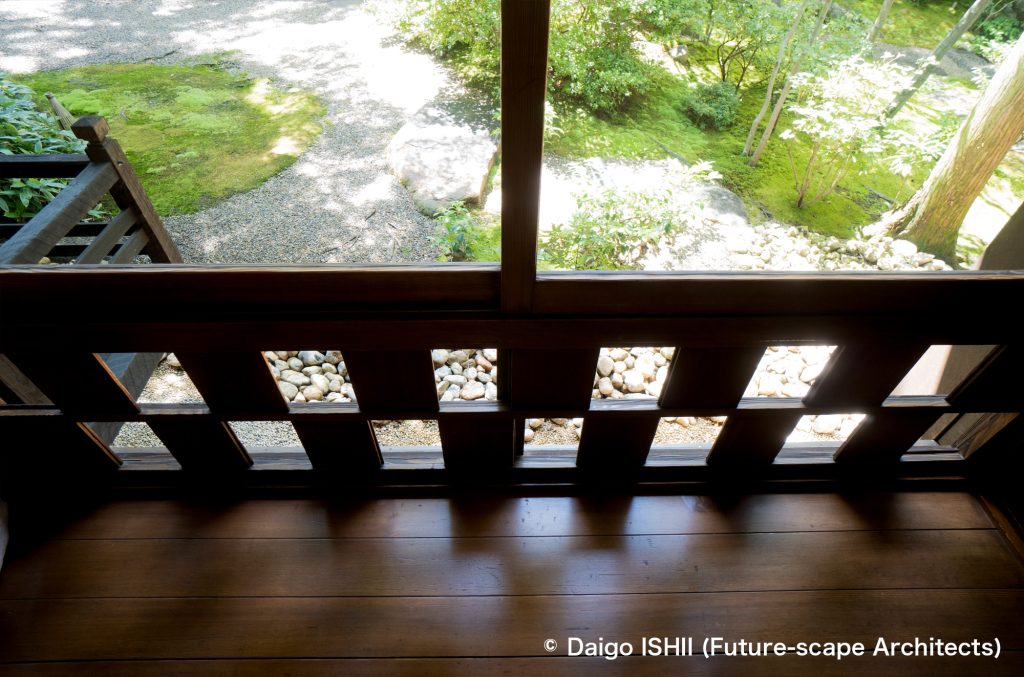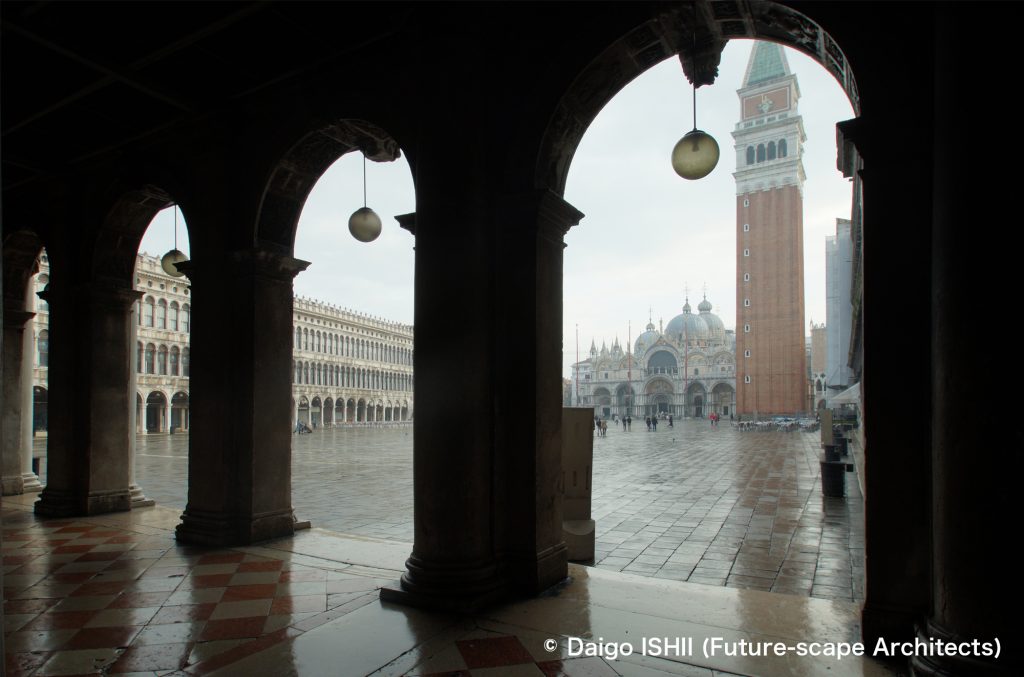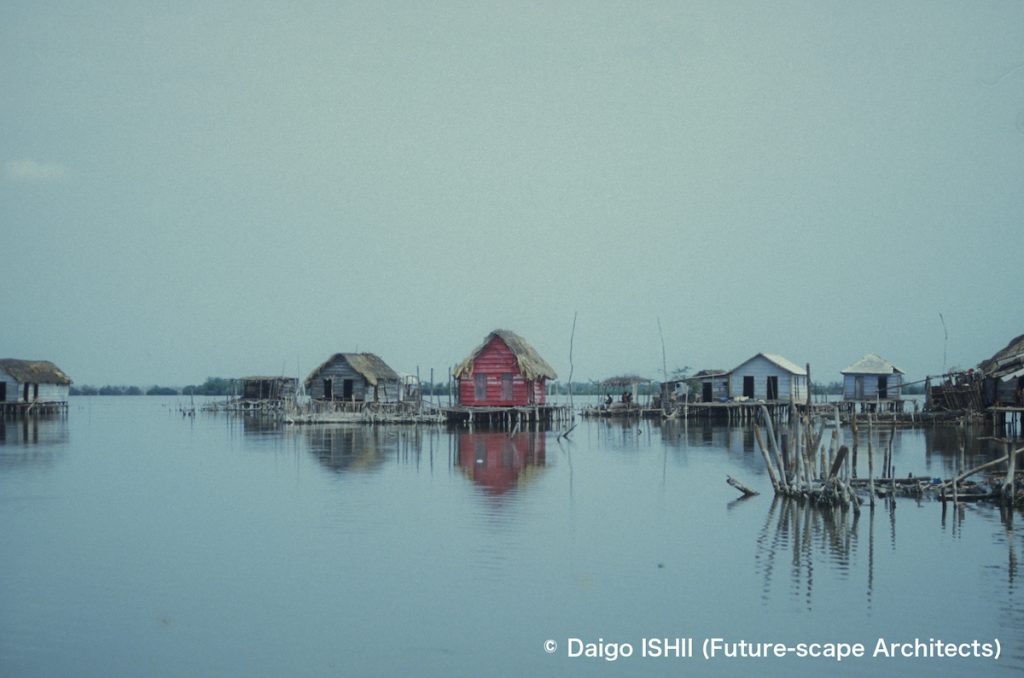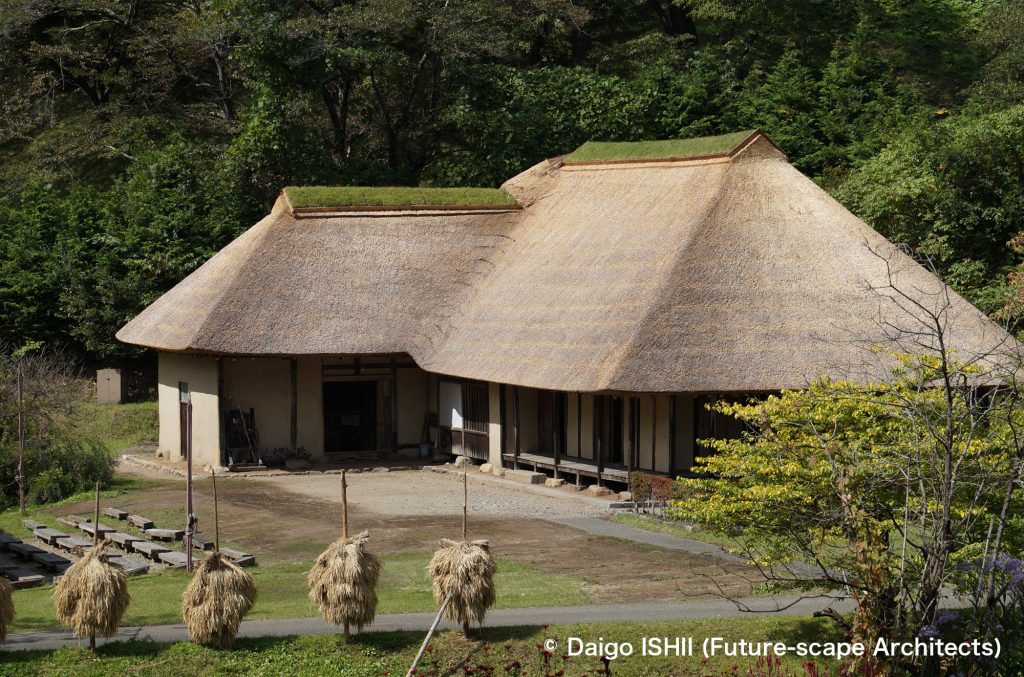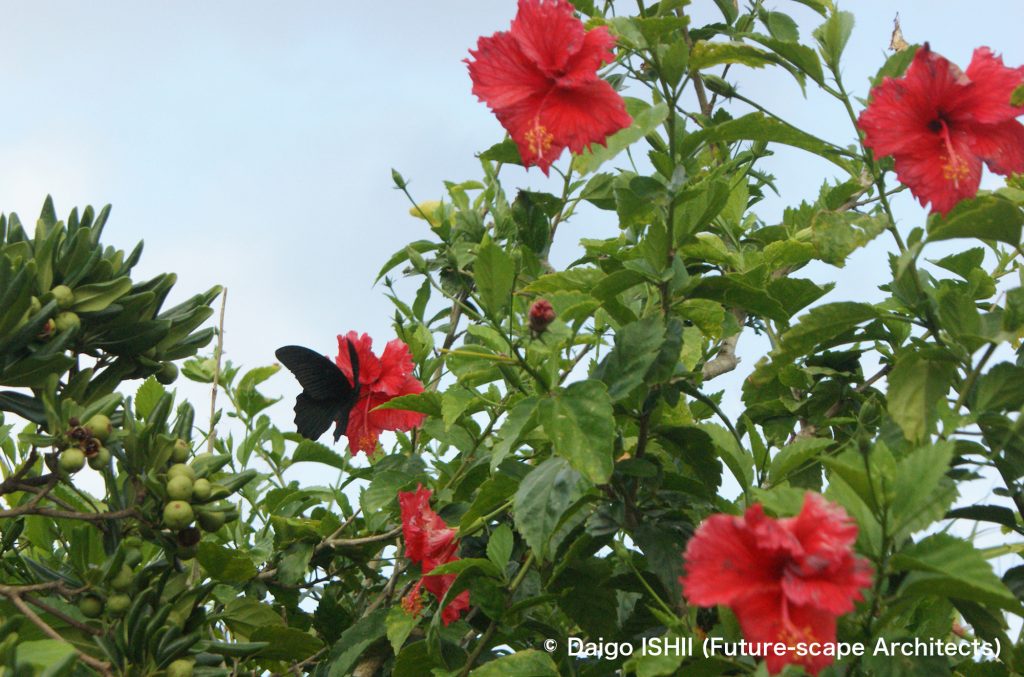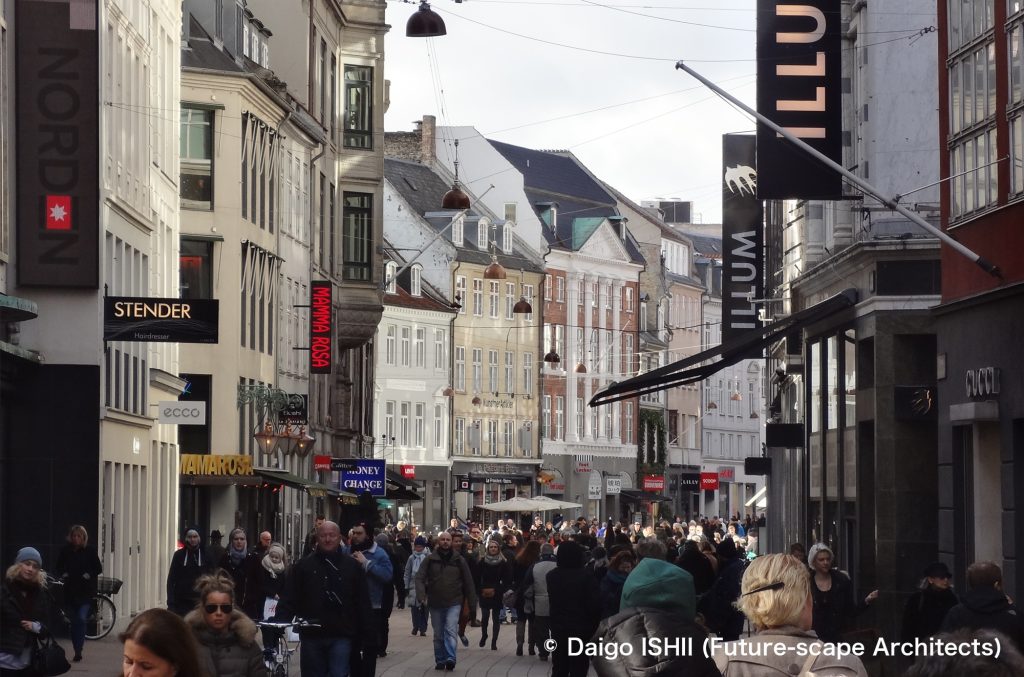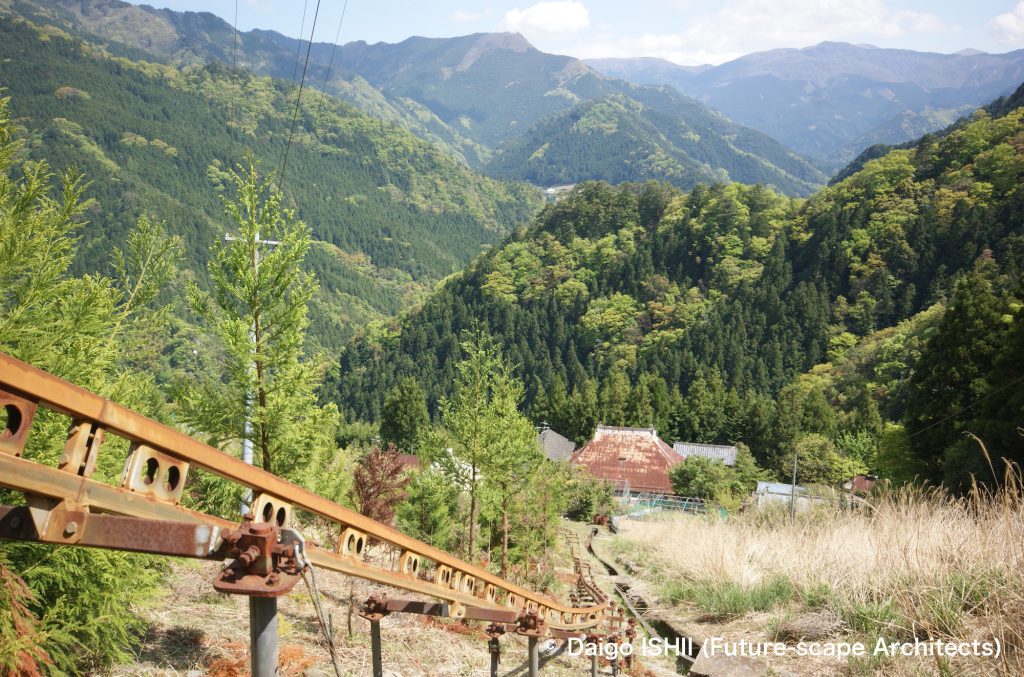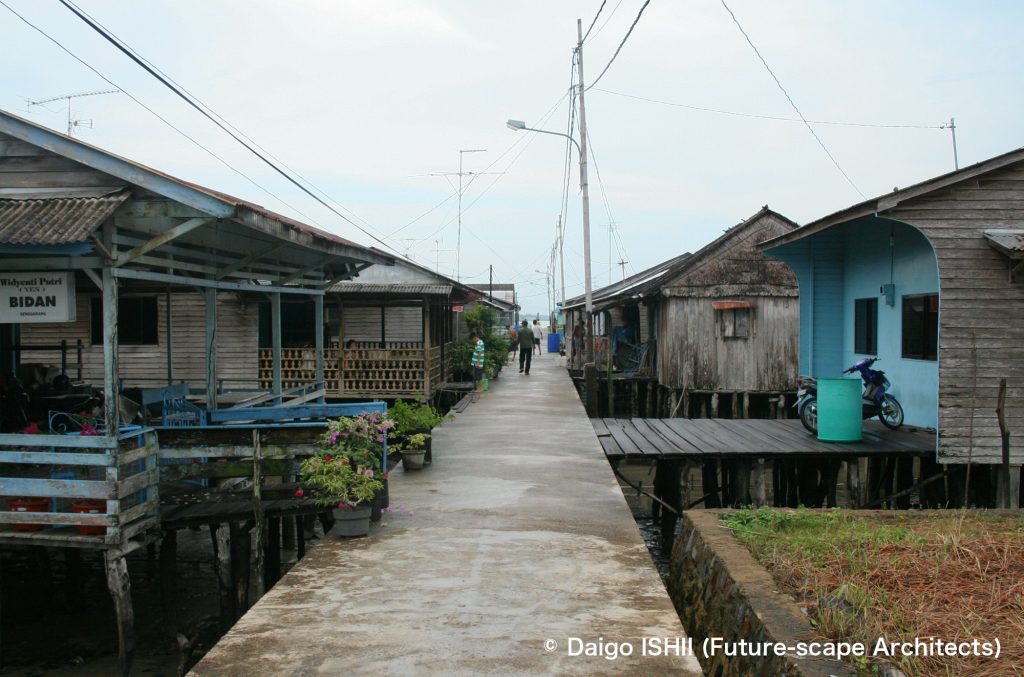Echigo Tsumari Art Triennale is taken place in Tsumari with an area of 760km2 and a population of 80,000 people. It started in 2000 and was taken place nine times until 2024, once every three year. The number of visitors, which was 160,000 at the first time, has grown to nearly 600,000 at the eighth time. It has become a wide area art festival representing Japan.
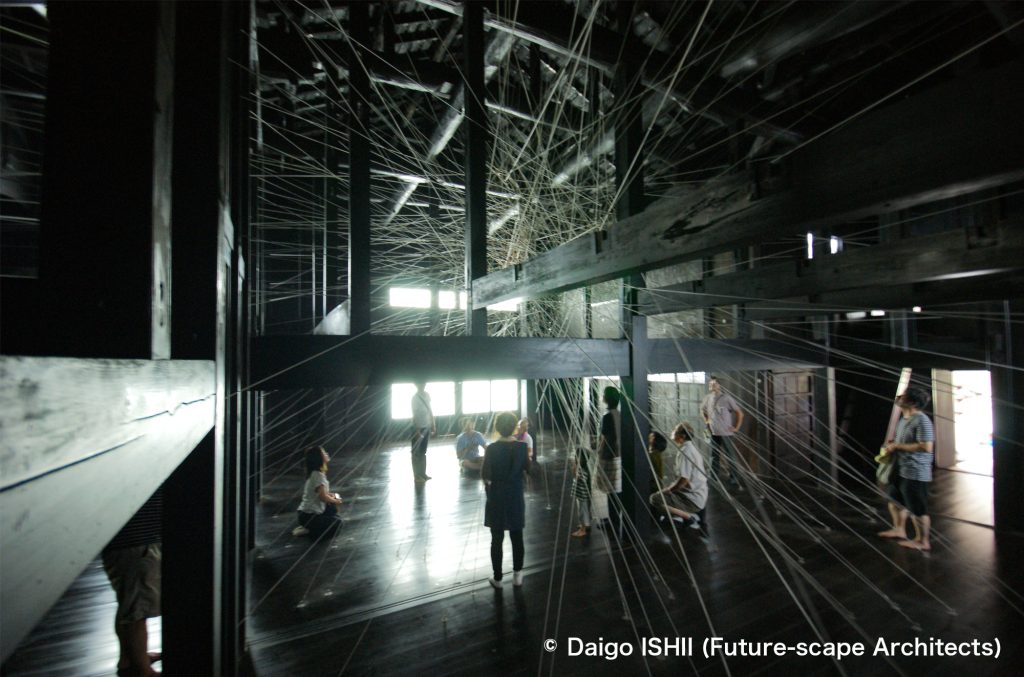
In 1994, the ex-Governor of Niigata Prefecture, Ikuo HIRAYAMA, proposed the "New Niigata Riso Plan" for the six depopulated areas in the prefecture to set up general coordinators for regional development. Tsumari was selected as one of the areas of the plan. HIRAYAMA appointed an art director Fram KITAGAWA as a general coordinator for Tsumari. KITAGAWA considered Tsumari a place to replace cities that have become stuck due to environmental problems and proposed the revitalization project in collaboration with artists, architects, and residents under the philosophy "human beings are involved in nature." Today, wide-area art festivals are held all over Japan, but such festivals did not exist some 20 years ago. KITAGAWA's conception ability and breakthrough force made this project a reality.
Echigo-Tsumari Art Triennale is the presentation of this regional plan and has been held once every three years since 2000. I was involved in the planning of the project. The first event was scheduled to be held in 1999, but it was postponed by one year due to protracted coordination with the local community. It was as if a parachute suddenly landed on a place that had nothing to do with contemporary art. So, it was natural that ordinary public workers, city council members, and residents were greatly puzzled. Activities including the "Flower Road" in which residents planted flowers along roads in the area, and the "80,000 People Discover the Wonders of Echigo-Tsumari" project in which residents convey the charms of Echigo-Tsumari through photos and words, or the exchange between the artists and the local community like workshops, social gatherings that were held every time artists came to Tsumari, and their stay in a local community to create works changed the situation for the better.
Over 140 artists from 32 countries participated for the first event. The art festival opened on July 20th under the blue sky after the end of the rainy season and ended on September 10th with a downpour heralding the arrival of autumn. At first, there was a slow turnout, and the success hung in doubt. As word of mouth, TV, and newspaper gradually reported it, visitors increased, and visitor's type spread from people involved in the art to the general public. On the last weekend of August, the area around Matsudai Station, which was easily accessible by train, was packed with people.
Compared to local events with a budget of the same scale, 140 artists from all over the world have brought the diversity of expressions and ideas, and dissemination effect. National and foreign media reported this art festival equally with news from Tokyo. Tsumari had been regarded at the bottom of the hierarchy which summit was Tokyo. However, people realized that, depending on the way, a rural area could directly connect with the world over Tokyo and become a representative of Japan.
In 2022, the 8th event was held after one year delay due to the COVID-19 pandemic. Through the electronic advertisement on the local trains in the Tokyo metropolitan area, the Japan railway company promoted the 8th event once every 5 minutes during the period (and once every 15 minutes in 2024). Now, it has grown from Niigata's tourism content to Japan's tourism content. During more than 20 years, it seems our situation has advanced to a completely different phase.
Before the opening of the art festival, Tsumari suffered from the flow of population due to a decline in the textile industry, low agricultural production efficiency due to inefficient rice terraces, heavy snowfall, and the inconvenience of transportation. Meanwhile, it was a place where the richness of nature and old culture remained and connected with people's lives. There were similar wonderful places in various parts of Japan. But it was not easy to differentiate them. In Tsumari, art has become a force to rediscover and differentiate the region.
We will look back on the history of the Echigo-Tsumari Art Triennale, arranging the works in chronological order from the first event in 2000. Works introduced in the next four posts, "Real and Fake," "Landscape," "Time," and "Child and Adult," are not included.
2000 Echigo-Tsumari Art Triennale 2000
2000 The main venue in Tokamachi (No longer in existence)
The signboard for the first art triennale was hung at the main venue, which used a closed factory building that stood at the place where Kinare is now. The English title for the first festival was not Triennale but Triennial. The venue's plaza was also temporary.
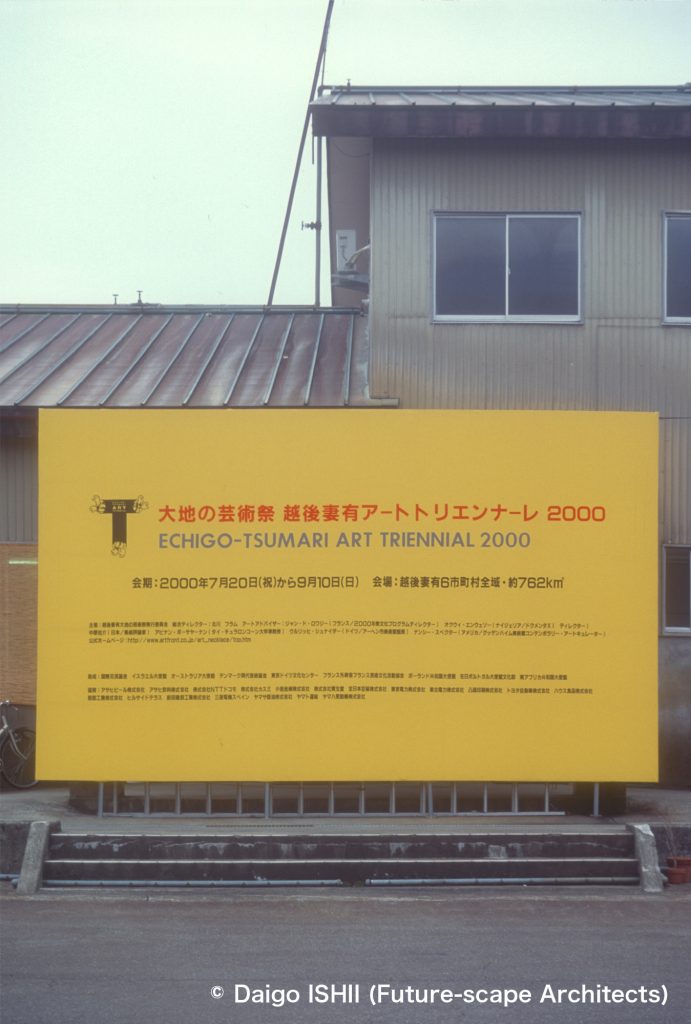
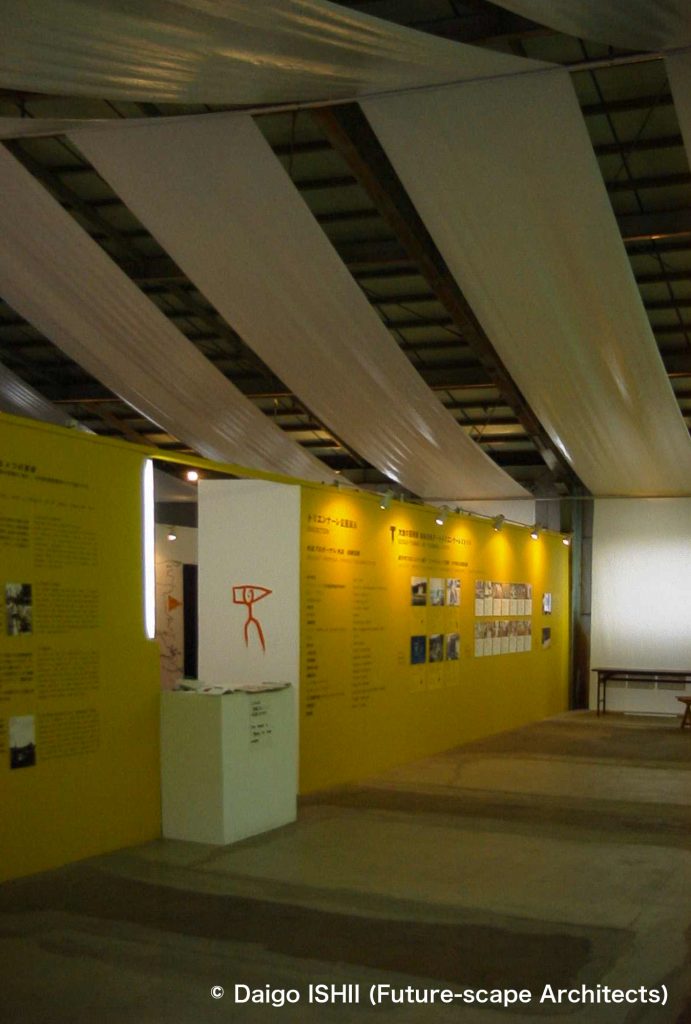
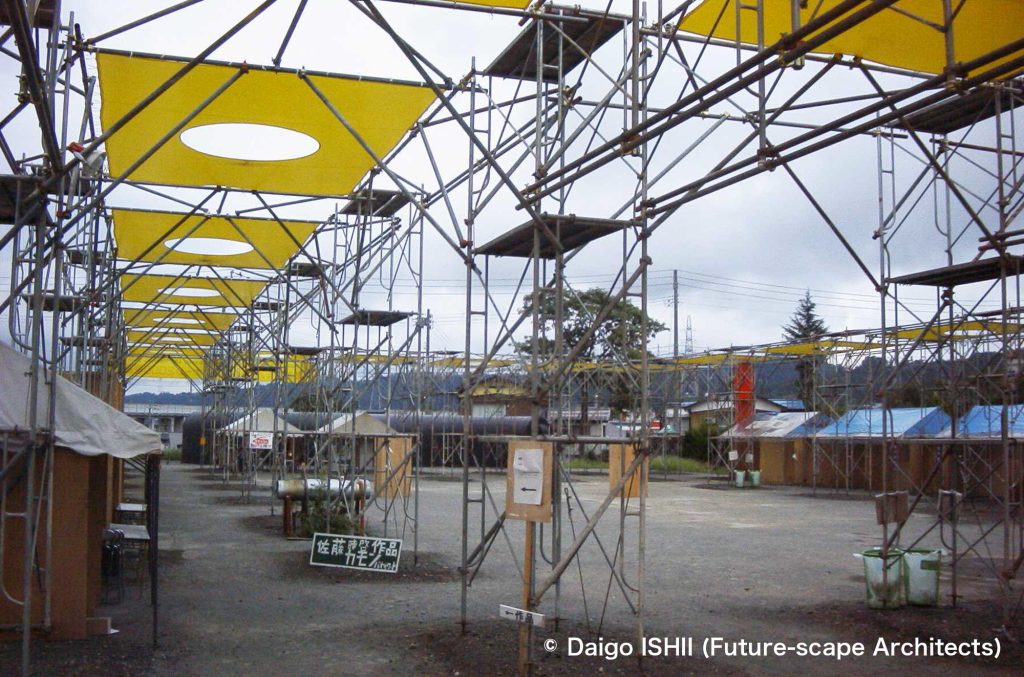
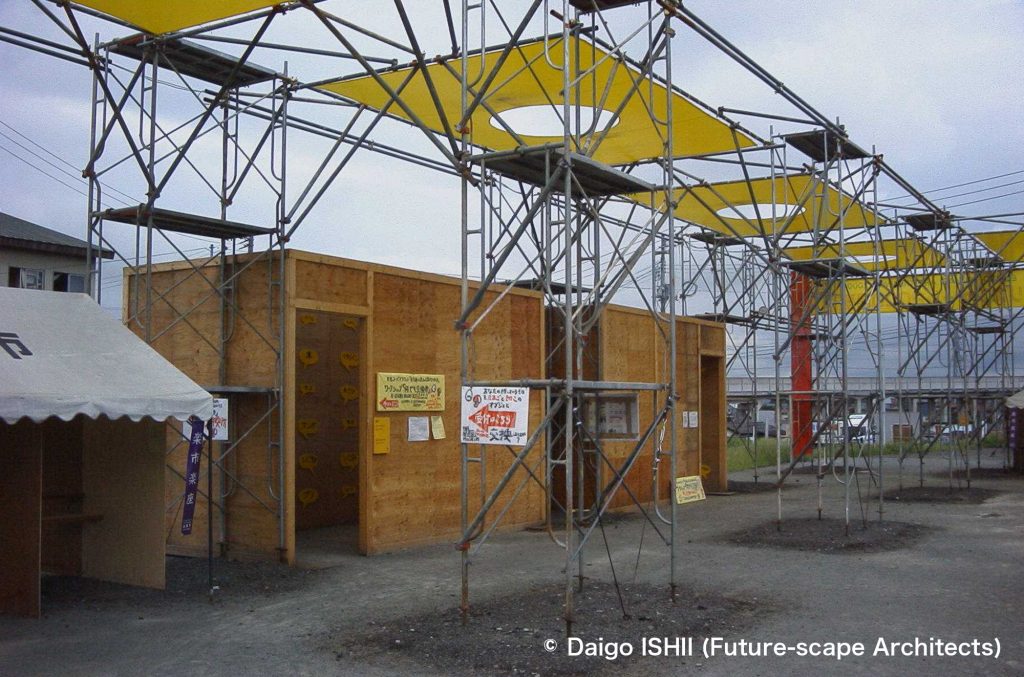
2000 Marina ABRAMOVIC ”Dream House” (Now opening except winter)
This lodging facility for dreaming was renovated from a 100-year-old house in the Kamiyu community. A quests wears a suit for dreaming, sleeps in a bed for dreaming that resembles a coffin and the next morning writes down the his/her dream in a "dream book." A book of dreams written down over a 10-year period has been published. The detailed design was executed by CLIP.
English Website
https://maps.app.goo.gl/SZQ9Mh2VZbRiTmRy9
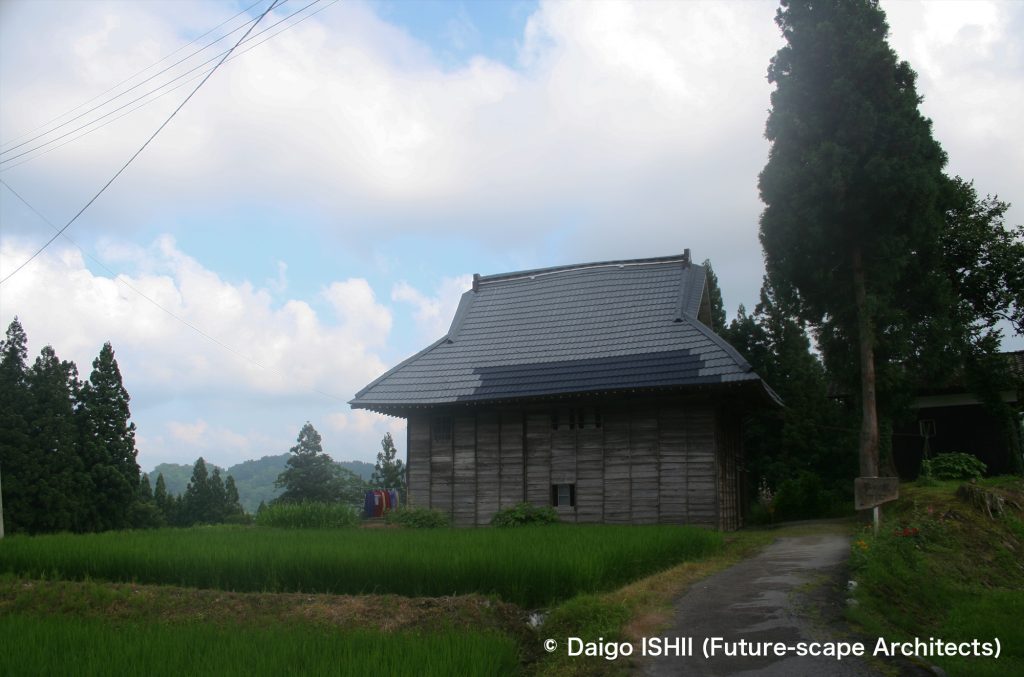
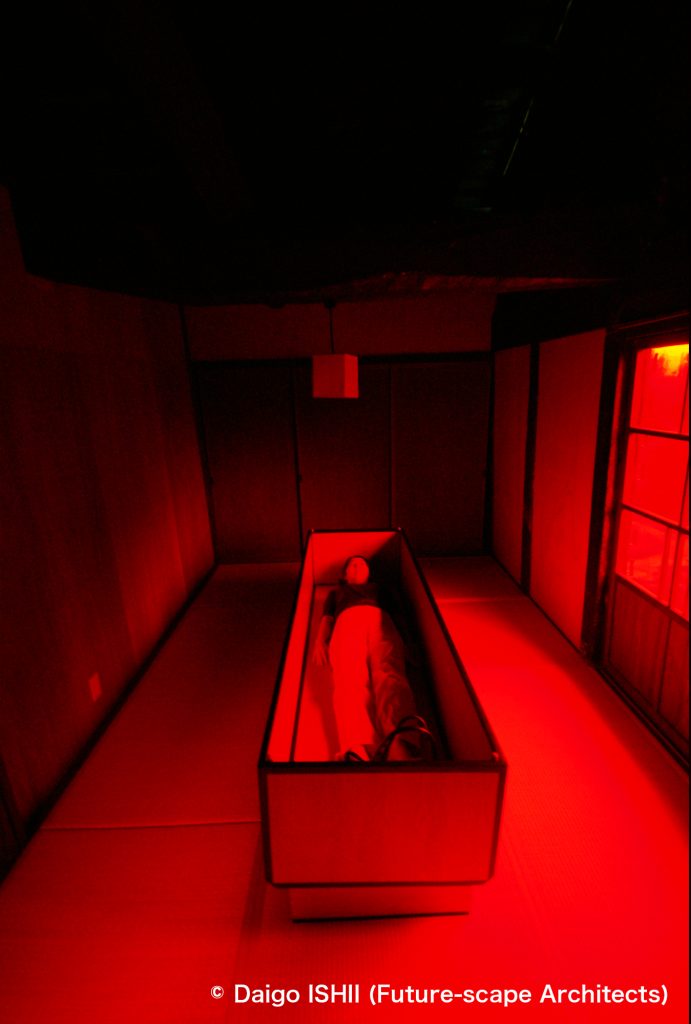
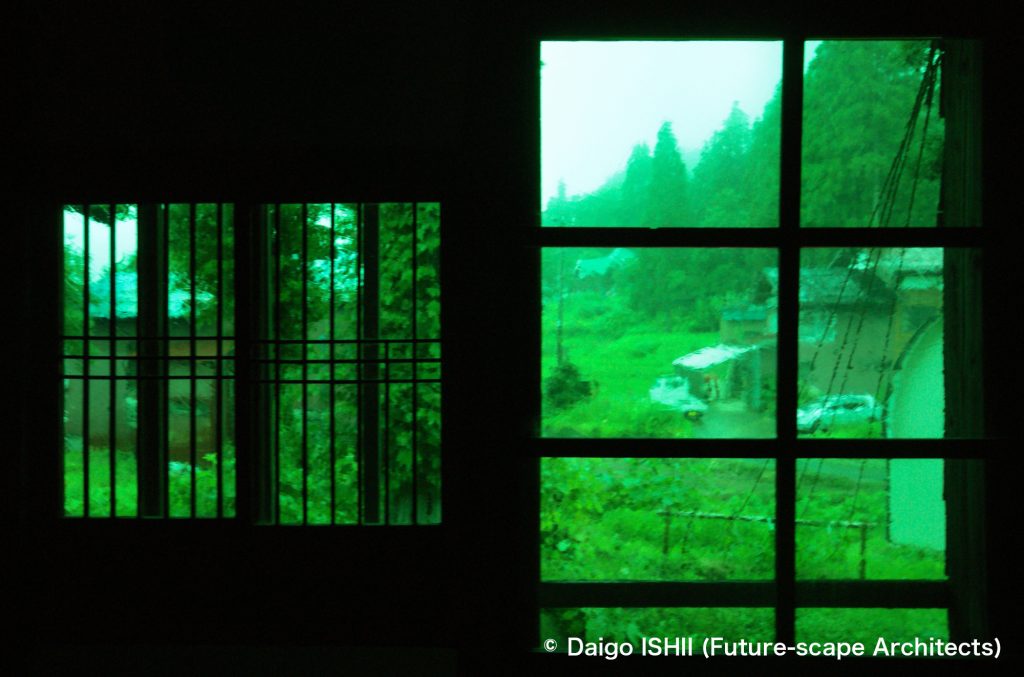
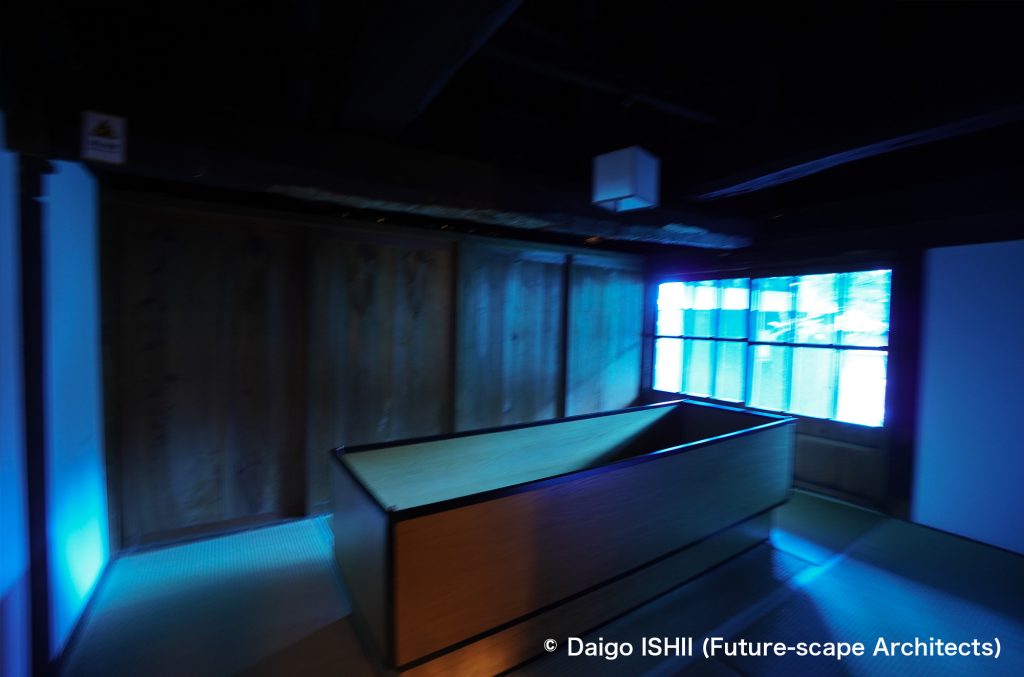
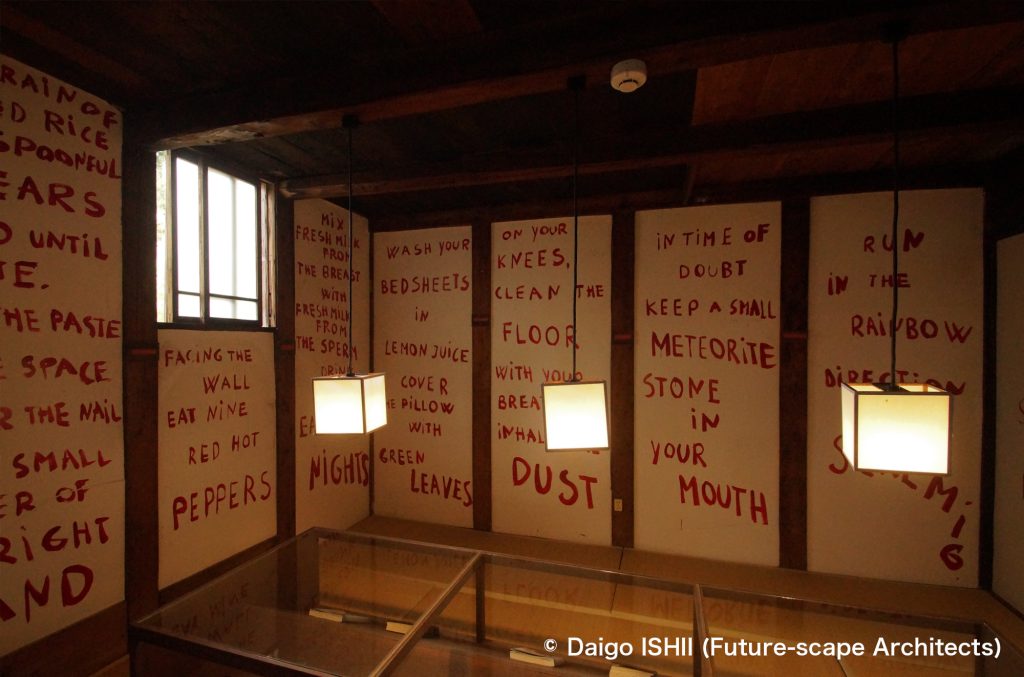
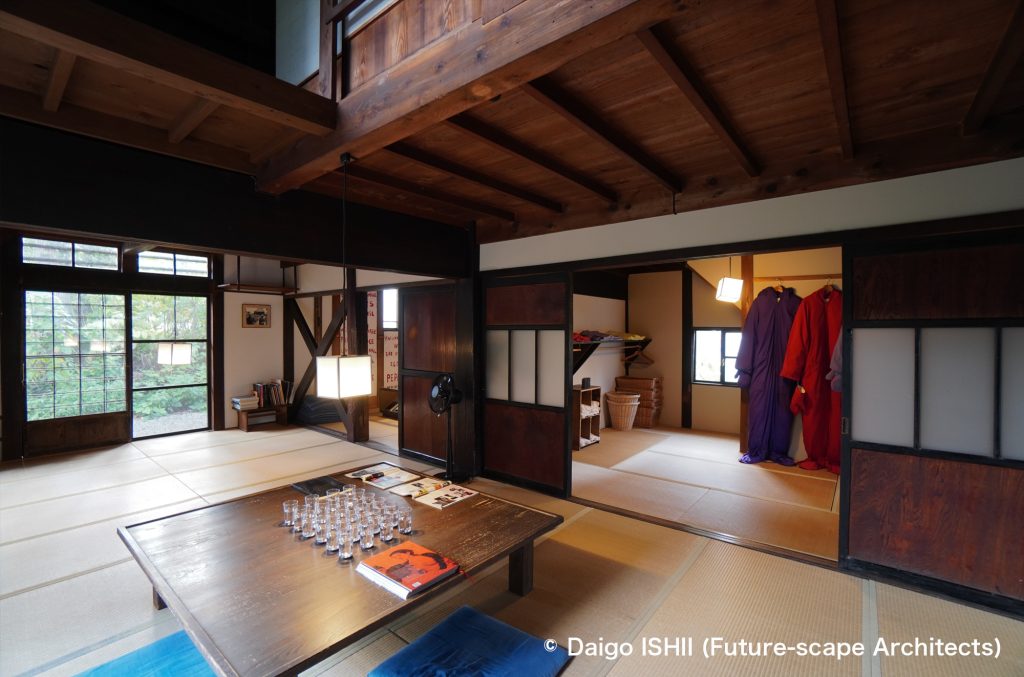
2000 James TURRELL ”House of Light” (Now opening)
It is a lodging facility where they can experience James Turrell's light installations. In "Outside-In," they can view the sky for one hour at sunrise and sunset, and the lighting effects create a sky that appears different from the actual color and texture of the sky. In 2000 when it was completed, the lighting effect by straight-tube incandescent lamps was simple, but along with its production stop, lighting was changed into LEDs and its effect became more complicated in 2015. In the "Light Bath," the lighting installed underwater creates a difference in the way the body glows in and out of the water. The detailed design was executed by Daigo ISHII + Future-scape Architects.
English Website
https://maps.app.goo.gl/VPxd8PQ4gYtQ3yYj9
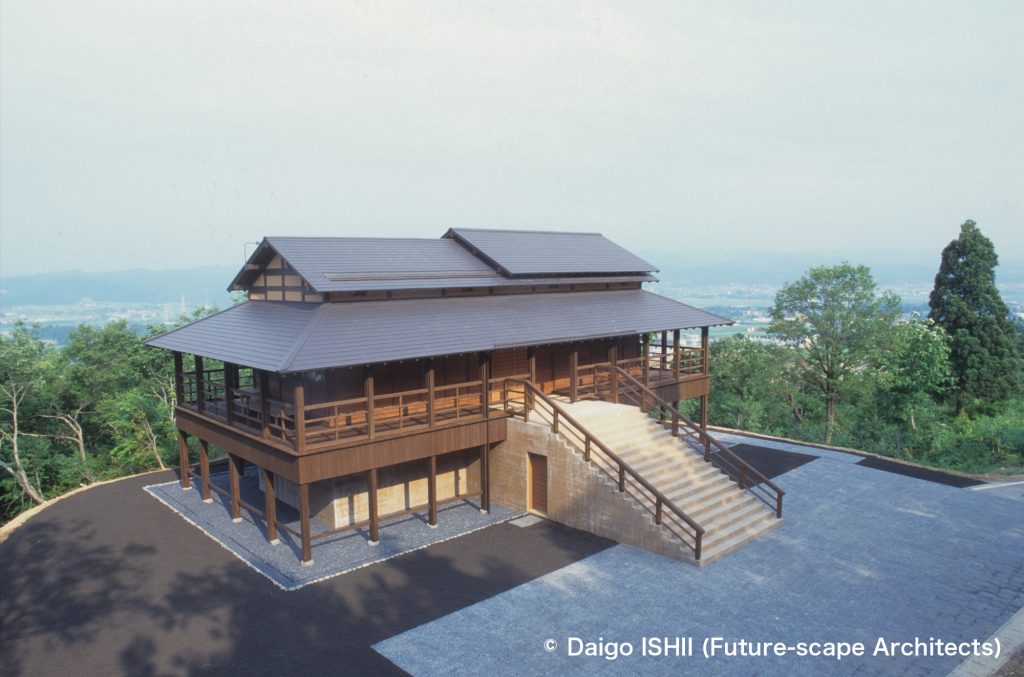
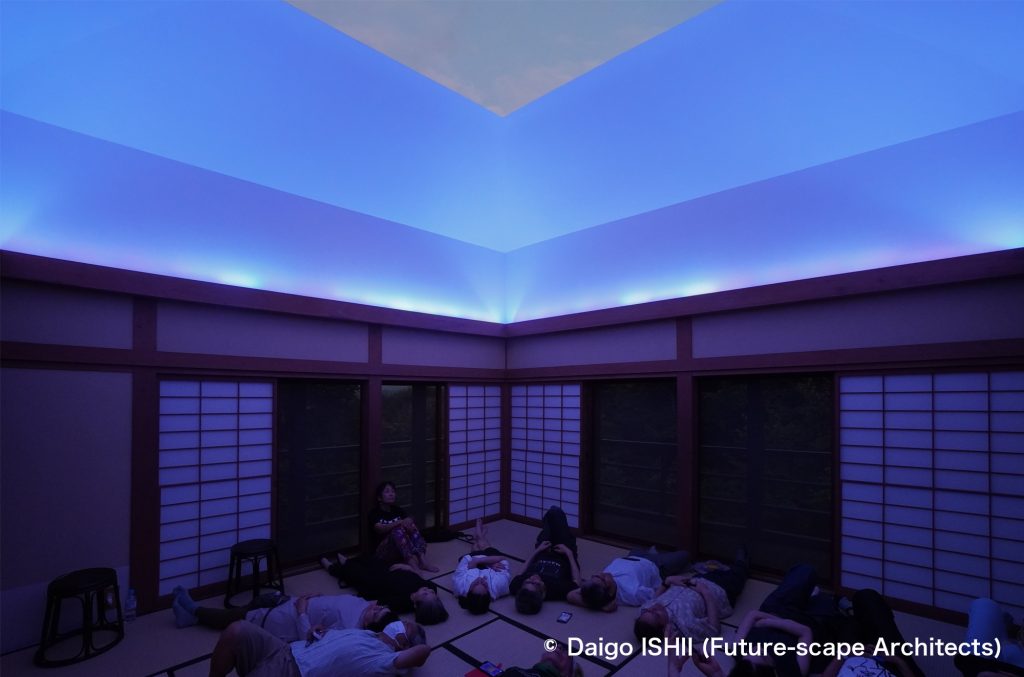
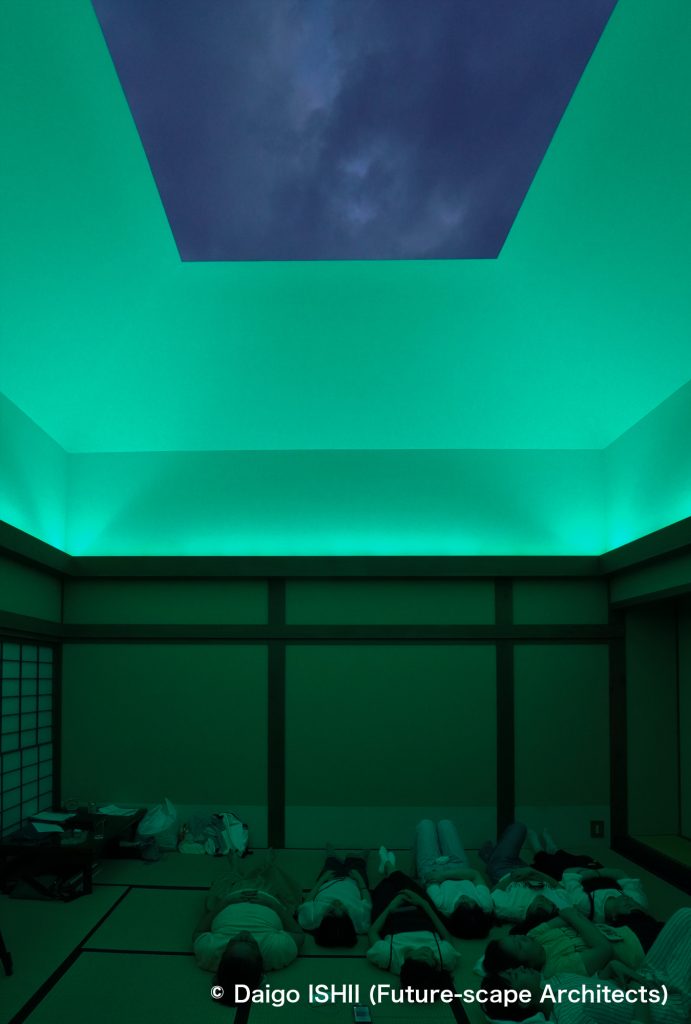
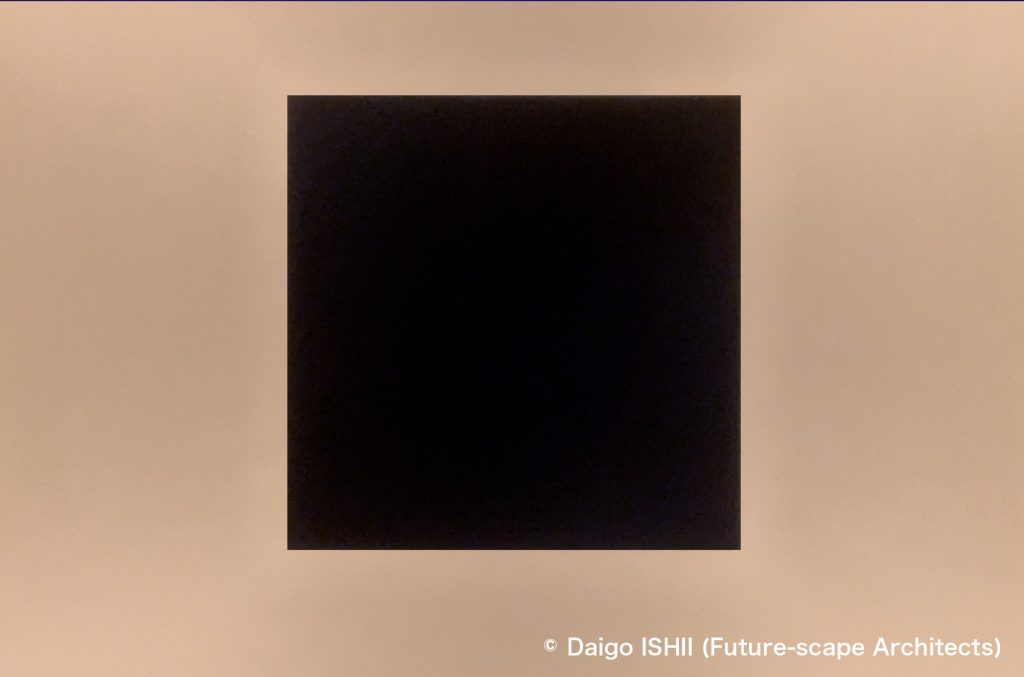
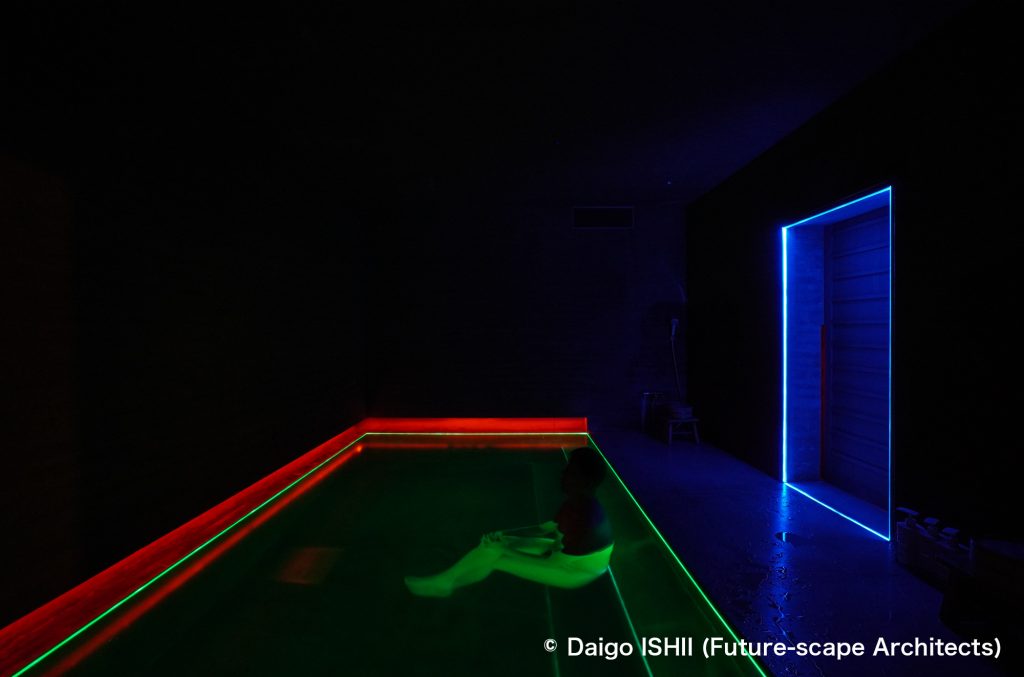
2000 Yoshio KITAYAMA ”To the Dead, to the Living” (No longer in existence)
This work was installed in the gymnasium of the closed Tsuchikura branch of the Kiyotsukyo Elementary School. A dragon god-like object made of bamboo and paper swirled around the room, and the walls are decorated with his drawings and photos of the children who spent time there. The whole work seemed like a farewell gift by the artist to the school building, which was scheduled for demolition.
English Website
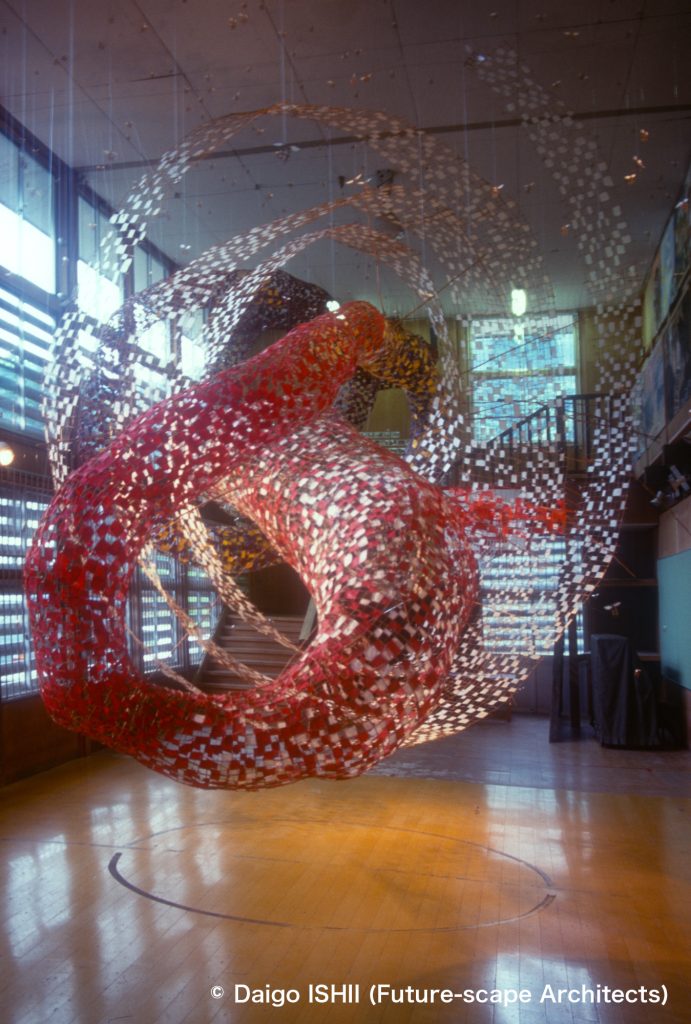
2000 Tadeusz MYSLOWSKI ”Untitled” (No longer in existence)
Candles are lit on a three-dimensional lattice in the shape of a cross, and prayers are offered for those who have died in disasters or acts of violence.
English Website
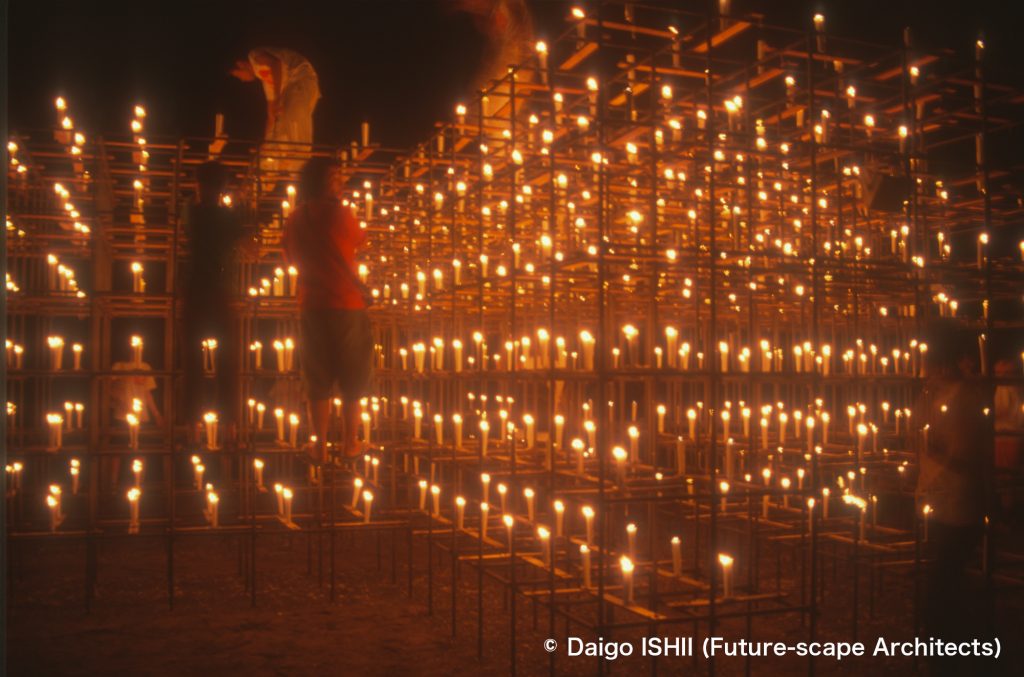
2000 Iftikhar & Elizabeth DADI ”BONSAI TREE” (No longer in existence)
To pay tribute to the traditional culture and industries of Japan, a bonsai tree's sculpture was created and installed at the main venue in Tokamachi. light bulbs were attached to the surface and lit up at night.
English Website
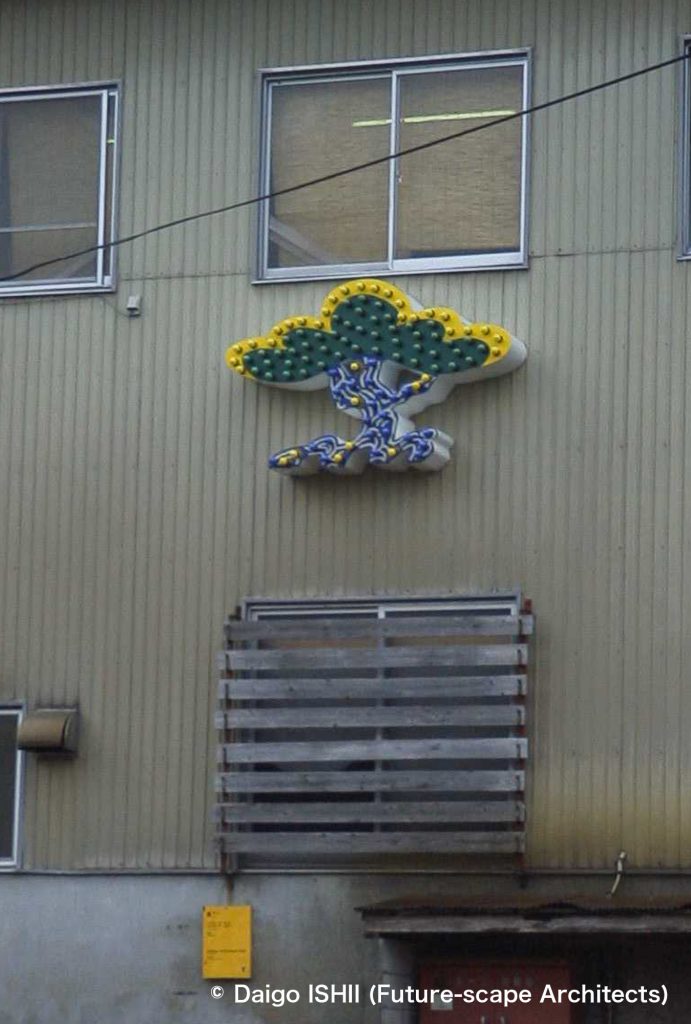
2000 Joseph KOSUTH ”Reading Sample(Codex)#1,2000” (No longer in existence)
This work was installed at the foot of Tsumari Ohashi Bridge on the main road over the Shinano River. Using Aristotle's text that "water is the source of all things," the work highlights the relationship between water and the region of Tsumari.
English Website
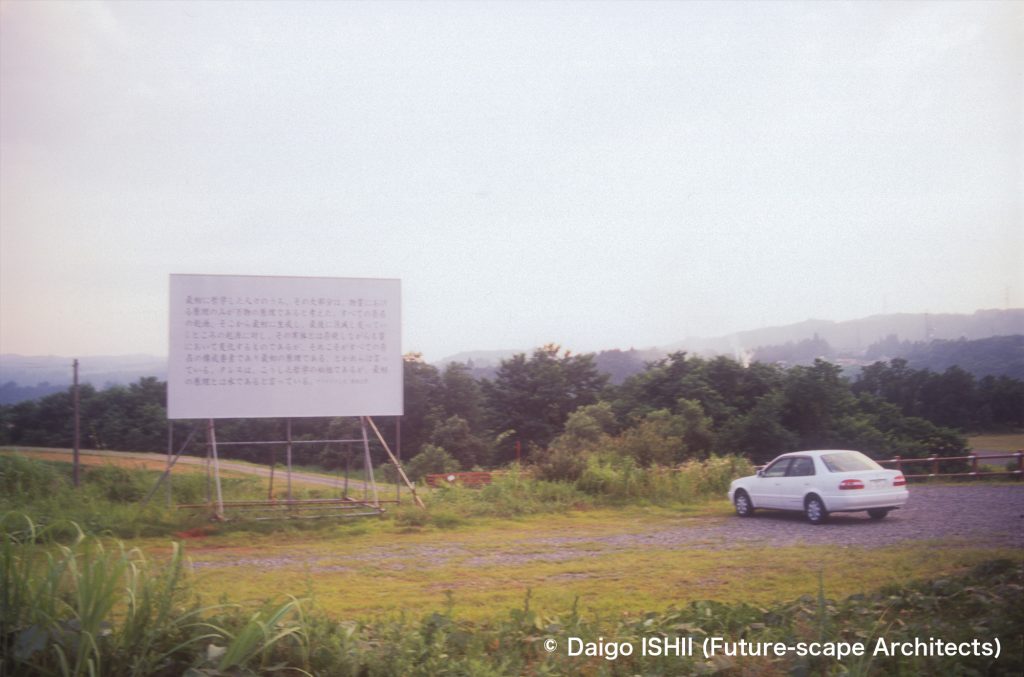
2000 Kazuhiro KOJIMA ”The smallest and longest library in the world” (No longer in existence)
It is a temporary library for children set up next to OGUIBE's artwork, in which poems were carved into utility poles.
English Website
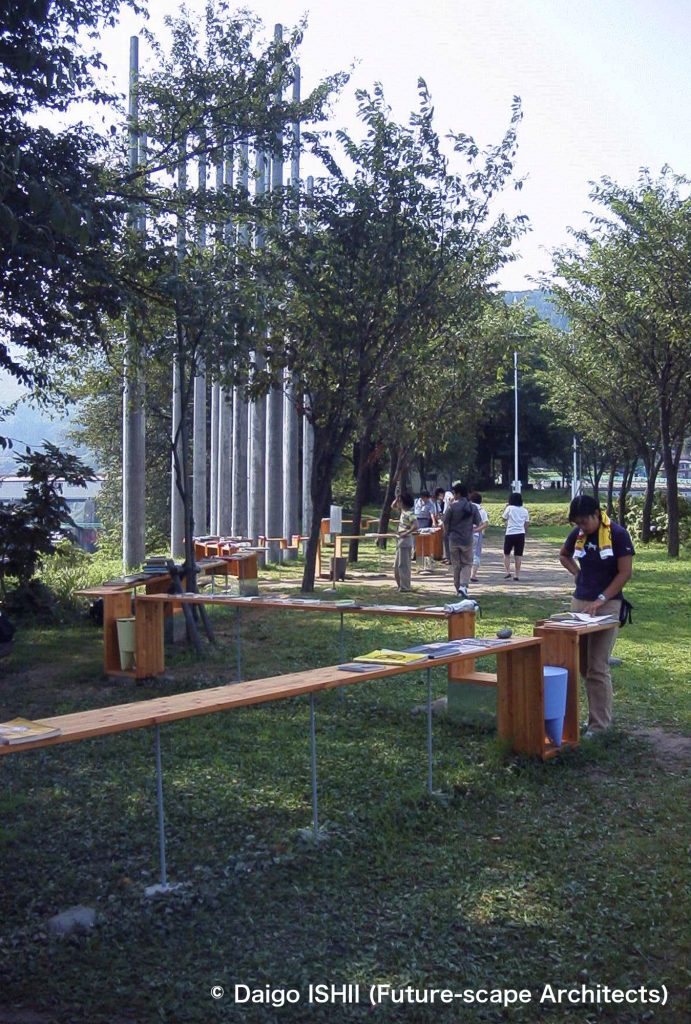
2000 Yoshio KAWAI / BO Architectural Design Office + GEO + Ootake Atlier ”Fushiguro Castle Ruins Campgrounds Cottage A” (Opening to only guests staying at the cottage)
One of three publicly available cottages built at the Fushiguro Castle Ruins Campsite in Kawanishi. The interior, finished with solid wood, has various levels like a river terrace and offers views of the Echigo Sanzan mountains.
English Website
https://maps.app.goo.gl/CWDGCrGDzVkG3zzB8

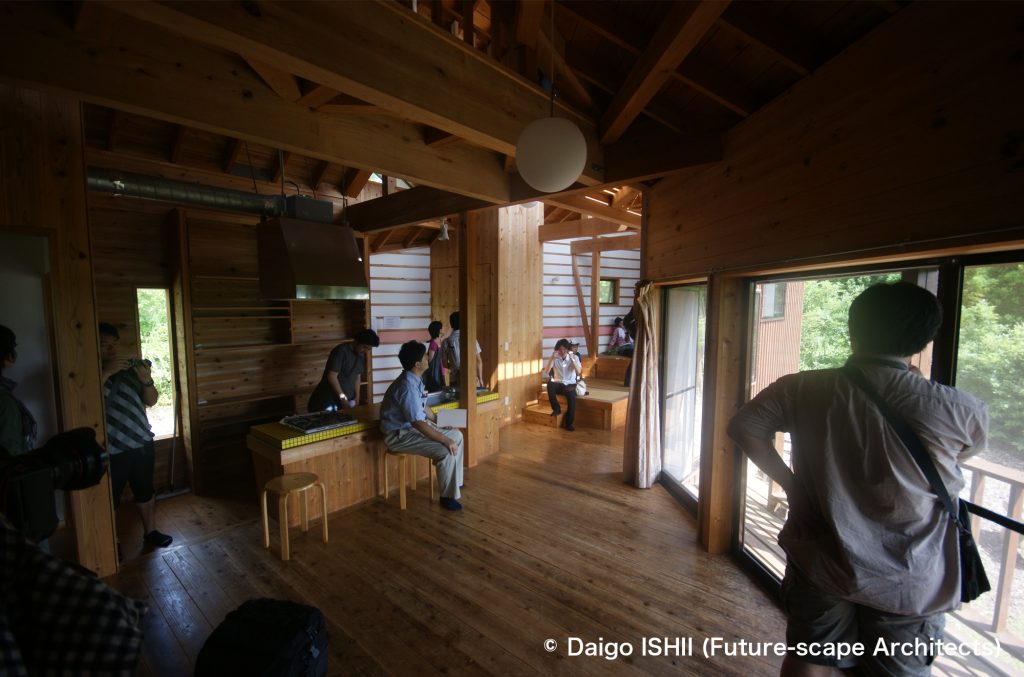
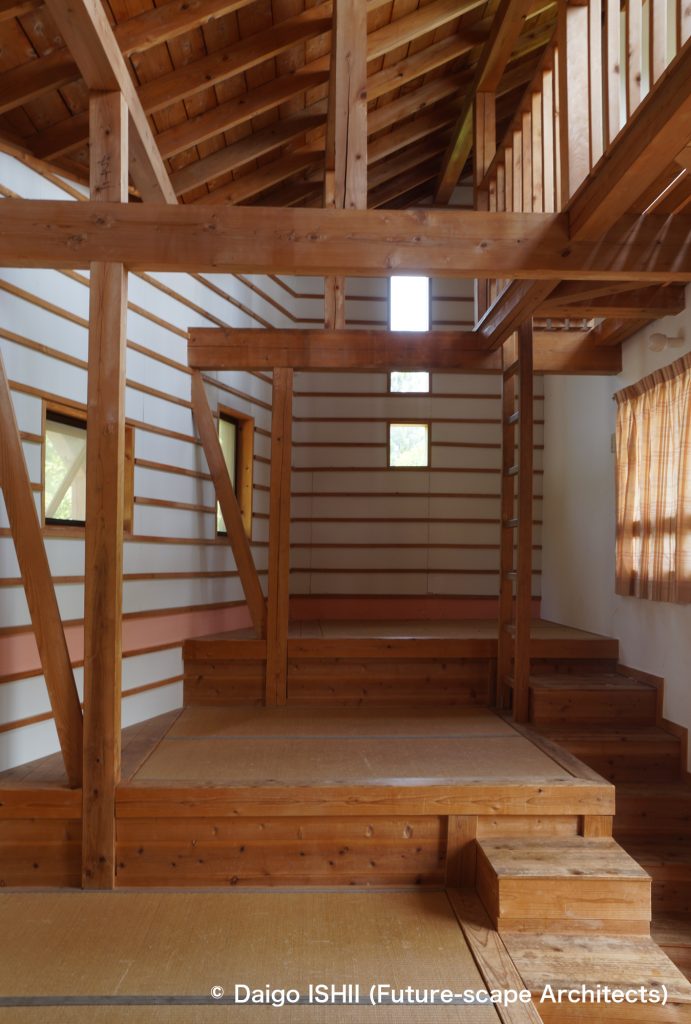
2000 Yoshiharu TSUKAMOTO /Atelier Bow-Wow + T.I.T. Tsukamoto Lab + malo-Planning ”Fushiguro Castle Ruins Campgrounds Cottage B” (Opening to only guests staying at the cottage)
One of three publicly available cottages built at the Fushiguro Castle Ruins Campsite in Kawanishi. The Y-shaped plan matches the existing footpath found on the slope of the forest site, giving the feeling of walking through a forest. The interior is painted black, drawing attention to the surrounding scenery framed by the windows.
English Website
https://maps.app.goo.gl/xB12o1dT79dLAuav7
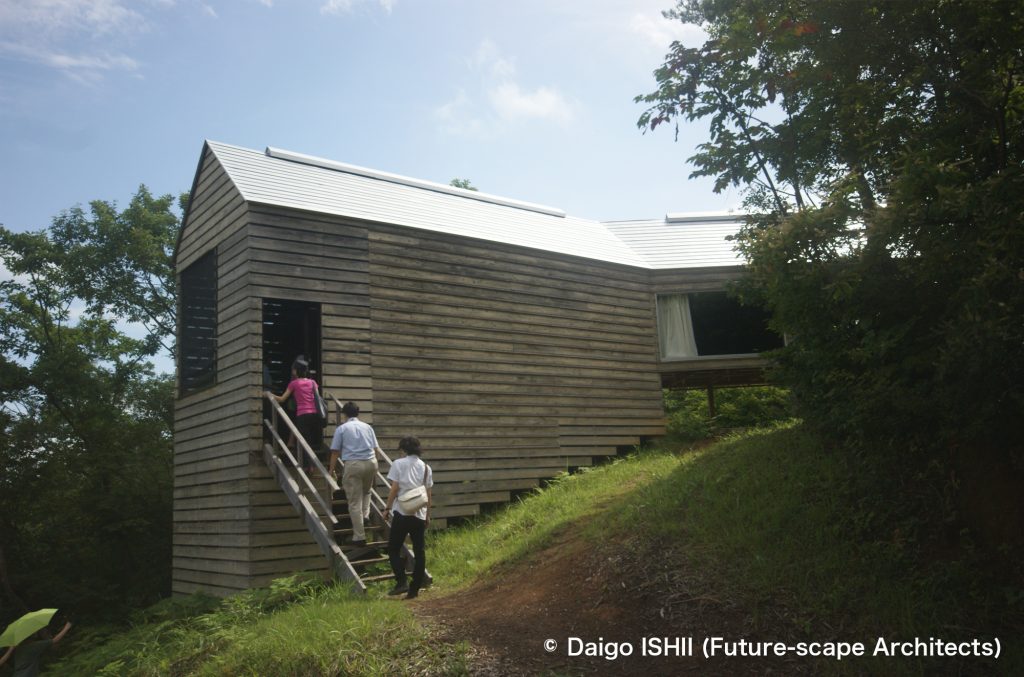
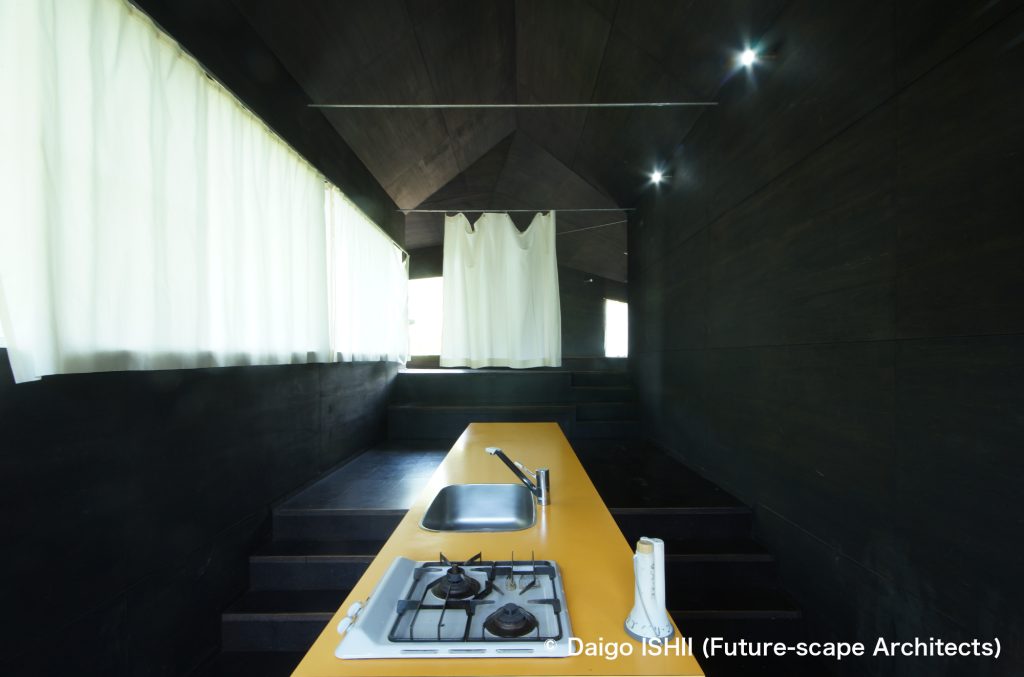
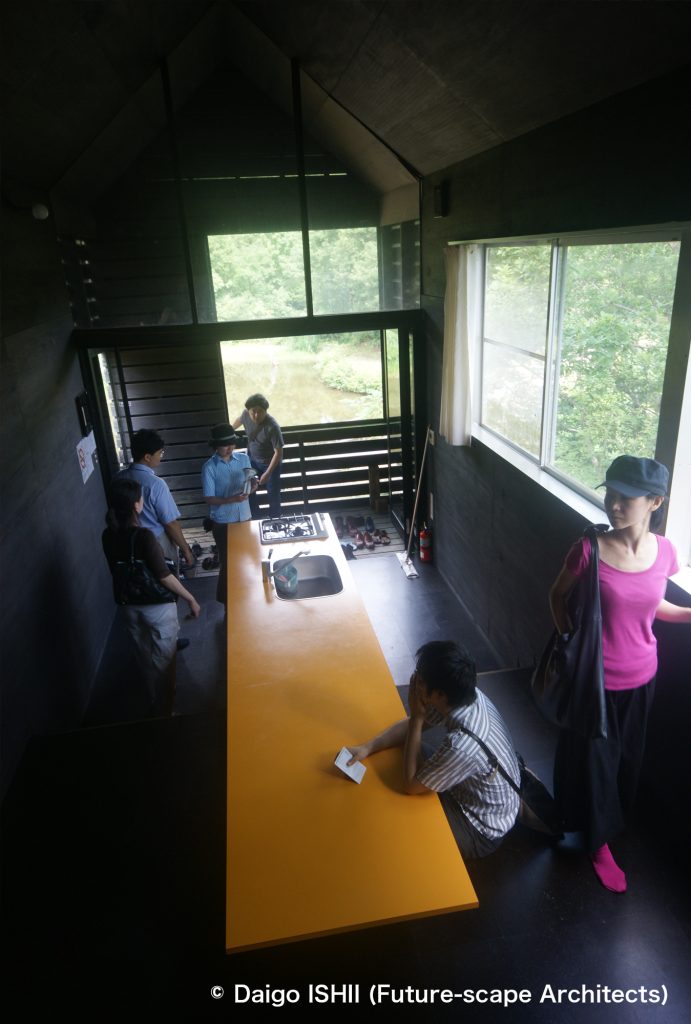
2000 Daigo ISHII /Future-scape Architects ”Fushiguro Castle Ruins Campgrounds Cottage C” (Opening to only guests staying at the cottage)
The exterior appearance is an extension of local houses that locals are familiar with, so that this cottage does not stand out in the beech forest, while the interior is an unexpected space, with white tube space that house all the necessary functions for a stay twisting and turning in complex ways inside the large black box created by the exterior appearance. The contrast between these two spaces creates contrasting perspectives for viewing the beech forest.
English Website
https://maps.app.goo.gl/k4ZPLjyhke73HaFL9
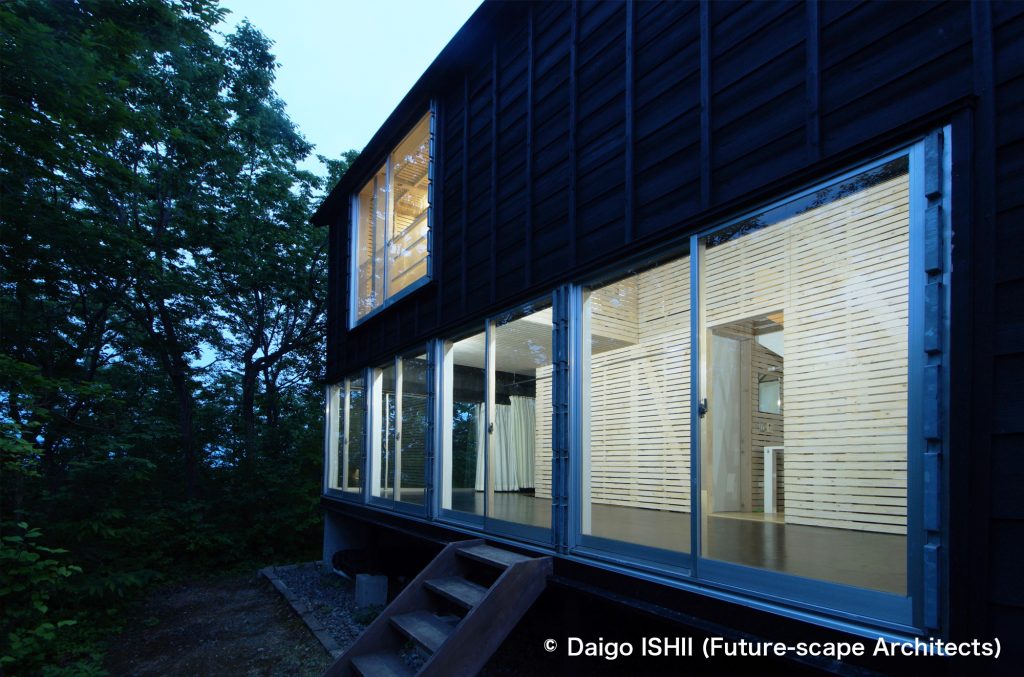
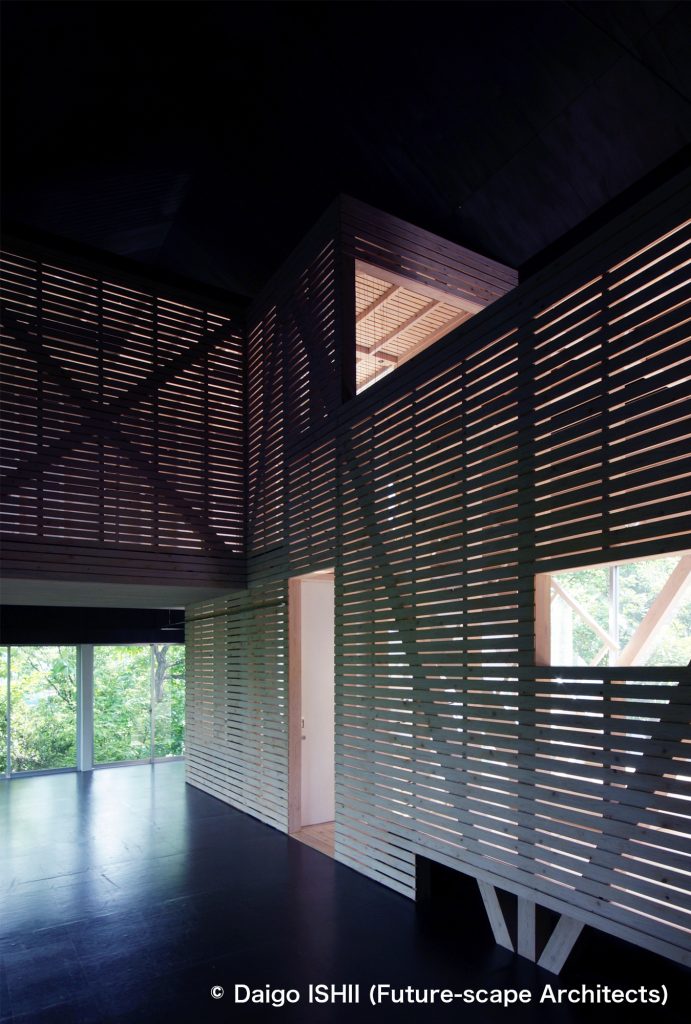

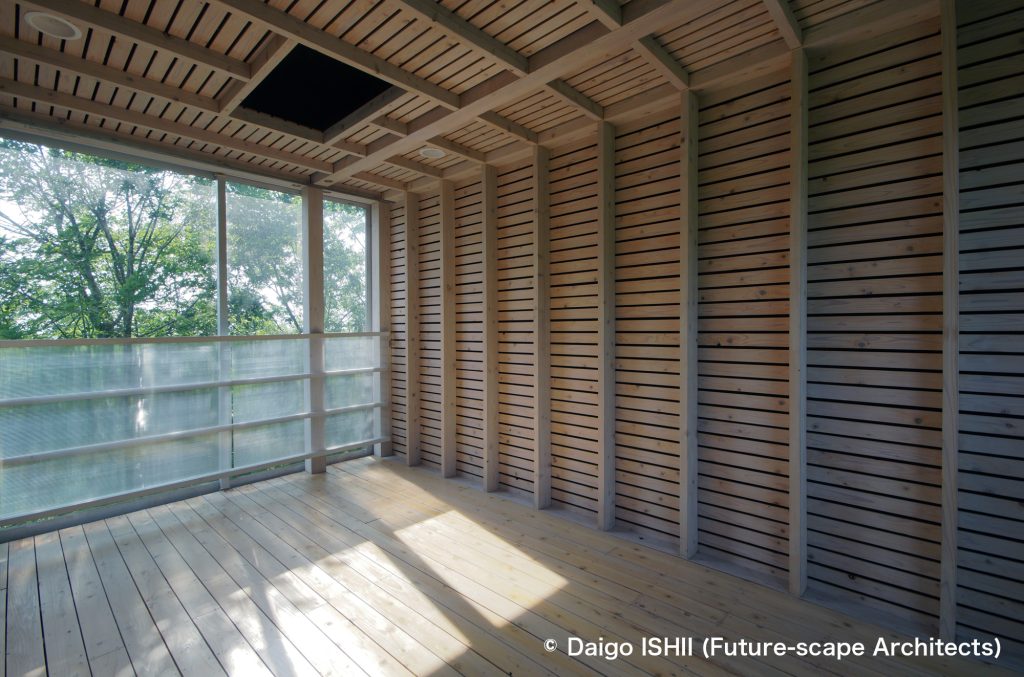
2003 Echigo-Tsumari Art Triennale 2003
2003 Yayoi KUSAMA ”Tsumari in Bloom” (Now opening)
This floral sculpture installed outdoors at Matsudai Nohbutai is said to be Kusama's favorite piece of outdoor sculpture all over the world.
English Website
https://maps.app.goo.gl/DLB8EcWm4hSVcQC77
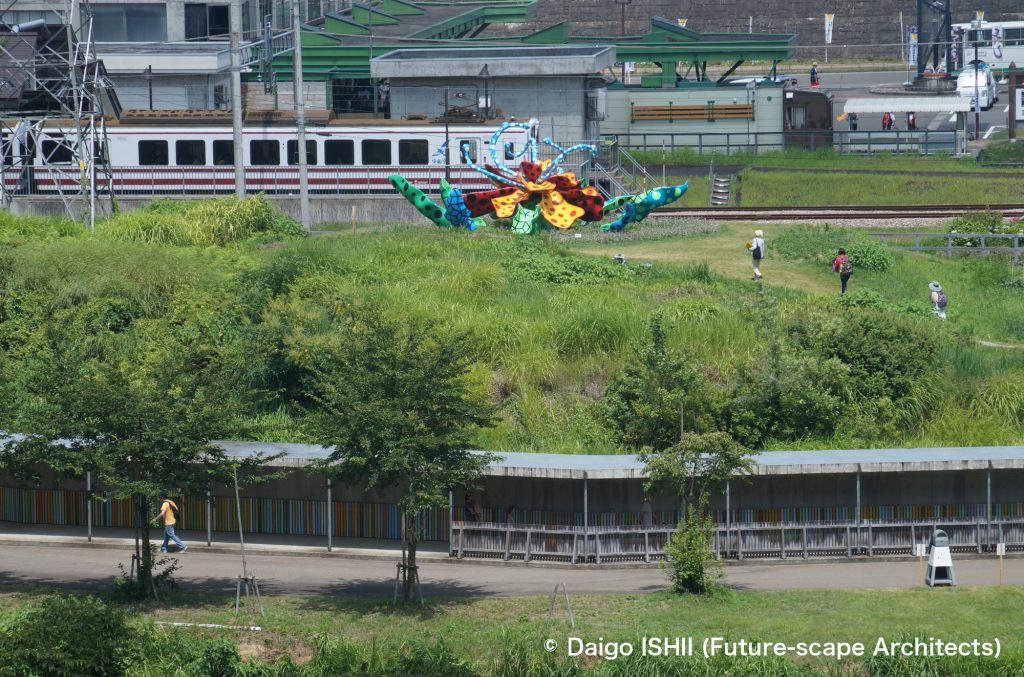
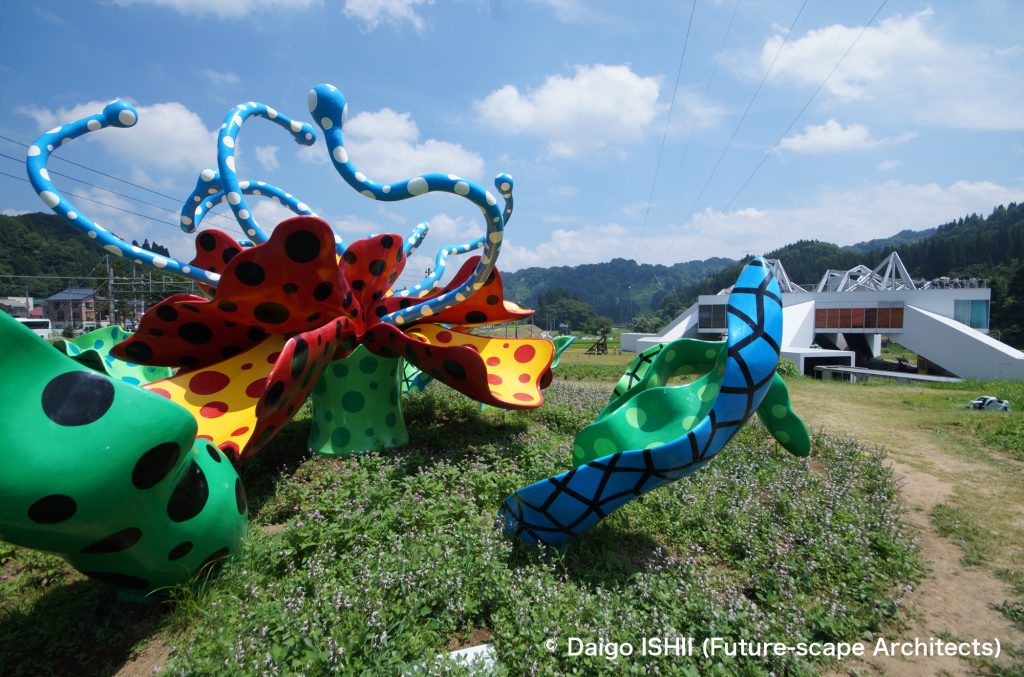
2003 MVRDV ”NOHBUTAI Snow-Land Agrarian Culture Center, Matsudai” (Now opening)
It was built in Matsudai as one of the centers for the art festival, the Stages, which were planned to be built in each of the the former municipalities before the merger. It stands next to Matsudai Station. The building is suspended in the air using five staircases as its structure, and the space underneath is an outdoor space that can be used even during heavy snowfall. The suspended second floor is used as a restaurant and exhibition spaces. Although the roof is not currently open to the public, the white steel frame on the roof modeled after a rocky mountain is the actual structure that supports the building. The detailed design was excuted by CLIP. The restaurant, Echigo Matsudai Satoyama Shokudo, was designed by Jean-Luc Vilmouth and serves a lunch buffet with a variety of delicious local dishes made with local ingredients.
English Website
https://maps.app.goo.gl/4UxMJQE4u2nX5DZk7
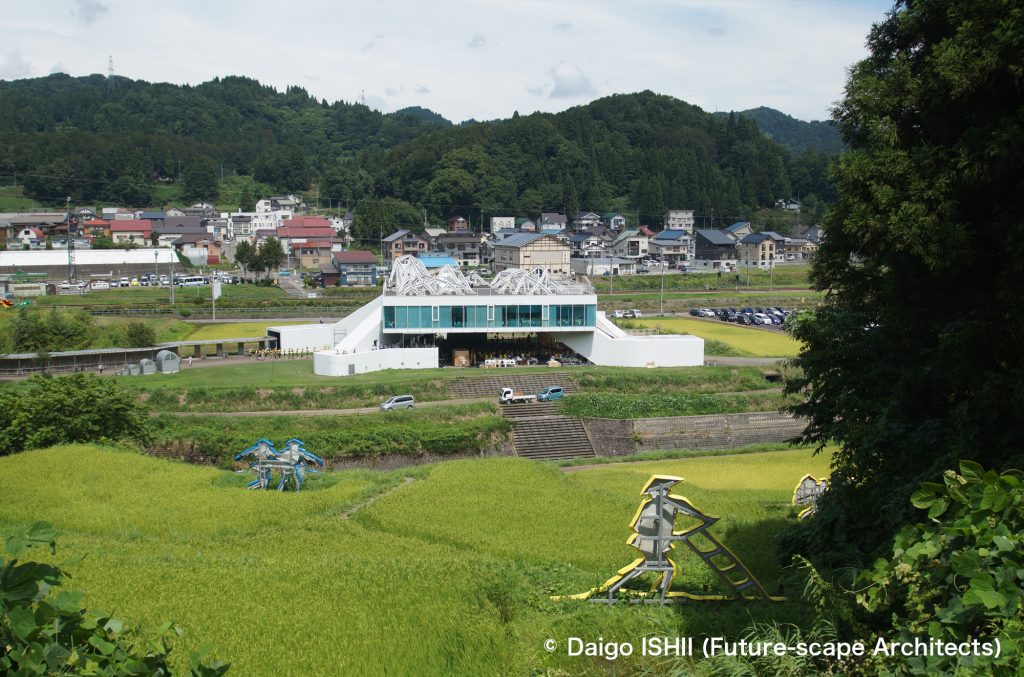
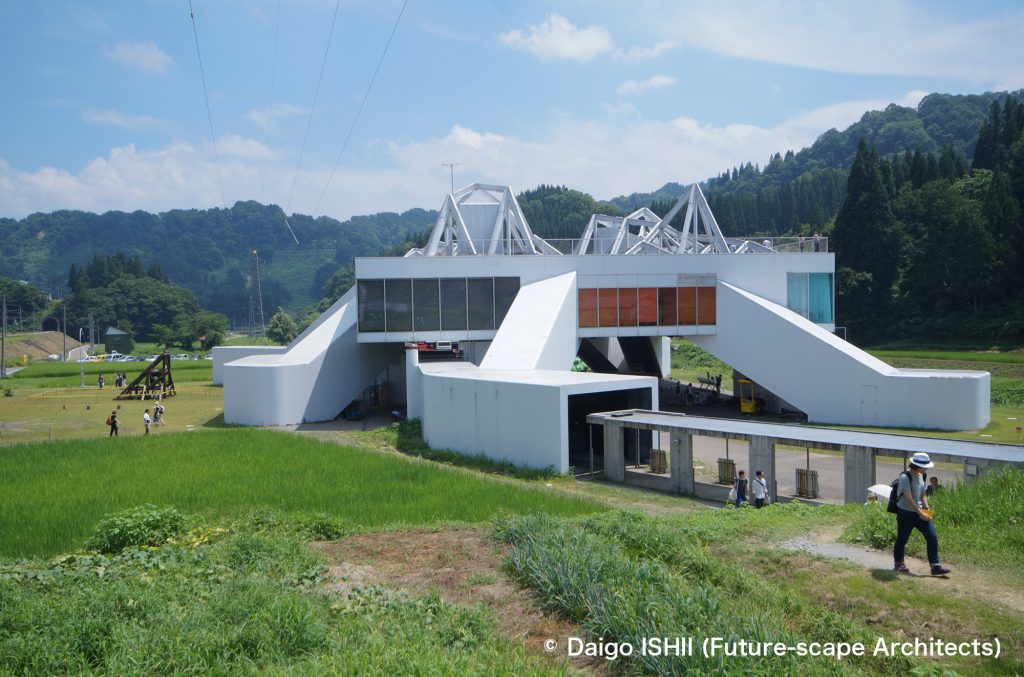
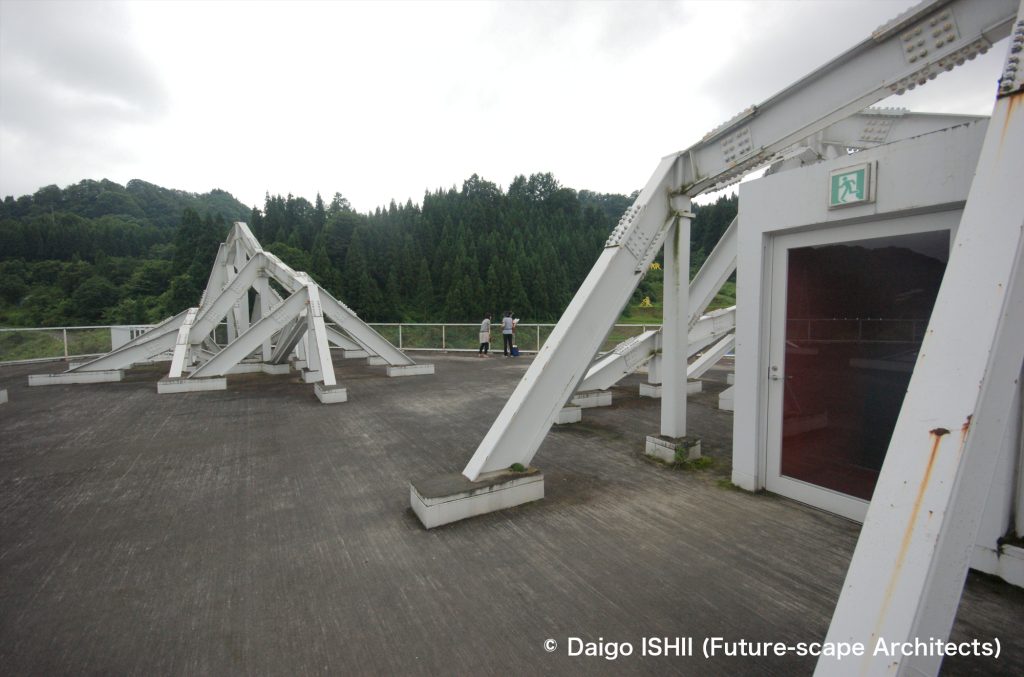
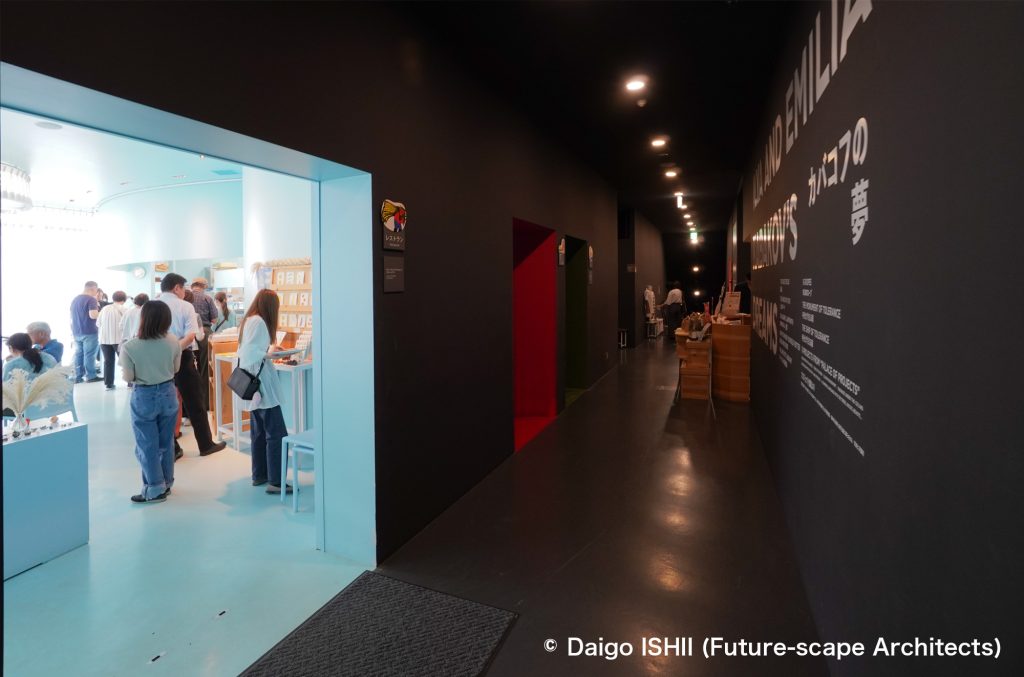
2003 Jean-Luc Vilmouth ”Café Reflet” (Now opening)
The light blue room in "Nohbutai" designed by MVRDV has been turned into a restaurant. The artist asked the residents to take photos of the scenery seen from their homes, arranged the photos by season in four circular lights, and created a mirrored table to reflect the photos. Now, the restaurant called as Echigo Matsudai Satoyama Shokudo serves a lunch buffet with a variety of delicious local dishes made with local ingredients.
English Website
https://maps.app.goo.gl/4UxMJQE4u2nX5DZk7
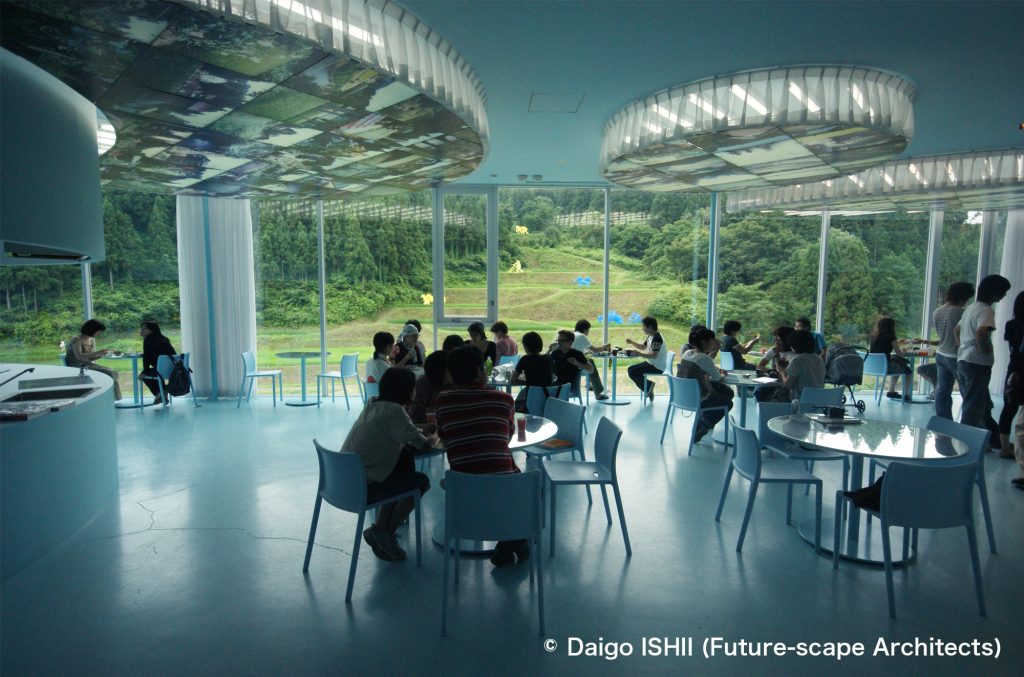
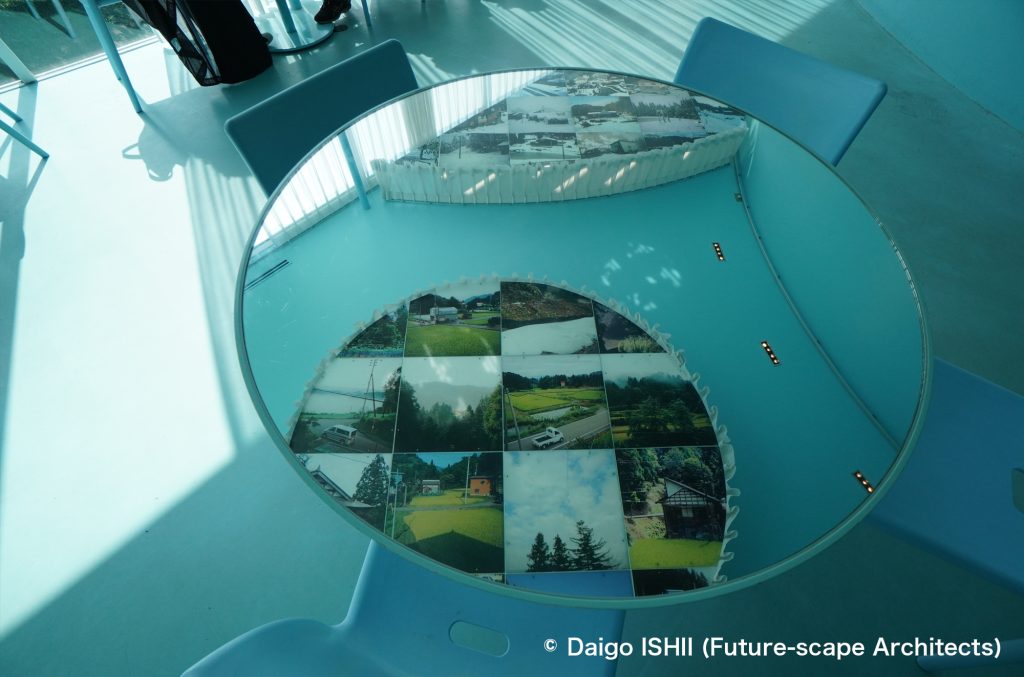
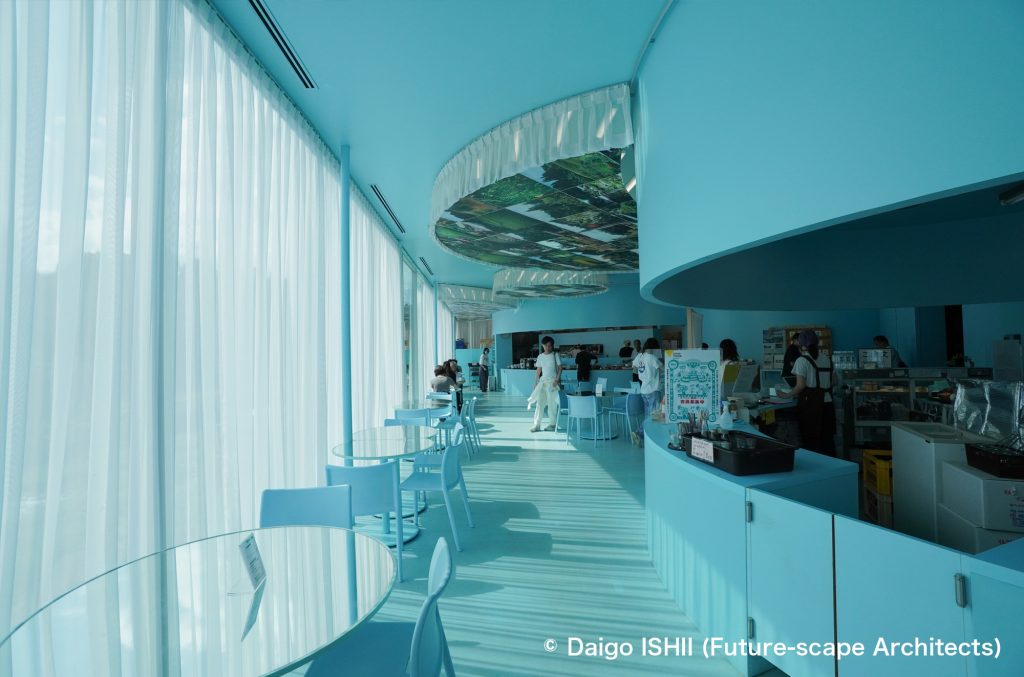
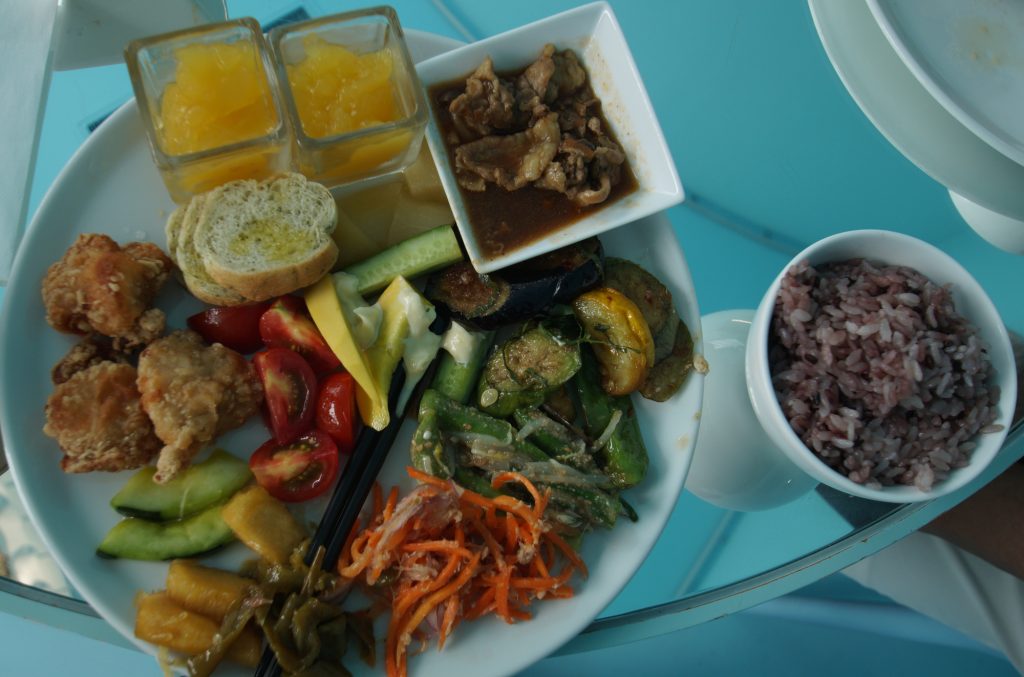
2003 Tatsuji USHIJIMA ”Unite / Move around / Workings” (No longer in existence)
The light green room in "Nohbutai" designed by MVRDV has been turned into a museum shop. If looked closely at the photo, you can see that the plates is floating in the air. 20 plates hung from the ceiling of the shop with wire carried products rotated and went in cycles slowly inside the shop with a mechanism installed on the ceiling. It was neither a simple cycle nor a simple repetition of time, but rather a subtle, non-reproducible repetition of time in which each plates was influenced by the other plates to determine their path of movement. It was a very innovative shop, which incorporated the existence of time with both characters of reproducibility and non-reproducibility, into a commercial device, so I was sad that it was removed and the shop turned into an exhibition space after the renovation.
English Website



2003 Tatsuo KAWAGUCHI ”Relation - Blackboard Classroom” (Now opening)
This work is installed inside NOHBUTAI. The entire classroom, from the floor to the walls, desks and globe, is made of blackboard, allowing visitors to doodle on it as they wish.
English Website
https://maps.app.goo.gl/4UxMJQE4u2nX5DZk7

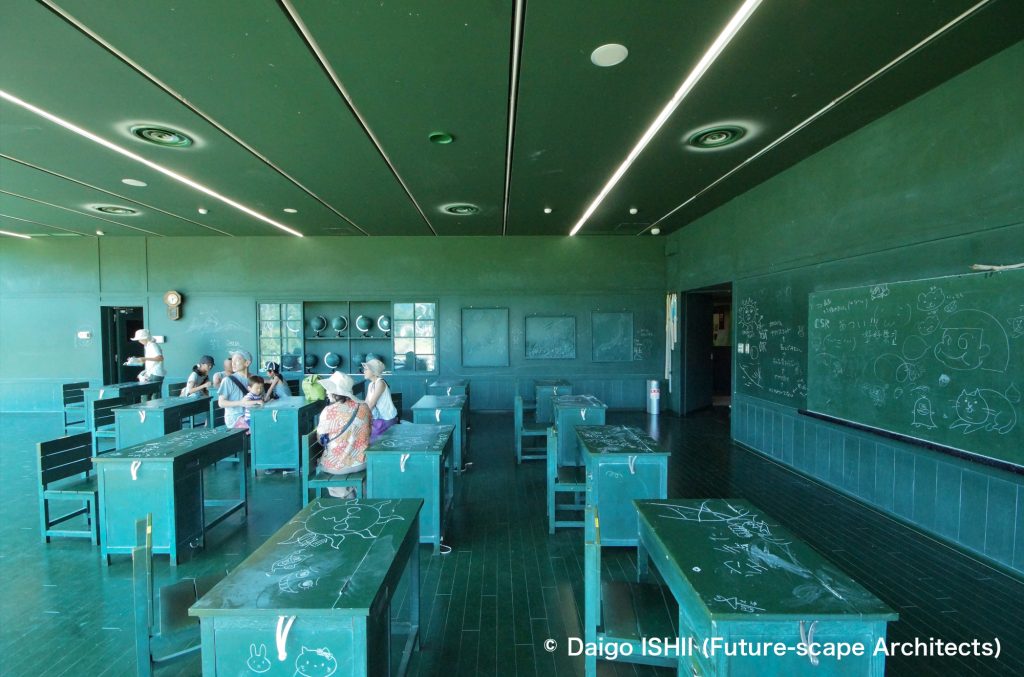

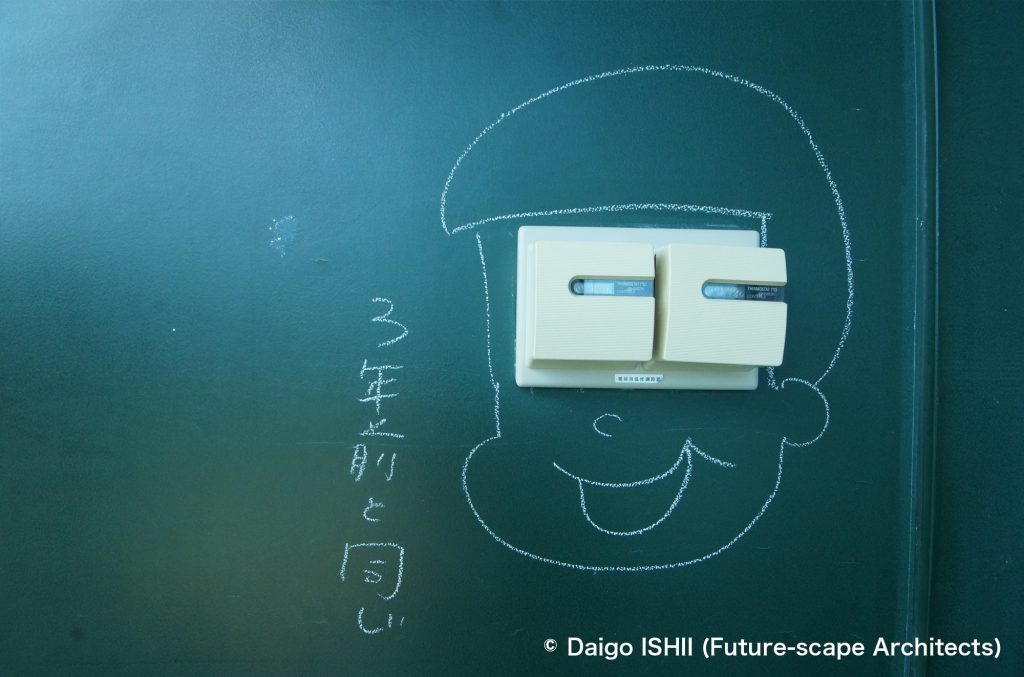
2003 Takaharu TEZUKA + Yui TEZUKA Echigo-Matsunoyama Museum of Natural Science “Kyororo” (Now opening)
It was built in Matsunoyama as one of the centers for the art festival, the Stages, which were planned to be built in each of the the former municipalities before the merger.This educational and training facility, which also doubles as a natural history museum, stands near Matsunoyama's famous beech forest, Bijinbayashi. The linear architecture, which resembles a walking path, stretches out over a long distance, culminating in a tower. The exterior walls are made of fully welded weather-resistant steel plates, and the windows are made of thick acrylic panels that can withstand the pressure of snow, allowing visitors to observe the cross-section of snow in the winter.
English Website
https://maps.app.goo.gl/B9DwaFiMcS59XS9E9
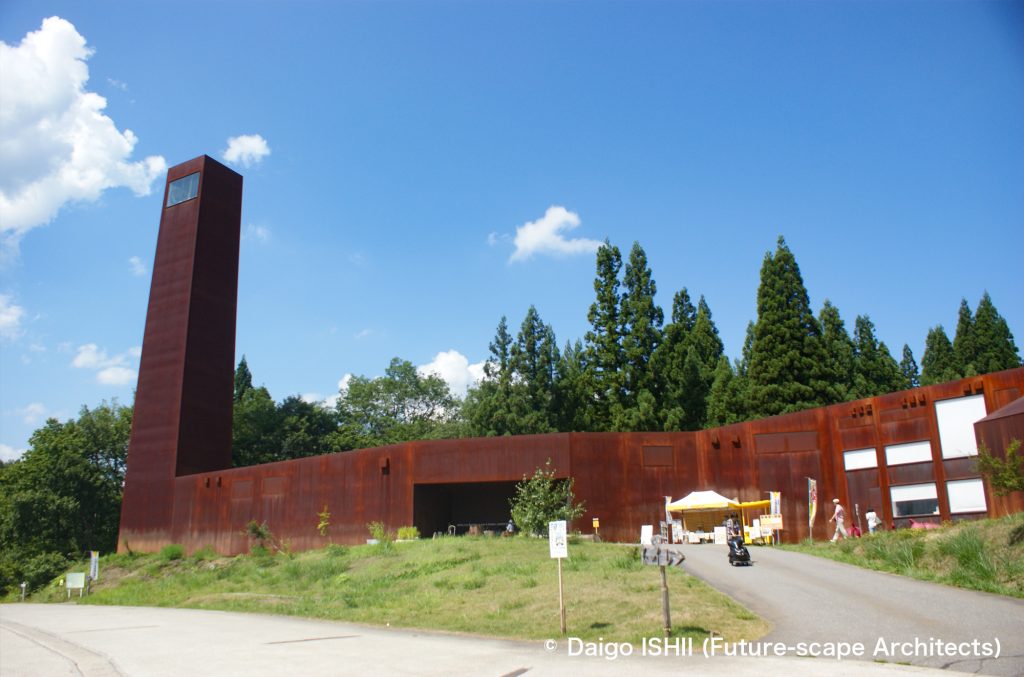
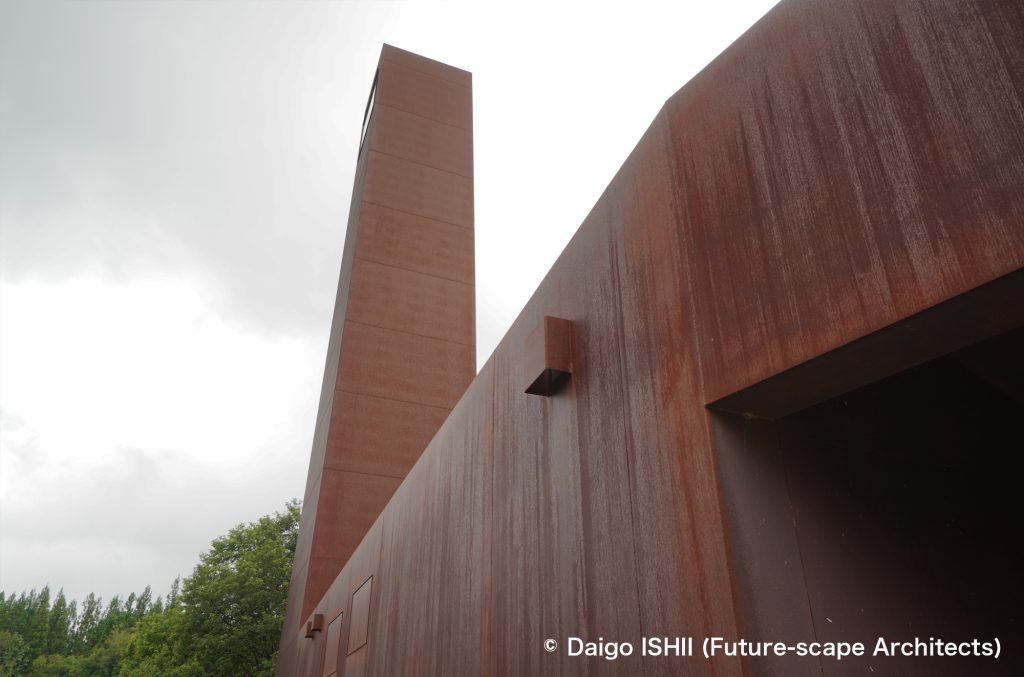
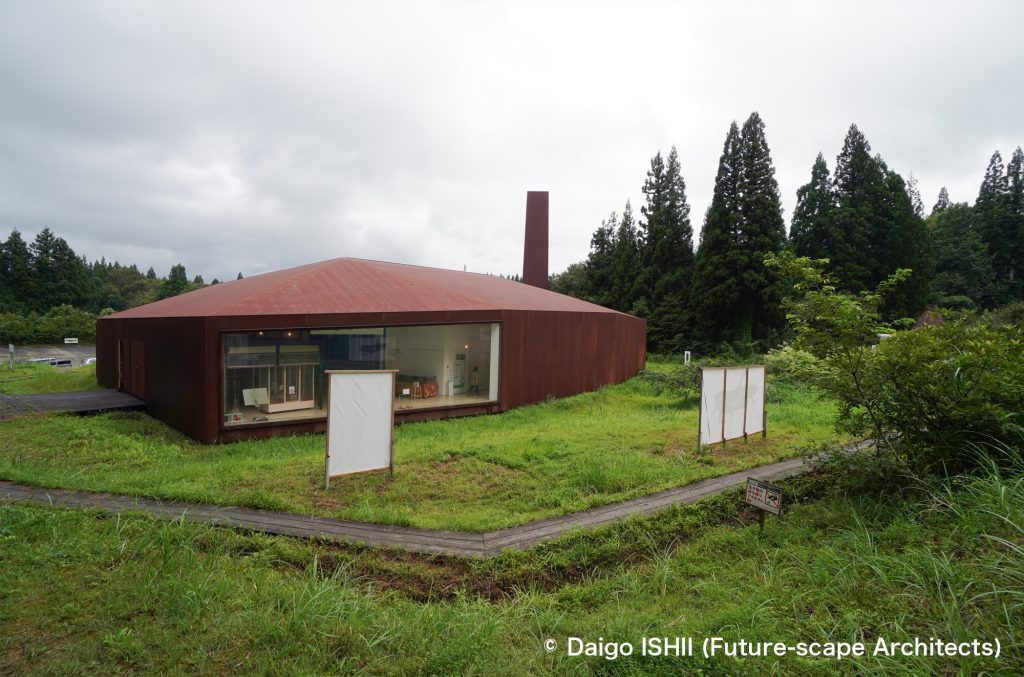
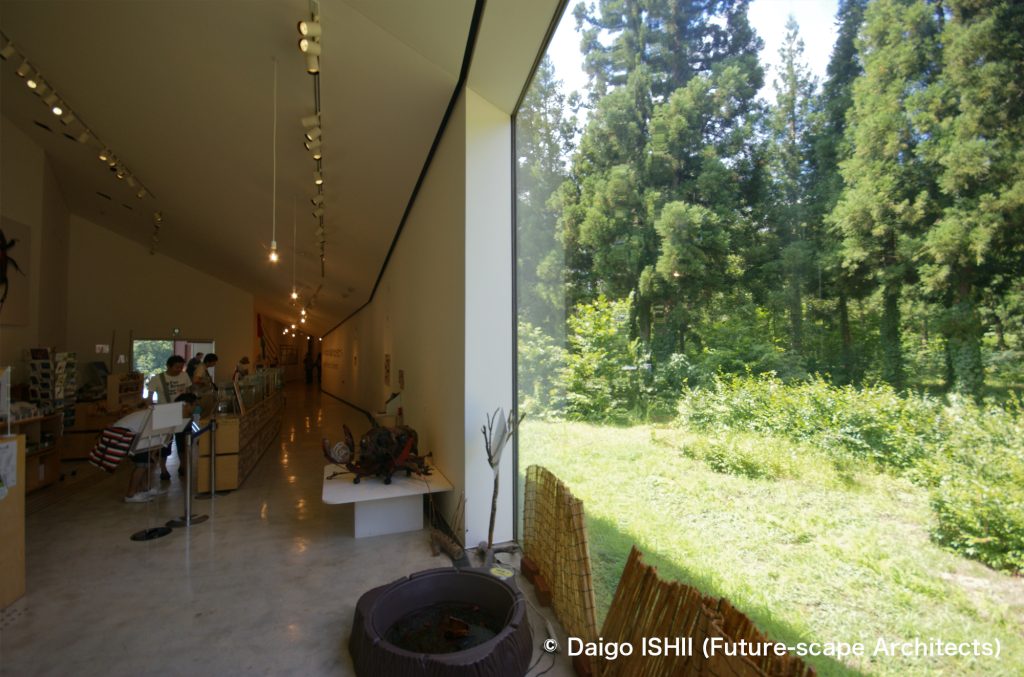
2003 Hiroshi HARA + ATELIERΦ ”Kinare” (Now opening)
It was built in Tokamachi as one of the centers for the art festival, the Stages, which were planned in each of the the former municipalities before the merger. A large pond is placed in the center of the square plan, surrounded by rooms on all four sides, creating a quiet space isolated from the hustle and bustle of downtown Tokamachi. In 2003 when it opened, the 2nd floor was a showroom for Tokamachi's textile industry, but in 2012 it became the Museum on Echigo-Tsumari (MonET).
English Website
https://maps.app.goo.gl/NQTYE8pkr1Ybtjf99

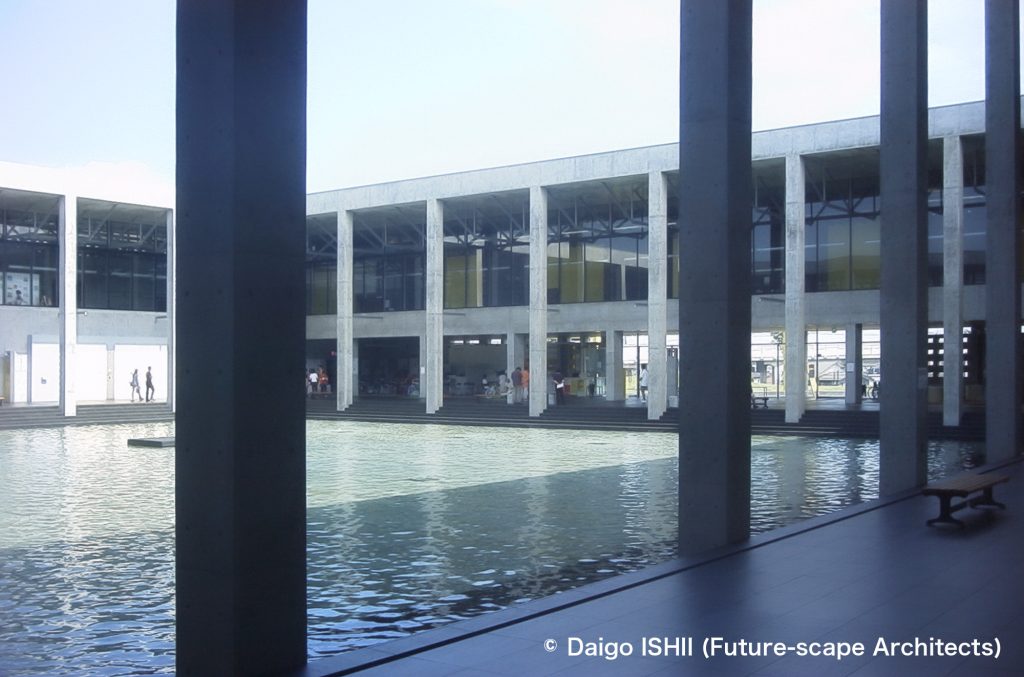
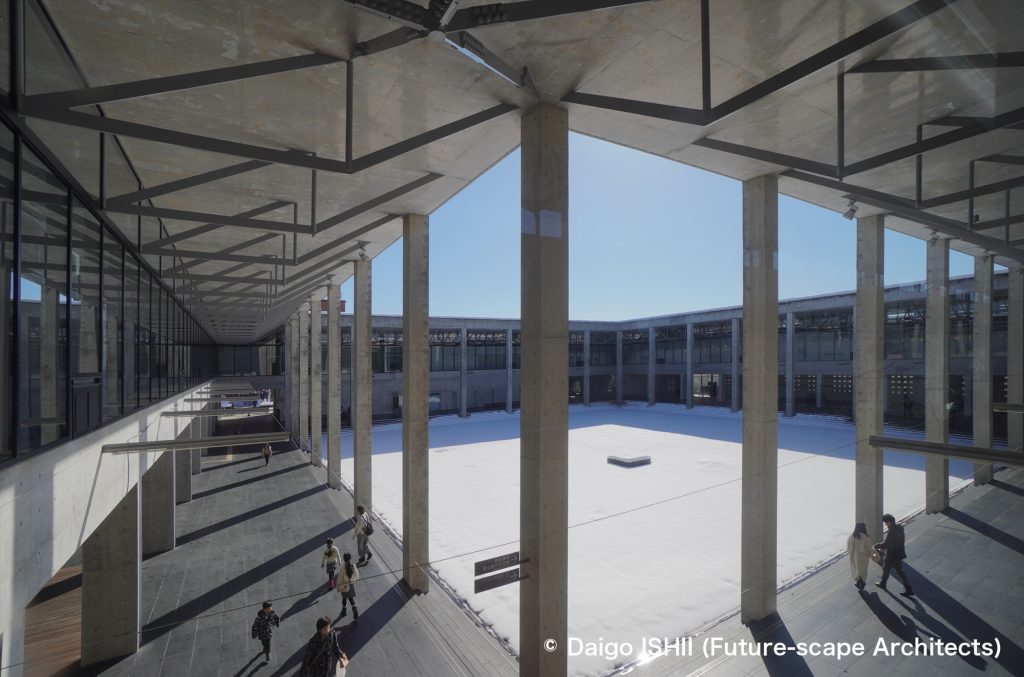
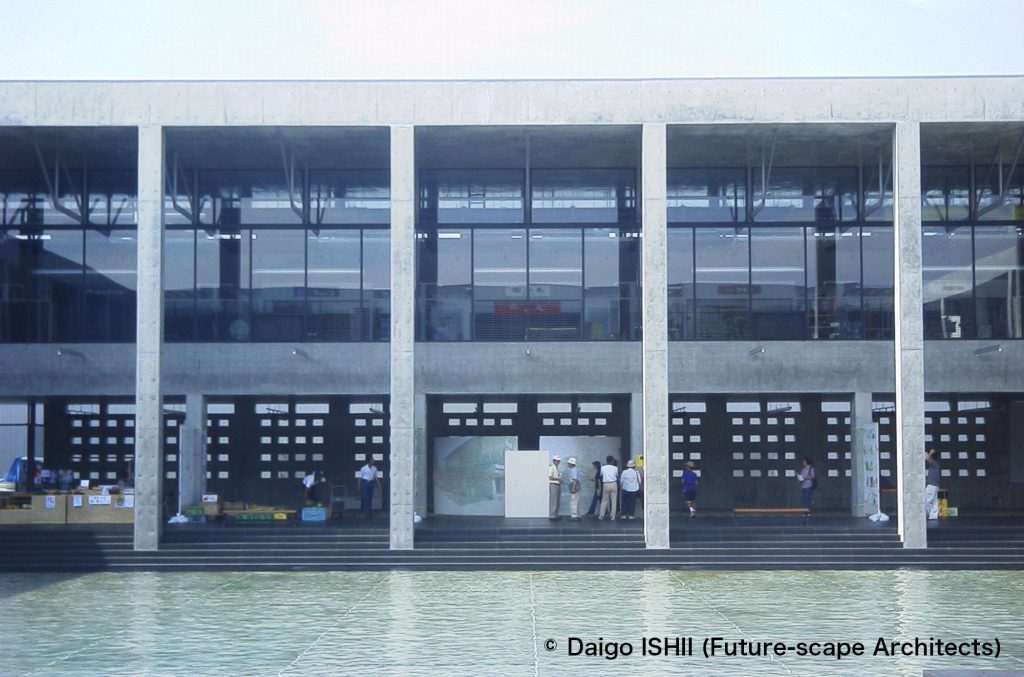
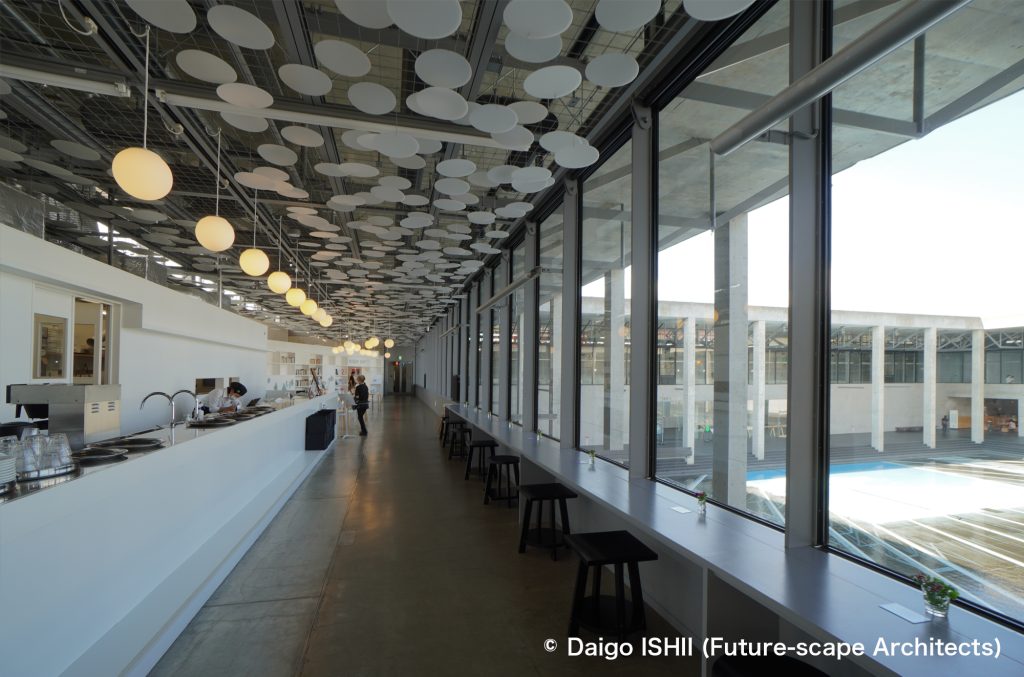
2003 John KORMELING+Katsumi ASABA ”Step in Plan” (Now opening except winter)
A huge signboard stands at the entrance to Matsunoyama district. A collage of Matsunoyama's famous places' name serves as an observatory. The architecte is attractive, but there is not much of a view from the kiosk halfway up, and the signboard blocks the view from the top terrace, so it is an observatory to enjoy the sense to get a glimpse of the scenery through the gaps in the signboard.
English Website
https://maps.app.goo.gl/tZ75KwcDTXwH2cqa9

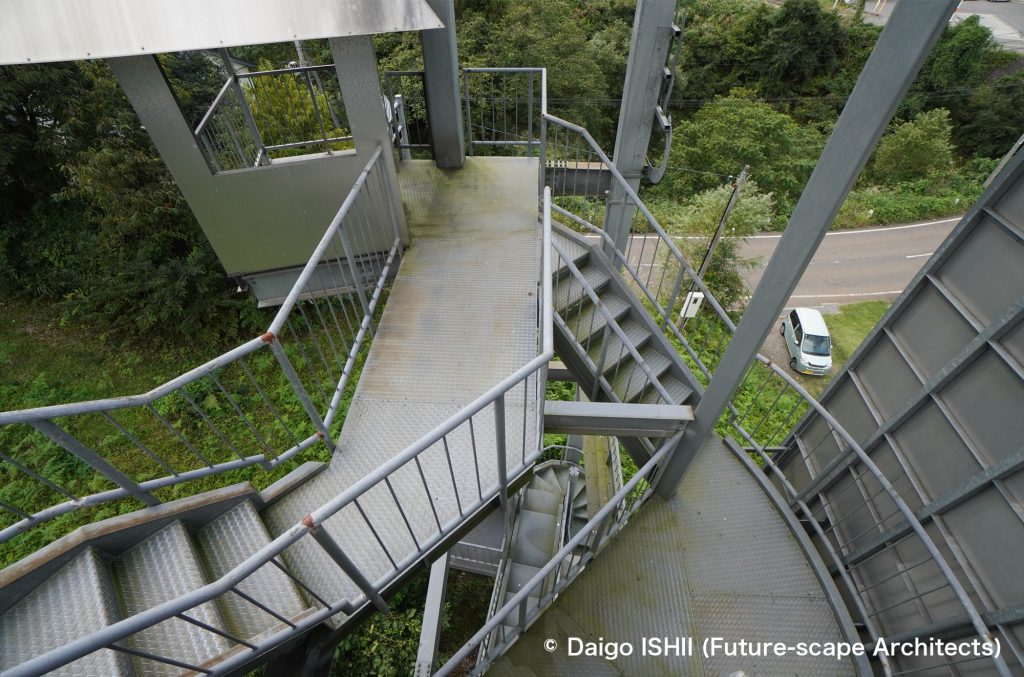
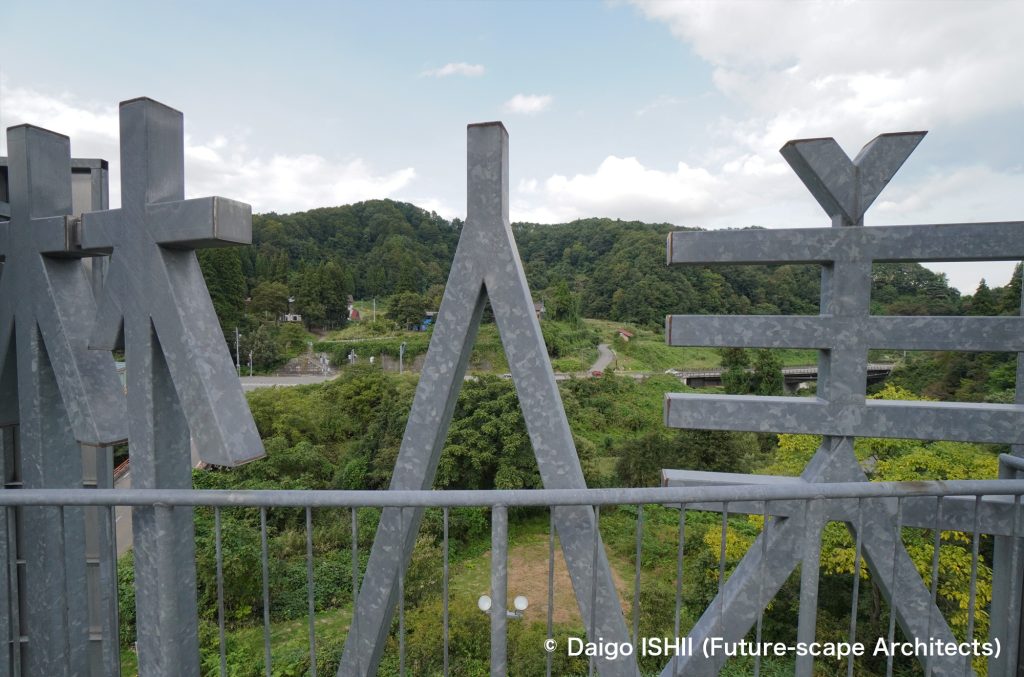
2003 Lauren Berkowitz ”Harvest House” (Closed)
This work was installed inside an old house in Uwayu community. Using Tsumari products such as rice and textiles, and charcoal used in daily life, a space with a rice floor or straw walls was created that conveys the memories of this place.
English Website
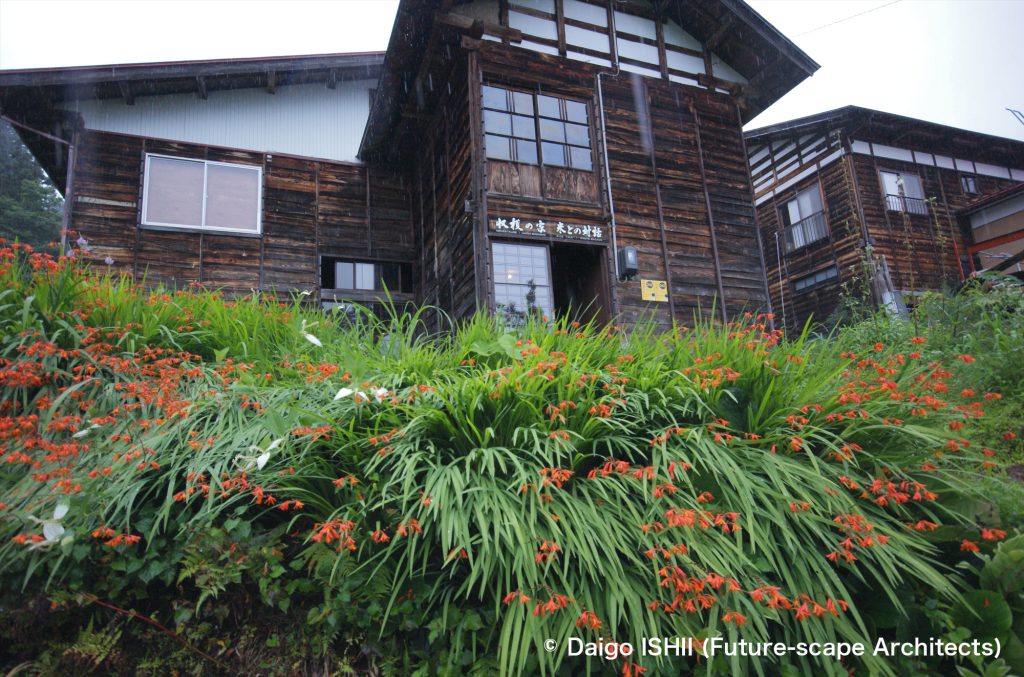

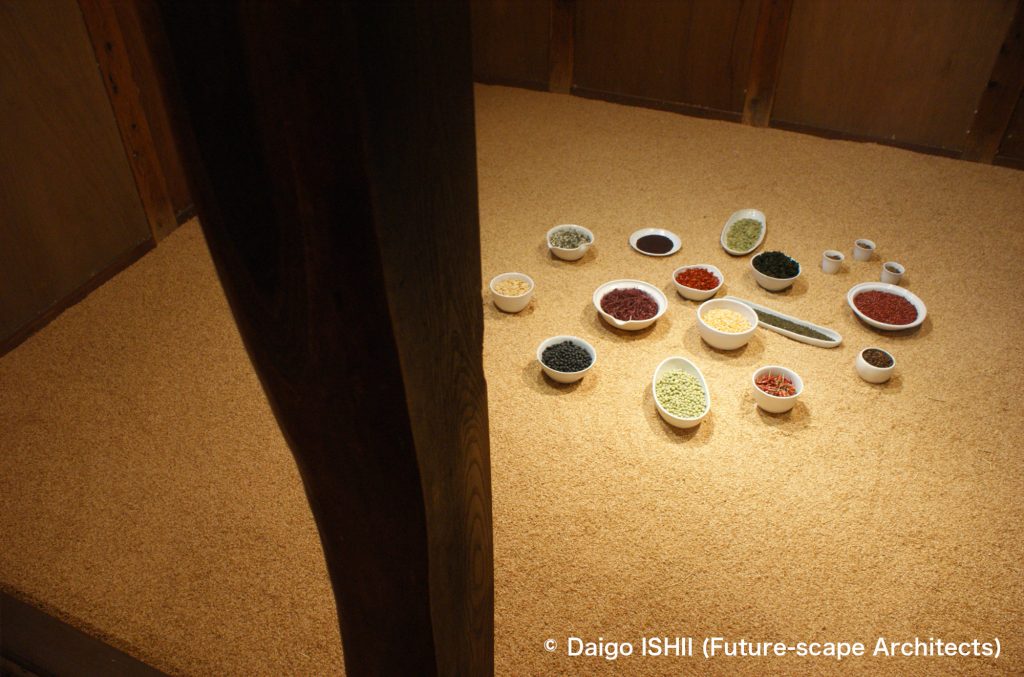
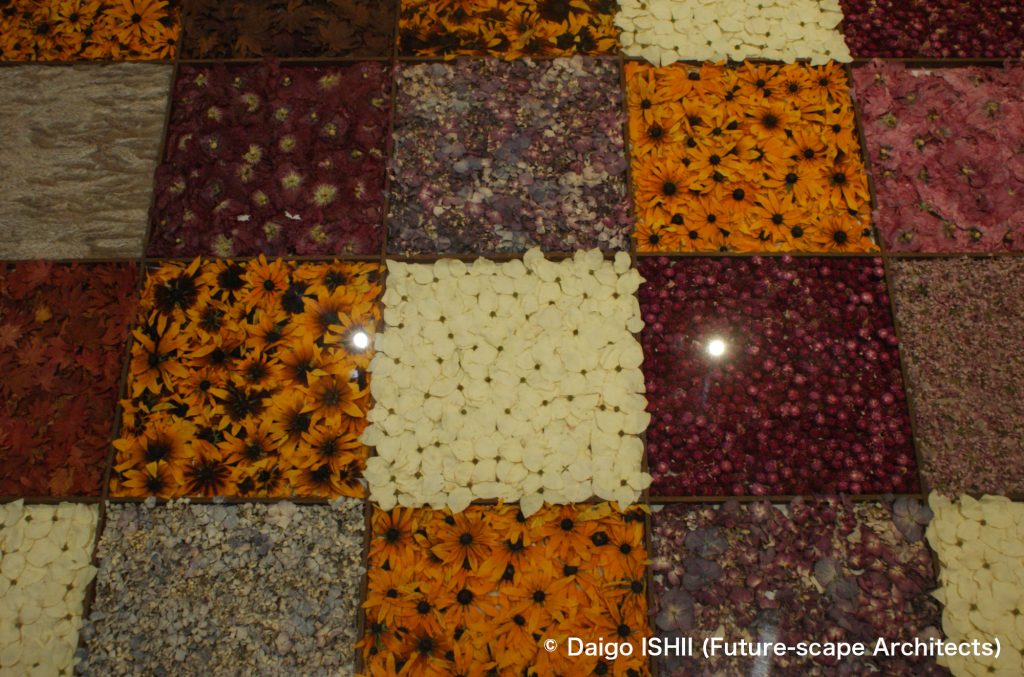
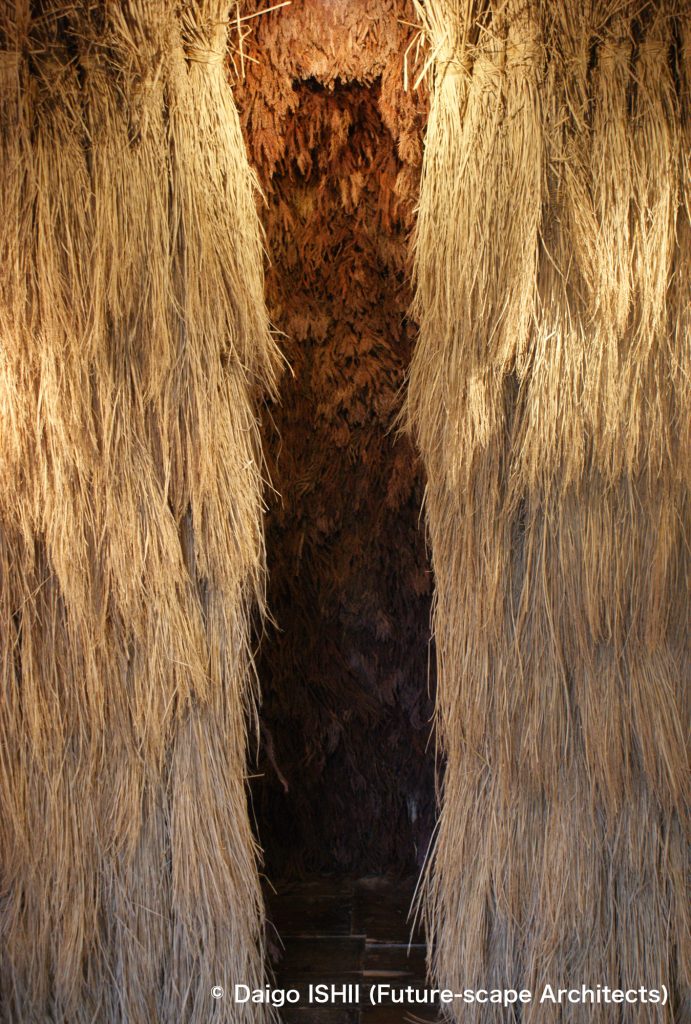
2003 Robyn Backen ”Rice Talk” (Closed)
This work was installed in the dark attic of an old house in the Uwayu community. Traditional tatami mats, in which optical fibers were woven, were laid out inside the room, and the optical fibers converted a haiku poem written by Kobayashi Issa in 1794 into Morse code and emitted it. The haiku was also displayed in letters made of light holes in the dark, blocked-off window.
English Website

2003 Janet Laurence ”Elixir” (Now opening except winter)
In an old storehouse in the Uwayu community, Matsunoyama, locally harvested plants are soaked in shochu liquor and displayed. Explanations of the plants from ancient herbal medicine books are written on glass panels on the wall, and the plants themselves are hung next to them. The landscape of the area, which the plants symbolize, is interpreted from a broad cultural perspective.
English Website
https://maps.app.goo.gl/tZ75KwcDTXwH2cqa9


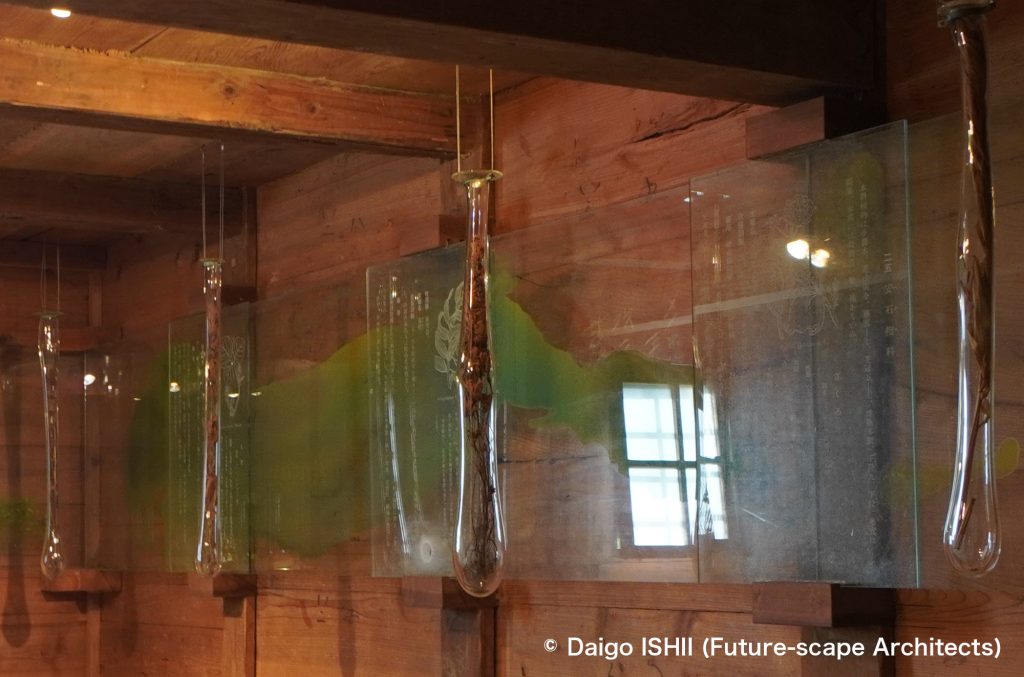
2006 Echigo-Tsumari Art Triennale 2006
2006 Akiko UTSUMI ”For Lots of Lost Windows” (Now opening except winter)
A window that frames the scenery of Tsumari was built in a park on a small river terrace in Nakazato. The existence of the window allows the viewer to rediscover the scenery.
English Website
https://maps.app.goo.gl/Pzbrg2t33SwaQgS77
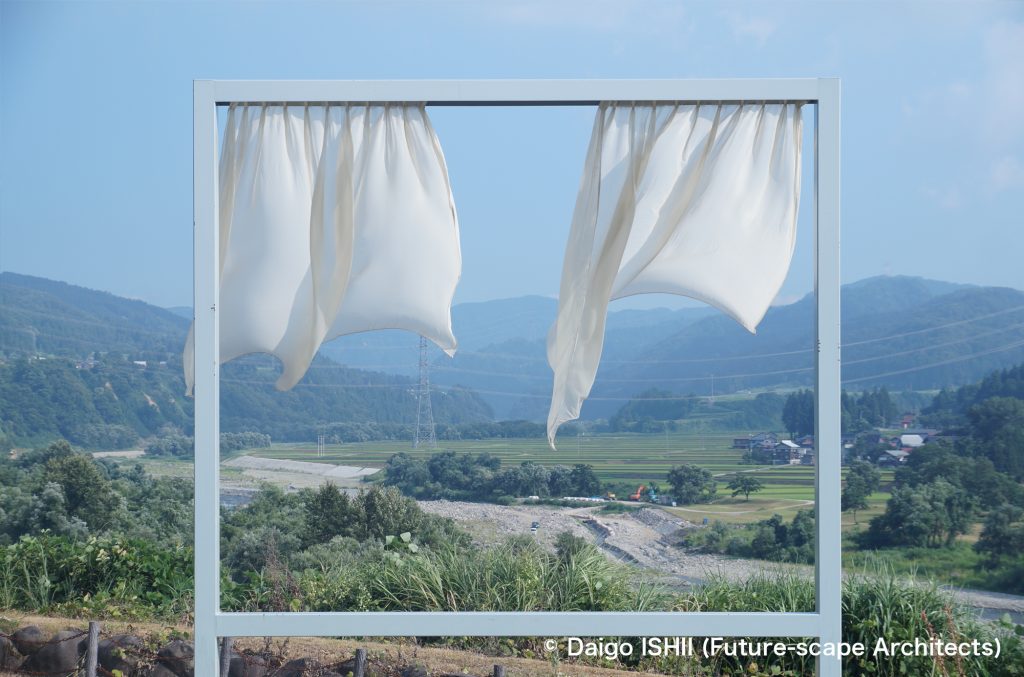
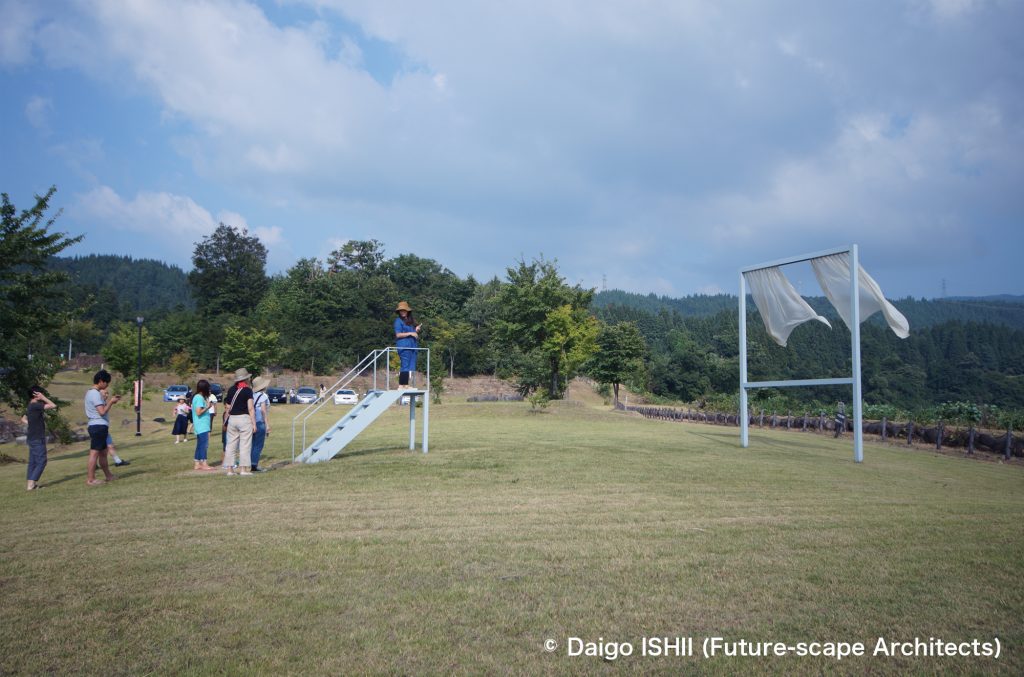
2006 Koichi SAKAO ”Green house” (Closed in 2024)
Using the frottage technique, artists and visitors will copy fallen leaves onto paper with green colored pencils and install them inside the room to create a space covered in green. The project began in 2006 and has continued in its current location after changing its location once, but will close in 2024 due to the deterioration of the building.
English Website
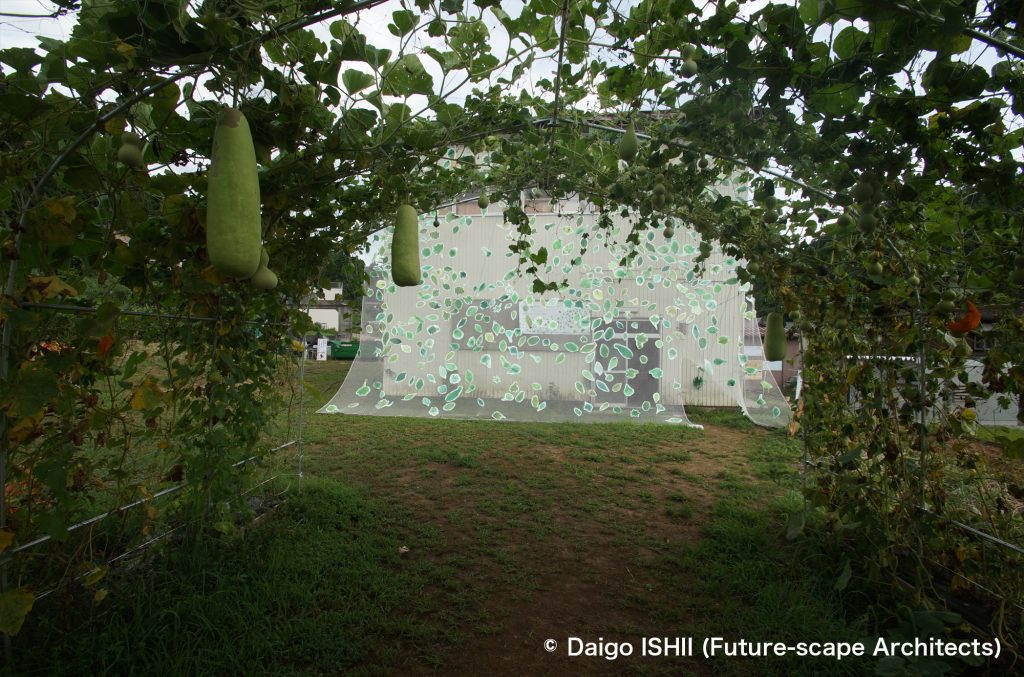
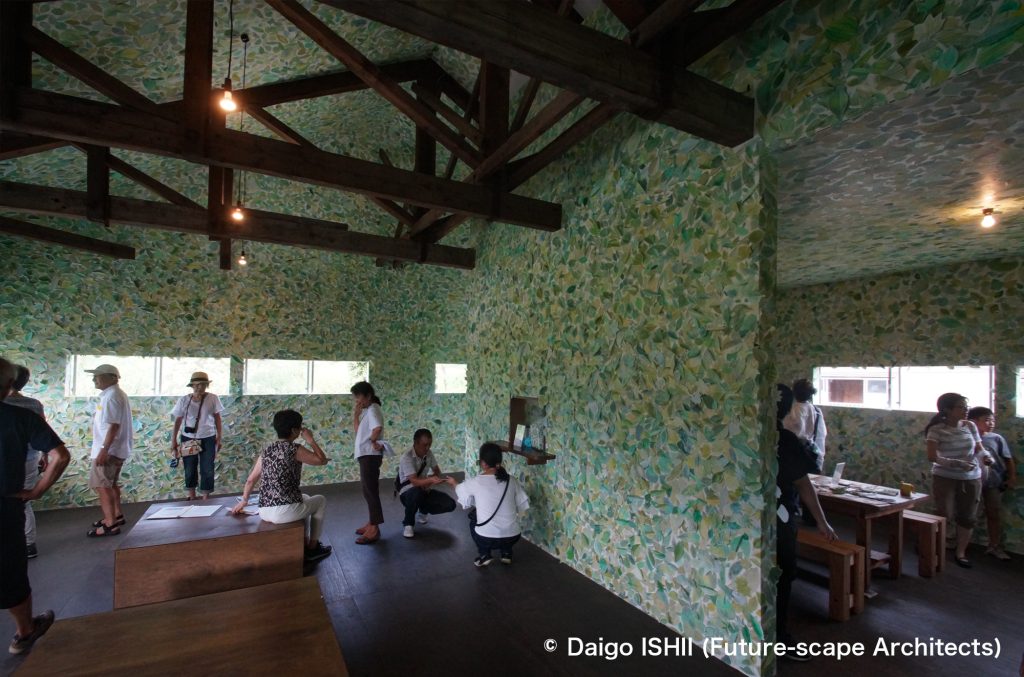
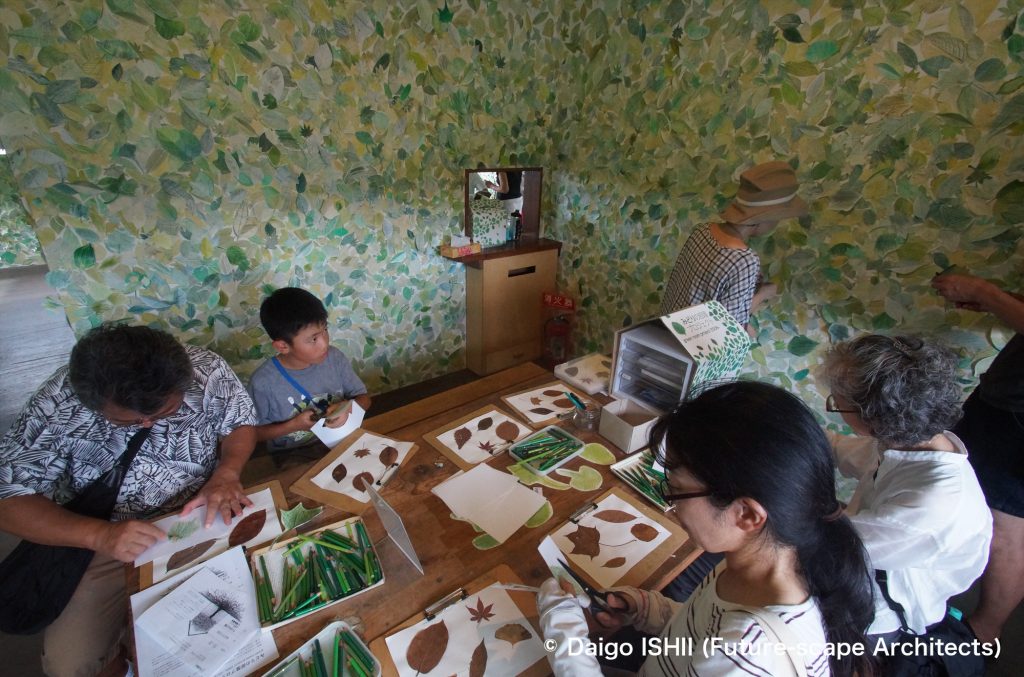
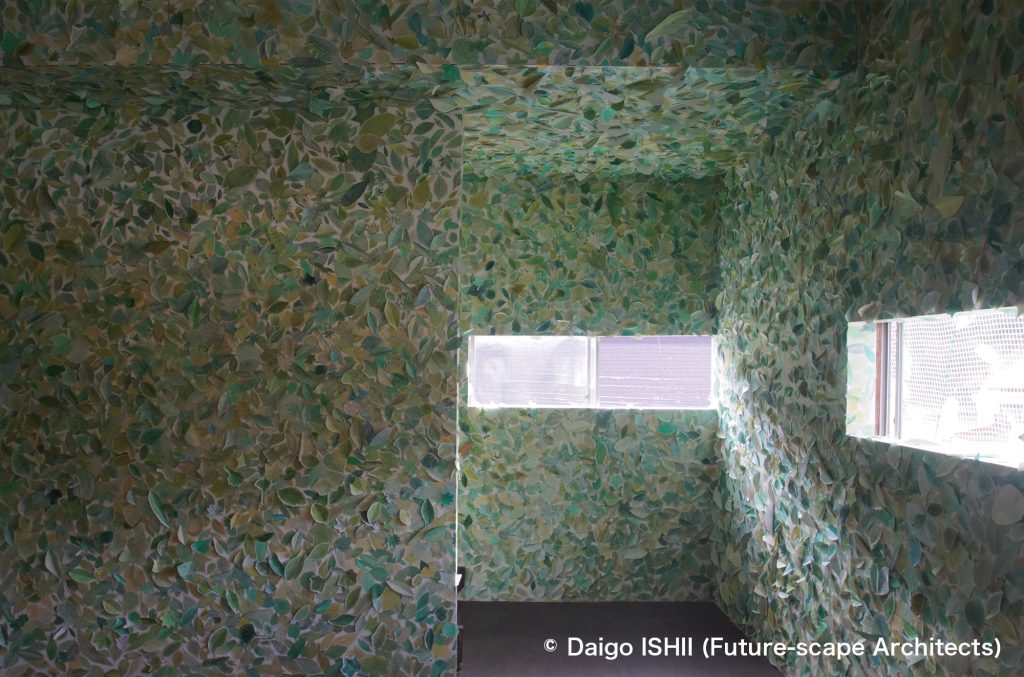
2006 Ubusuna House (Now opening except winter)
A private house built in 1924 in the Ganyu community has been renovated by various potters using pottery. Local women run the place as a restaurant, and it has become one of the successful examples of community businesses created by the Echigo-Tsumari Art Triennale. The renovation design of the architecture was done by Archtiect Kunihiro Ando.
English Website
https://maps.app.goo.gl/ArcAKdB9nDJbLBN59
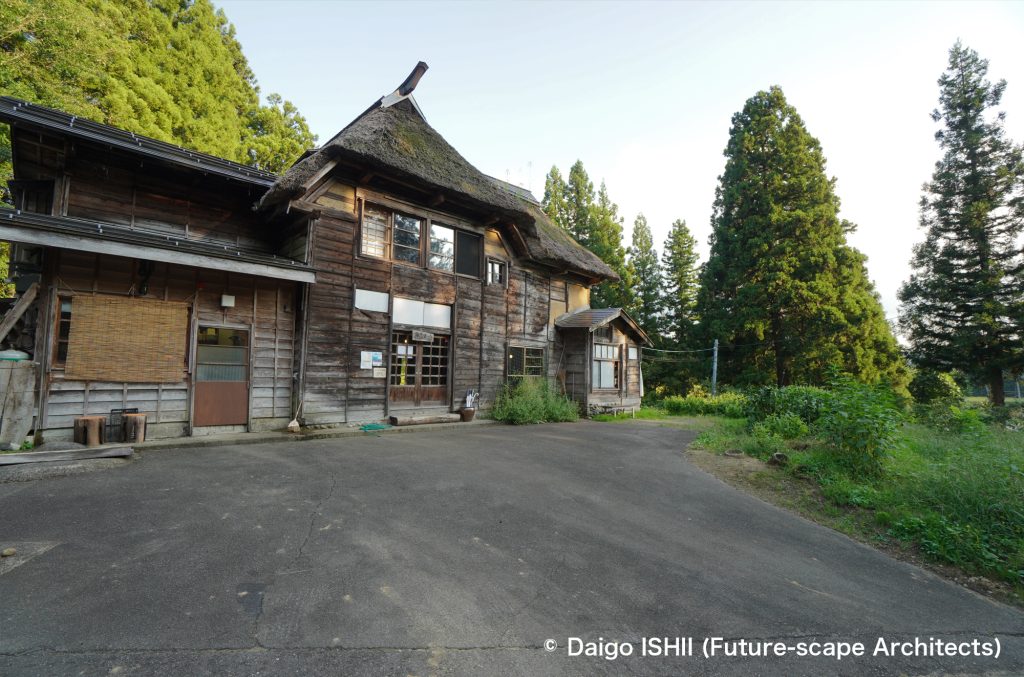
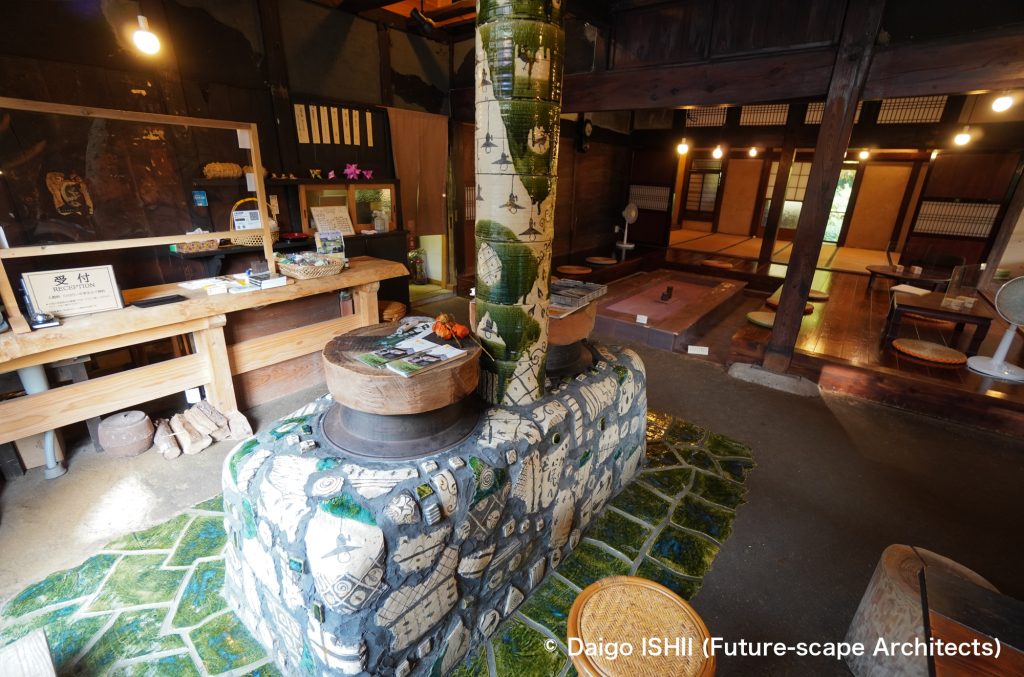
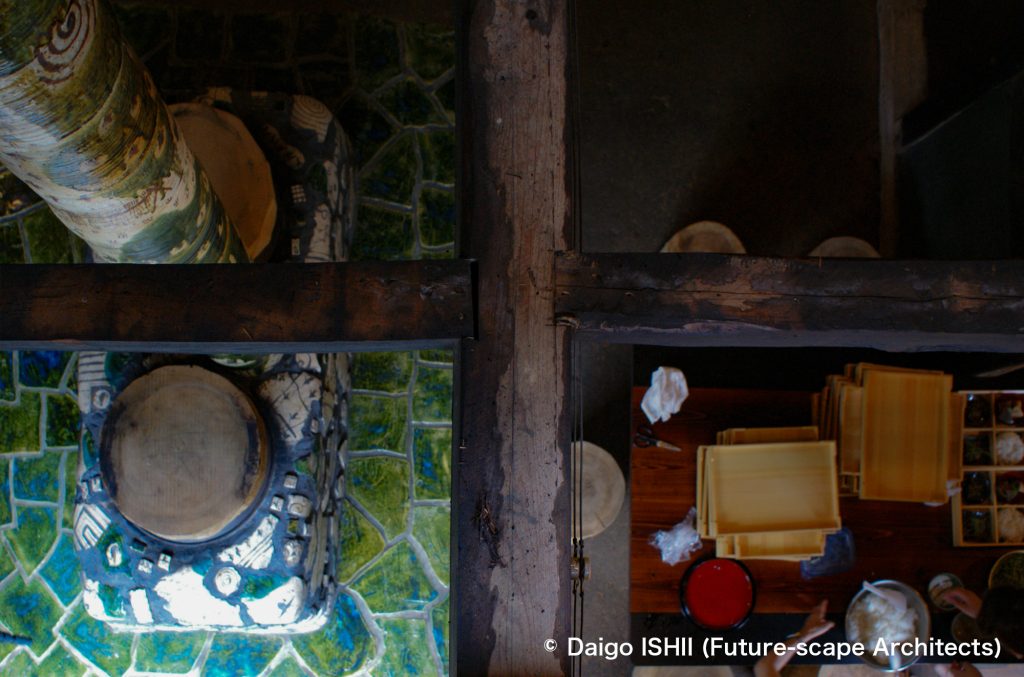
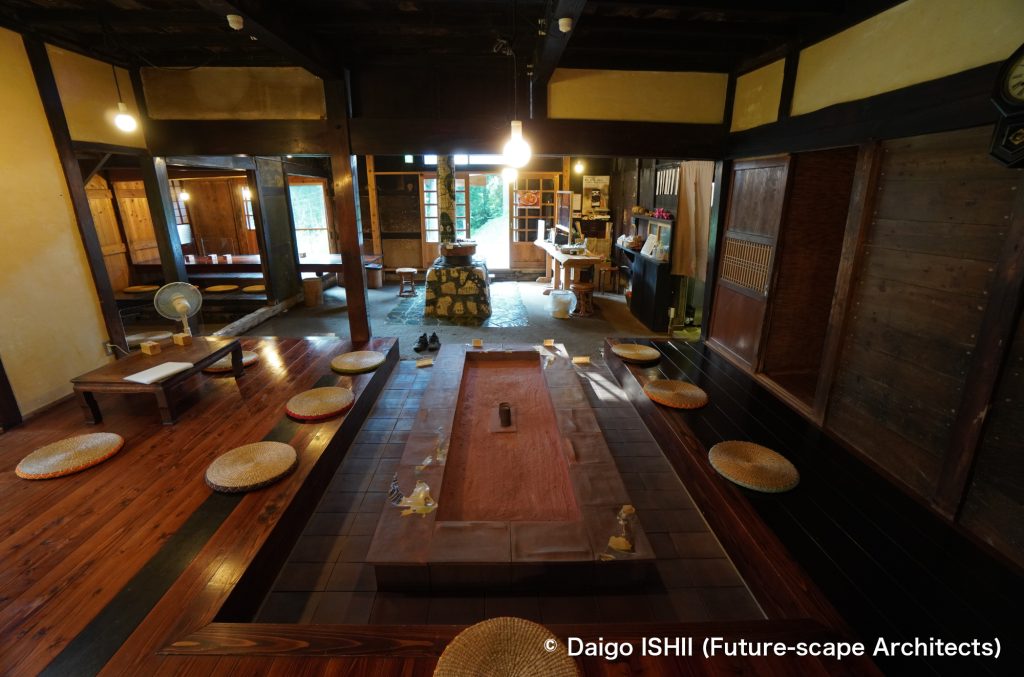
2006 Harumi YUKUTAKE ”Restructure” (No longer in existence)
A house covered in mirrors stands in a field in the Atema district. Each mirror is individually handcrafted by then artist and reflects nature and the scenery. When the wind blows, those are swaying.
English Website
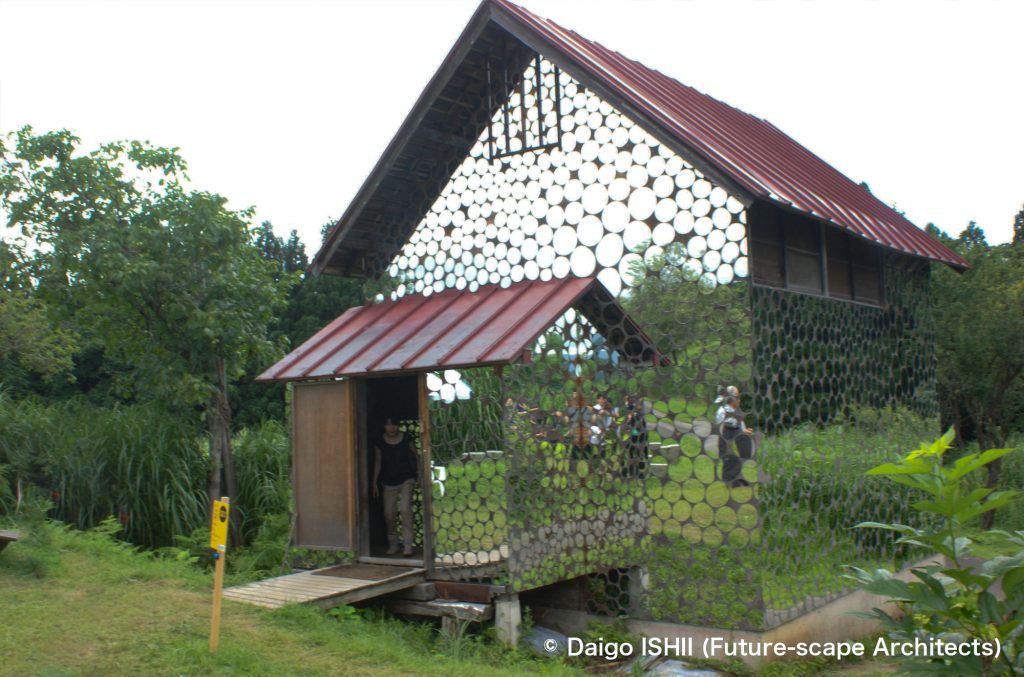
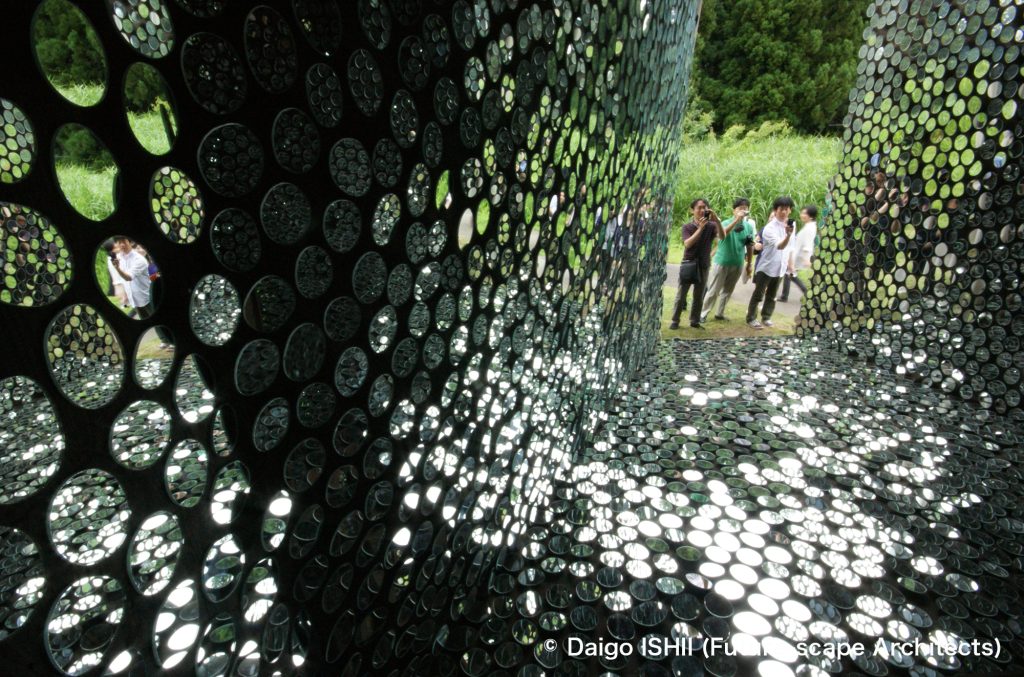
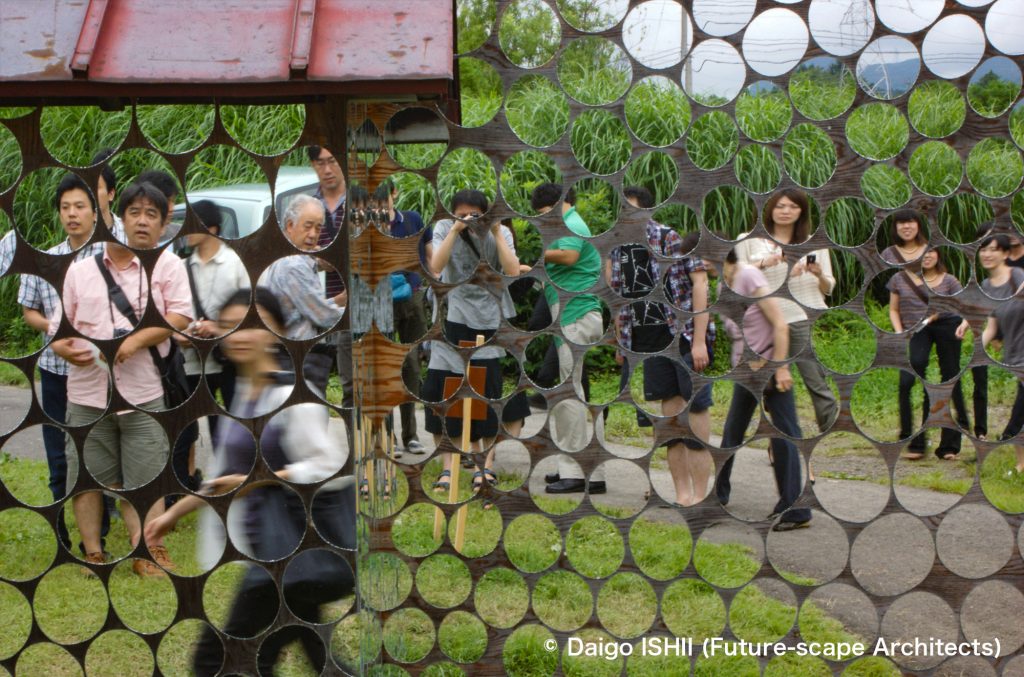
2006 Bili BIDJOCKA ”Tamugi's Book” (No longer in existence)
A library was created in a vacant house in the Tamugi community. Blank books were placed there, and residents and visitors wrote about their travels and the local area to create a library that collects local memories. A place filled with a tranquil atmosphere perfect for contemplation appeared.
English Website
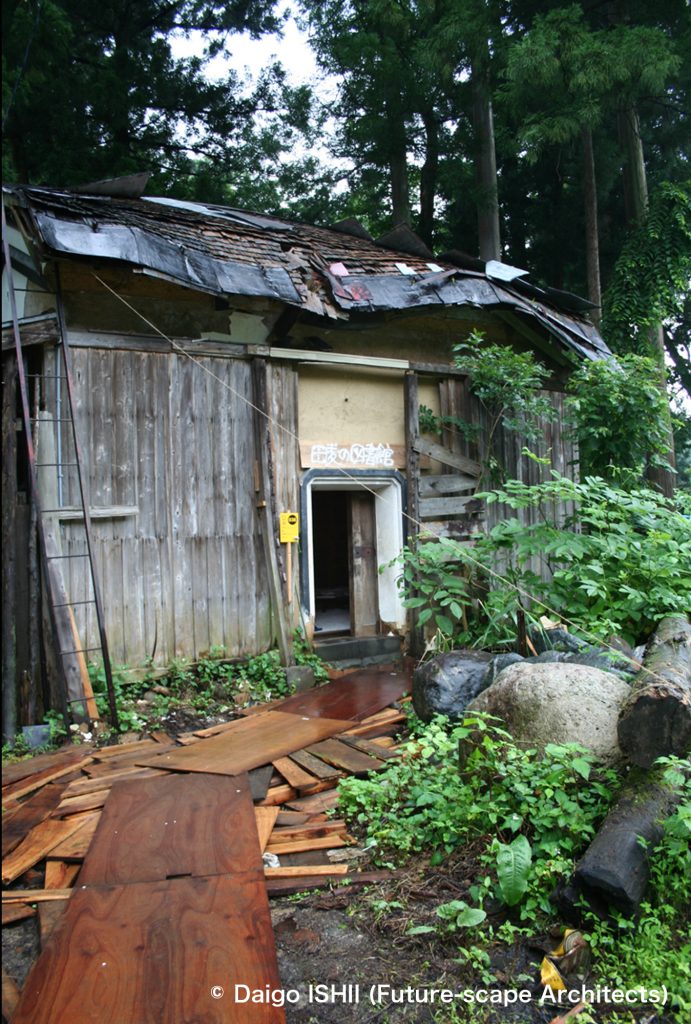
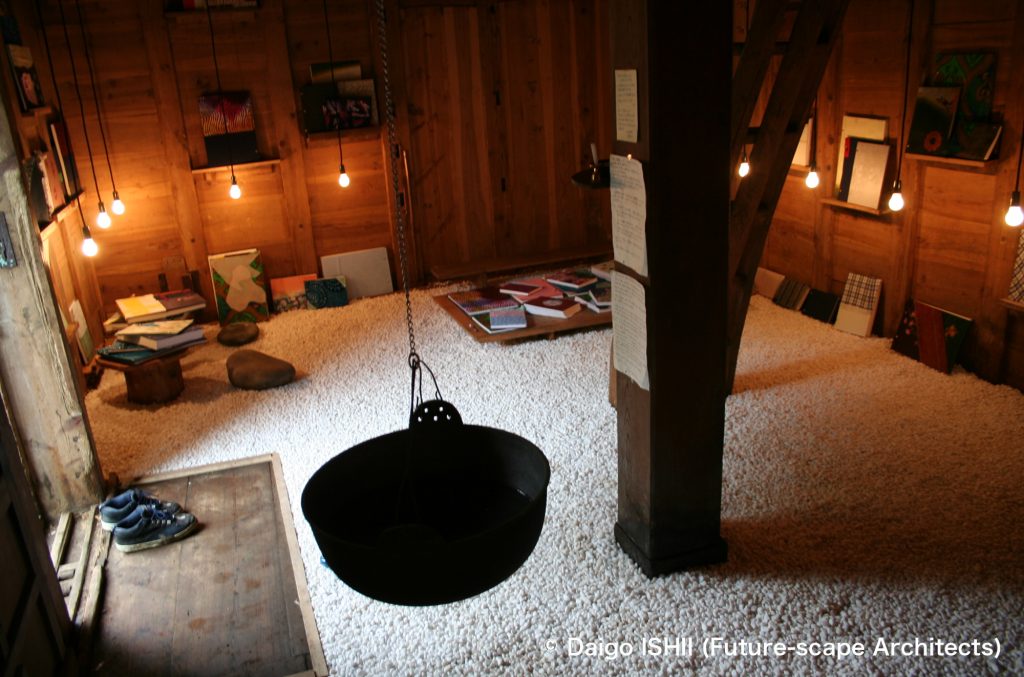
2006 Hisako SUGIURA + Tomoya SUGIURA + Sugiura Laboratory, Showa Women's University ”Gift in Gift” (No longer in existence)
In a section of a residential area where houses were demolished due to the Chuetsu earthquake, they created a snow world made of lace to convey the memory of the houses that stood there.
English Website
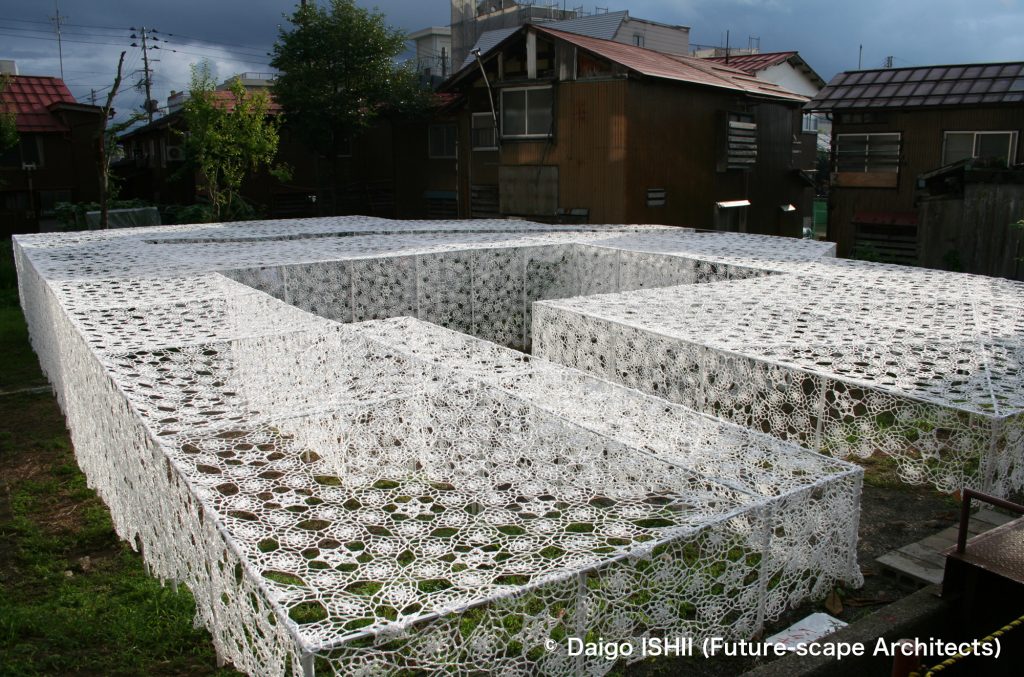
2006 Moataz NASR ”Dreams” (No longer in existence)
This work was installed at Fukutake House, which used the closed Nakayama Elementary School in Nakayama community, Tokamachi. When visitors enter the giant kaleidoscope, which has a motif of the triangular warehouses found in the area, they become one with the scenery projected onto the kaleidoscope, which was taken from photographs of houses in the community.
English Website
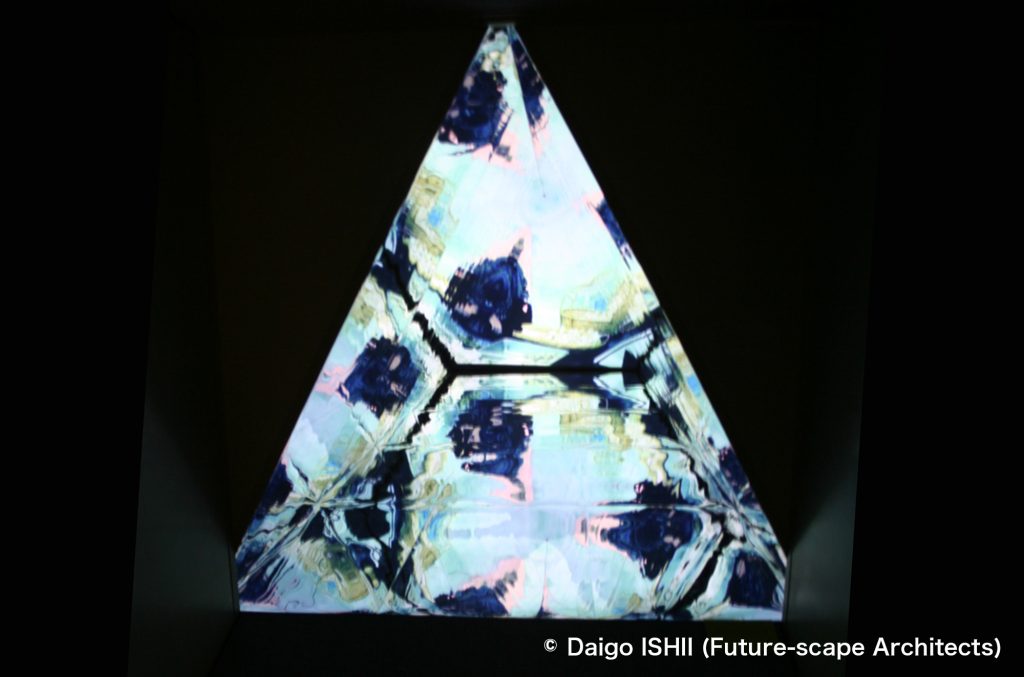
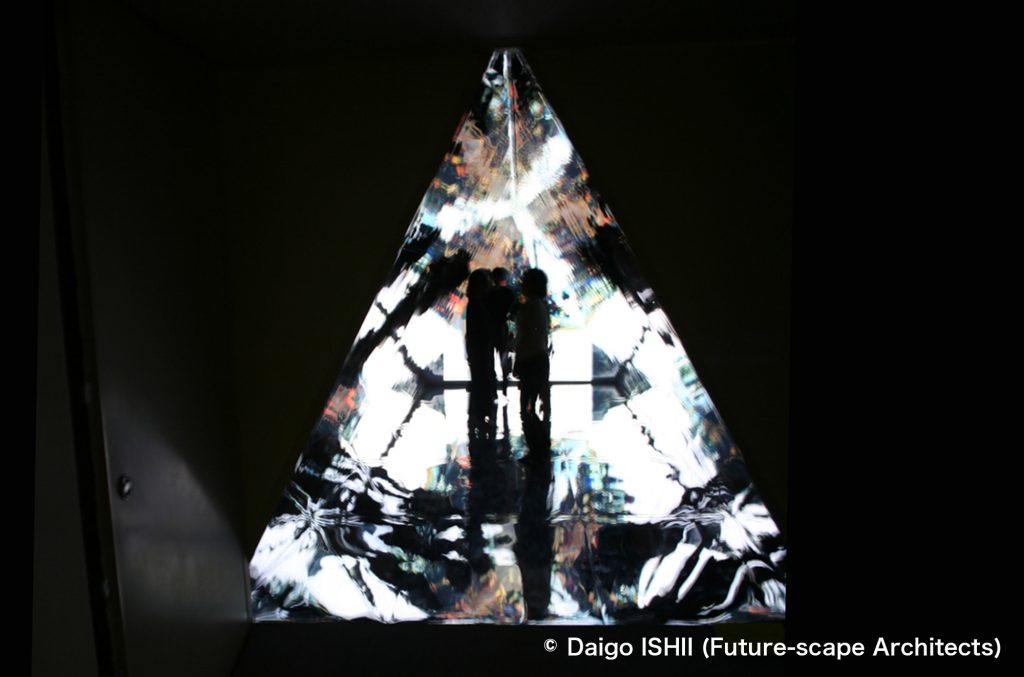
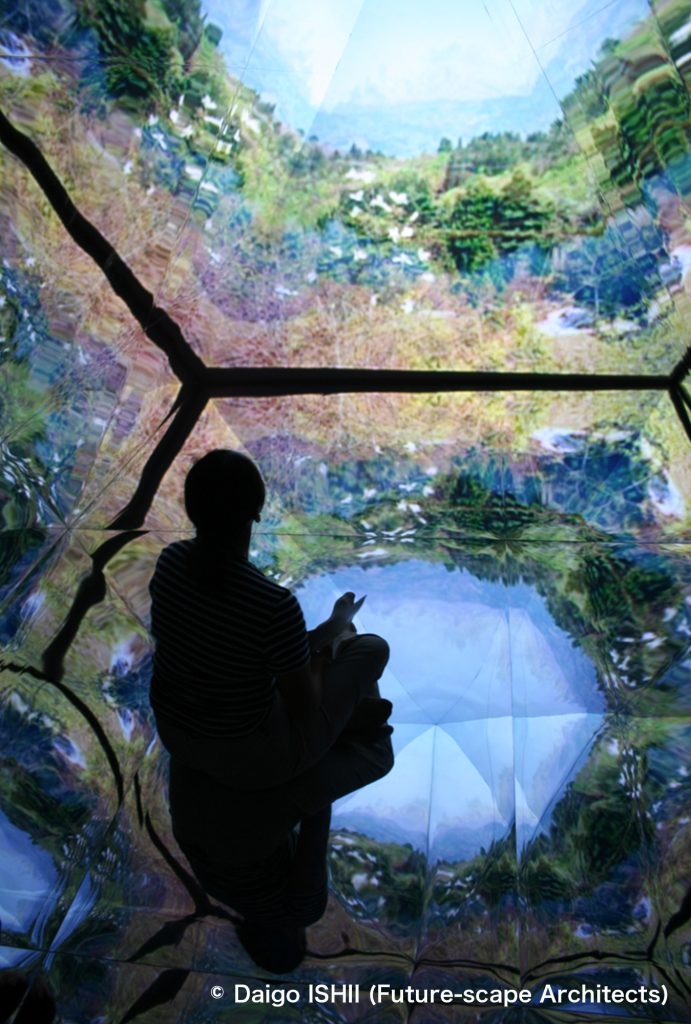
2006 Ikebana Museum in Koshirakura (No longer in existence)
Various Ikebana artists created plant installations in the houses and gardens of Koshirakura community.
English Website
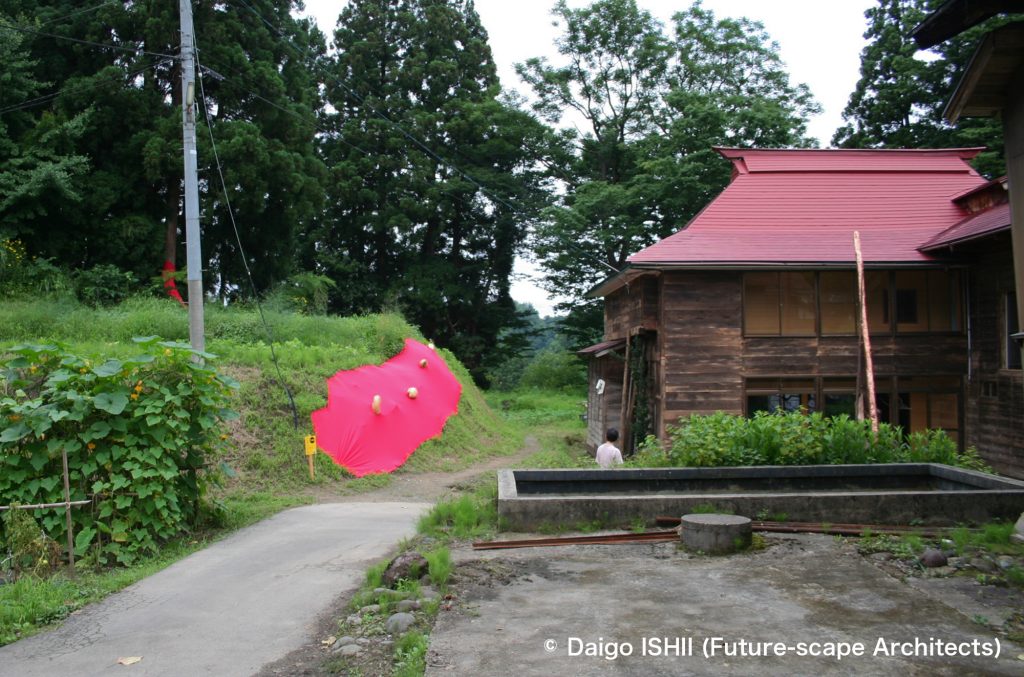

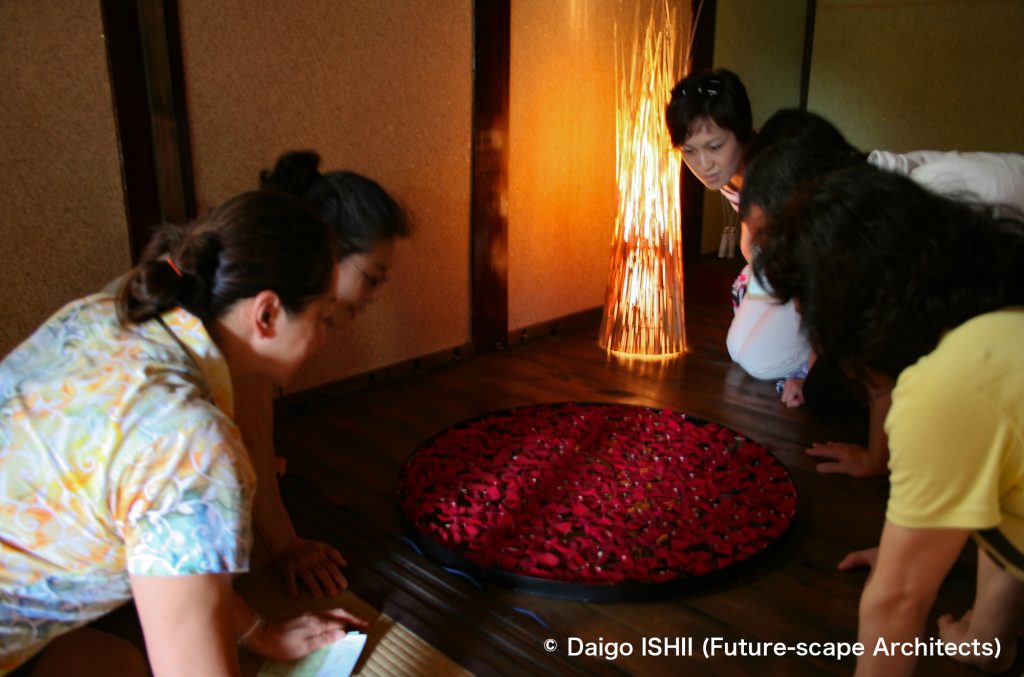
2009 Echigo-Tsumari Art Triennale 2009
2009 Antony GORMLEY ”Another Singularity” (Now opening except winter)
The interior walls of a vacant house in the Futatsuya community were removed, and 682 wires were threaded through the space where only pillars and beams were left, with the crossing wires creating the artist's body at the center. The "Another Singularity" is said to refer to the origin of the universe where mass, space, and time were born, and the way the rays of light pierce the darkness also seems to represent the moment of the Big Bang. The building, which had extremely low earthquake resistance, was renovated by Kanebako Structural Design Office and reinforced with a steel frame and structural plywood to ensure the necessary strength. Some have said that the wires are also earthquake-resistant elements, but this seems dubious.
English Website
https://maps.app.goo.gl/2n8EhC6npfVMDQDQ9
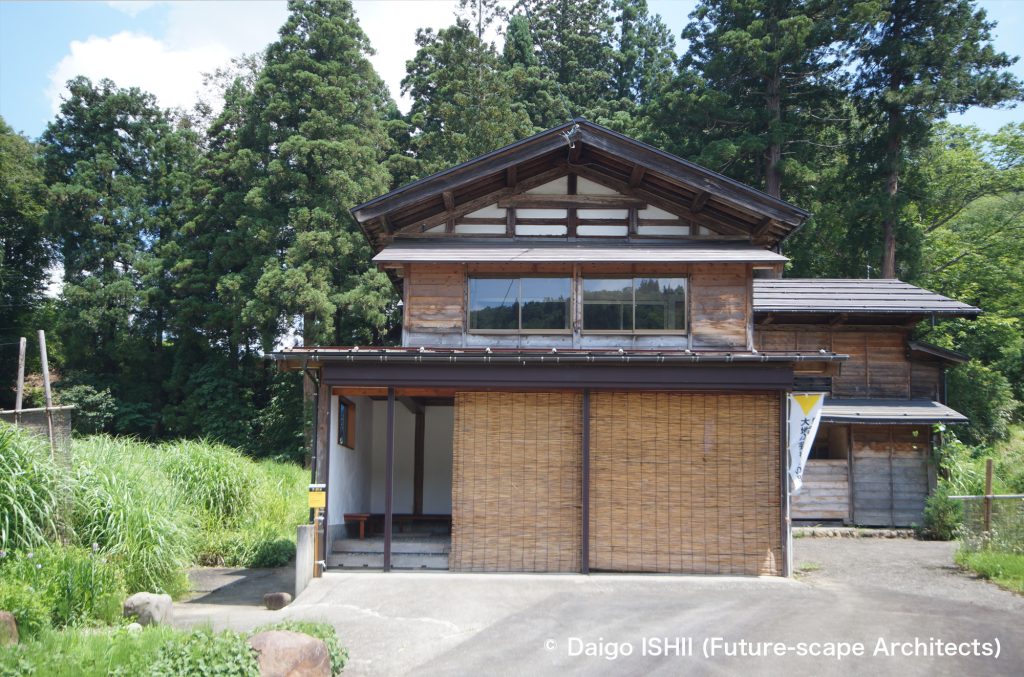
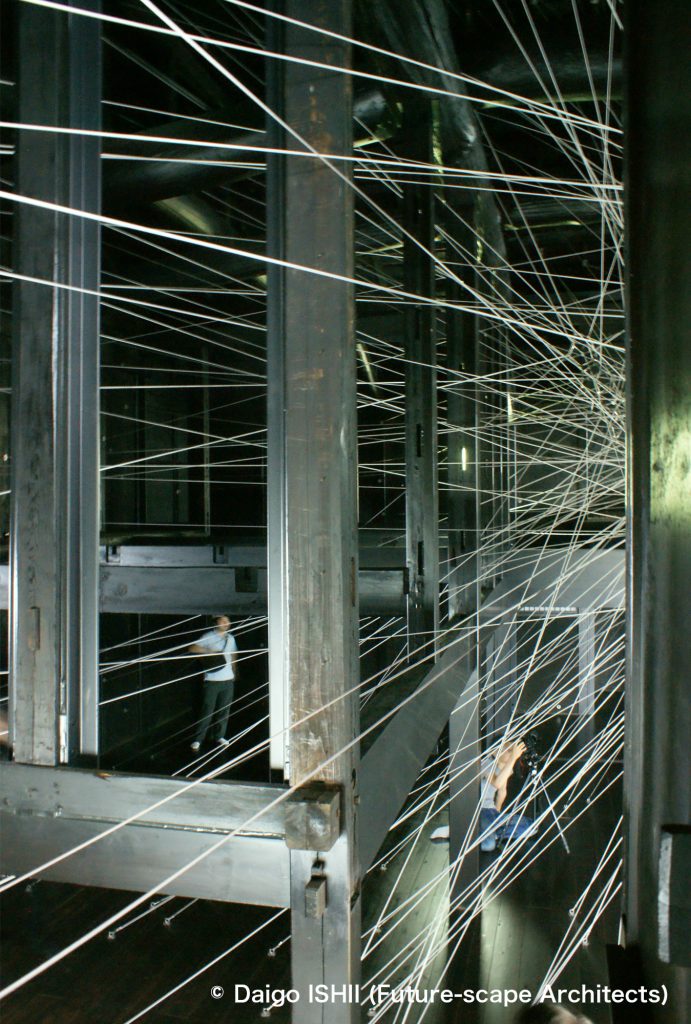
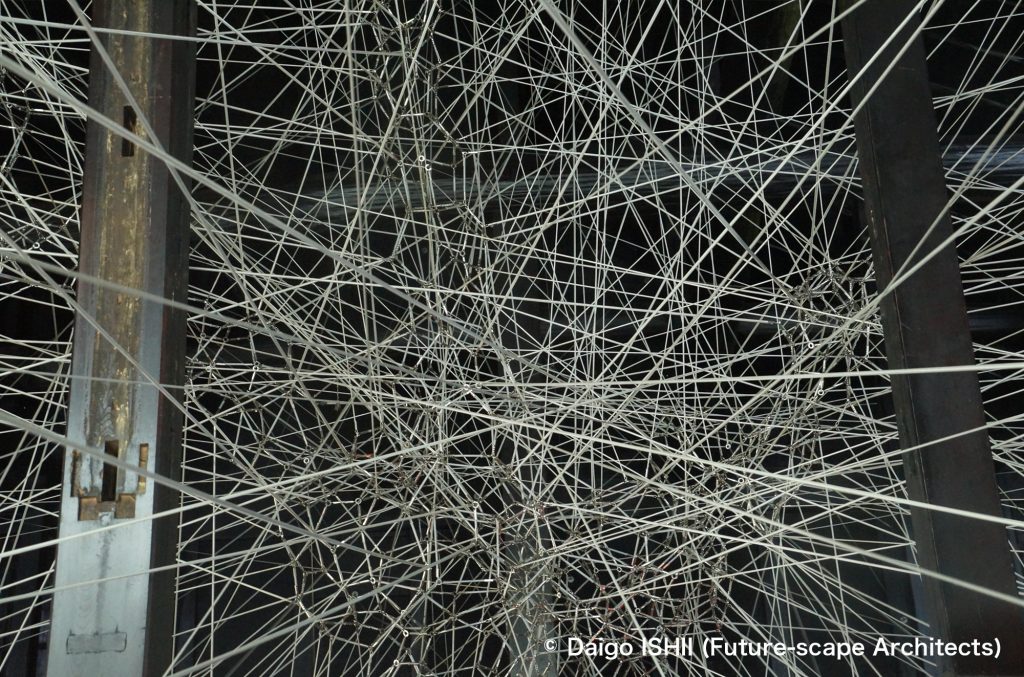
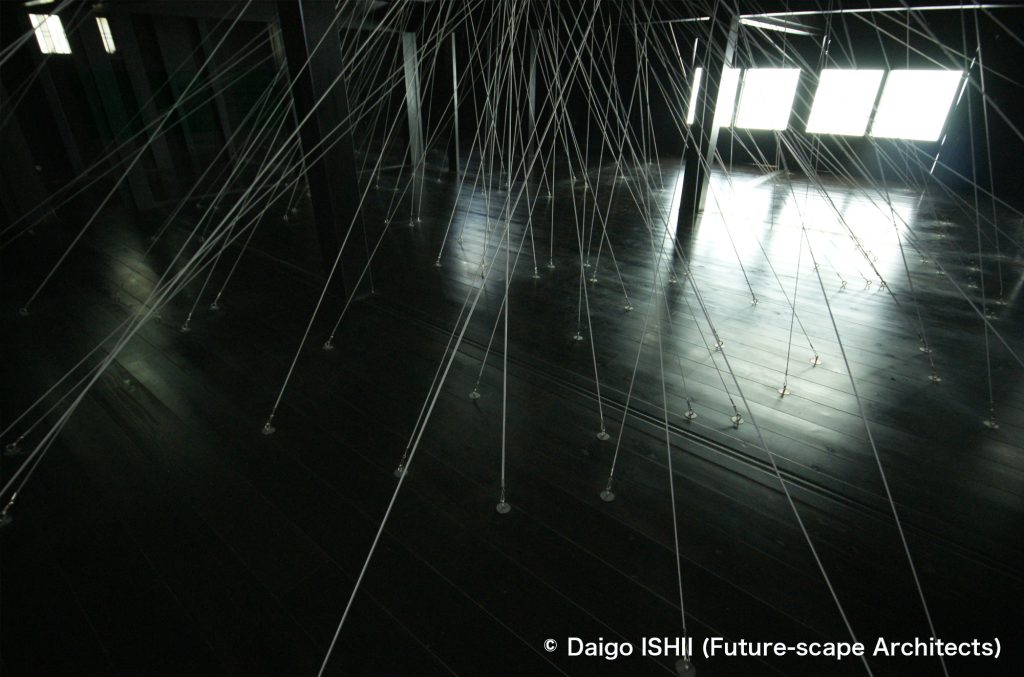
2009 Claude LEVEQUE ”In the Silence or in the Noise” (Now opening except winter)
This installation is set in a vacant house in the Kiriyama community. In dark rooms, various colored lights, a volcanic rock, tools used for rice planting, and sounds flash and move, appealing to the five senses. In the last room, natural light pours in and mist flows out, expressing the arrival of morning.
English Website
https://maps.app.goo.gl/NZgxnu4vfRqPyyDx6
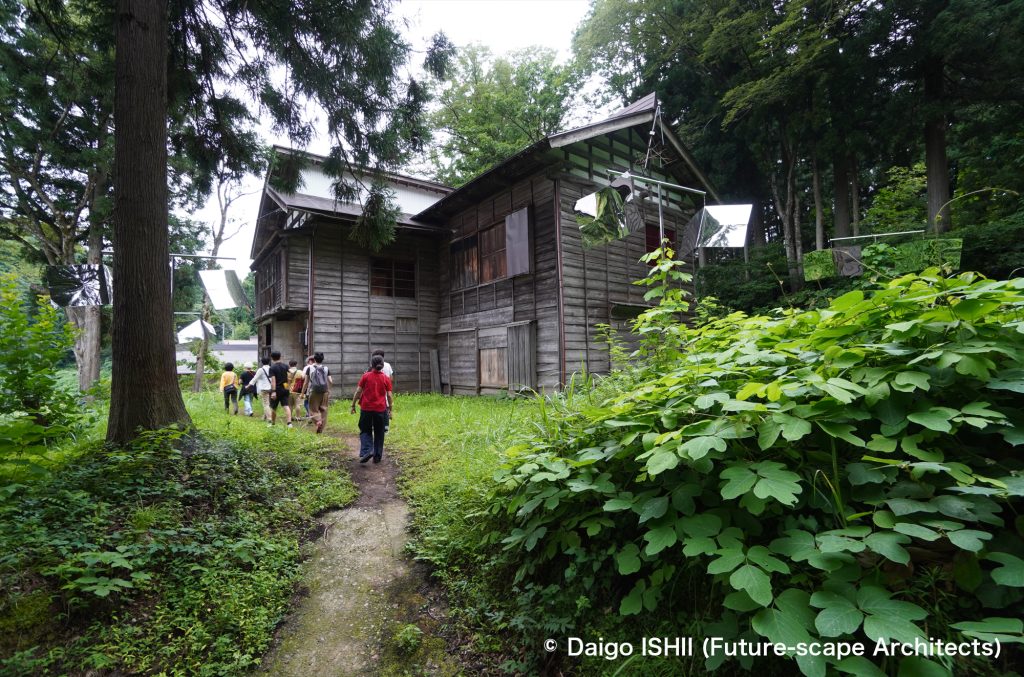
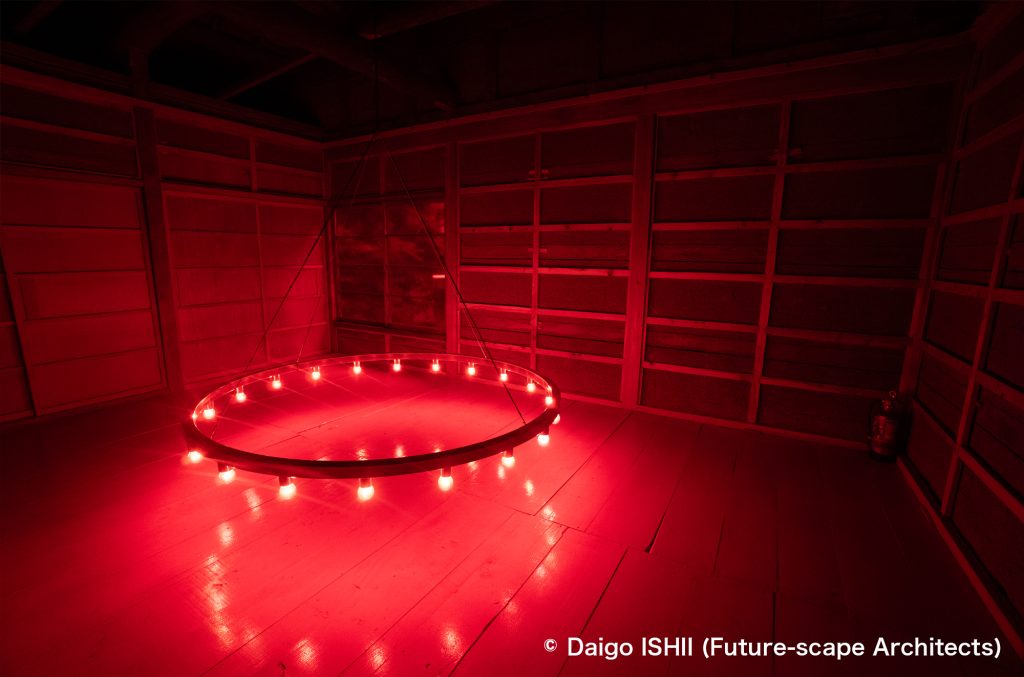
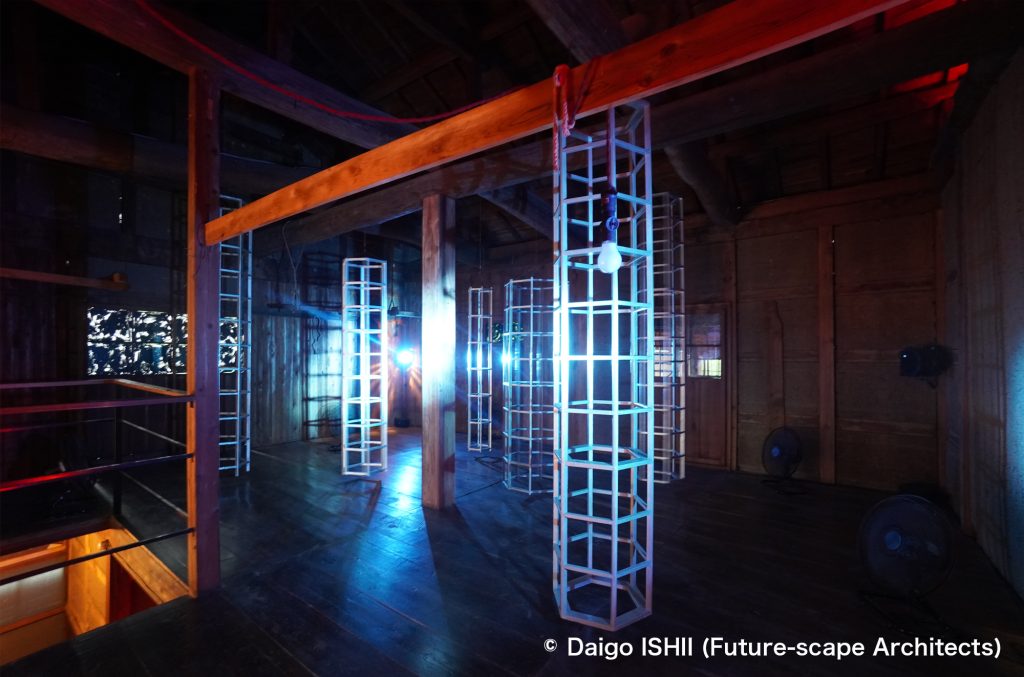
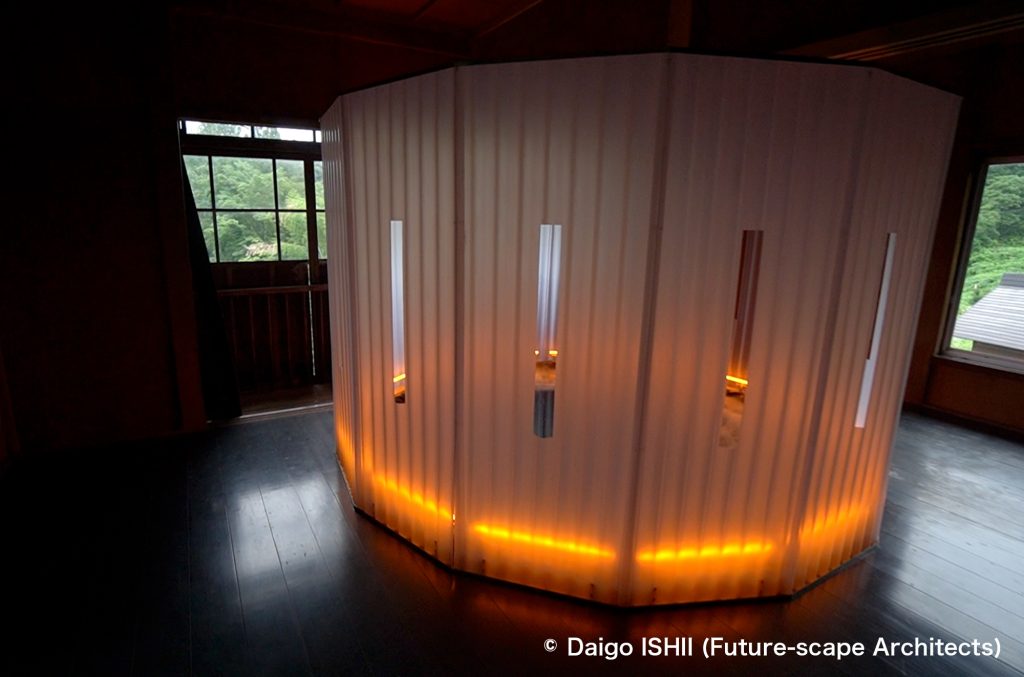
2009 Tomoko MUKAIYAMA ”Wasted” (No longer in existence)
The installation raised issues of gender and feminism by hanging thousands of white silk dresses, among which were a space for lying down and meditating, and a small room for displaying blood-stained dresses from women's menstrual periods. It is one of the few works that deals with the theme of gender in this art festival. The detailed design was done by Yasuyuki Kawanishi / nextstations + CUT (a group of volunteer architecture students from Chiba University Graduate School).
English Website
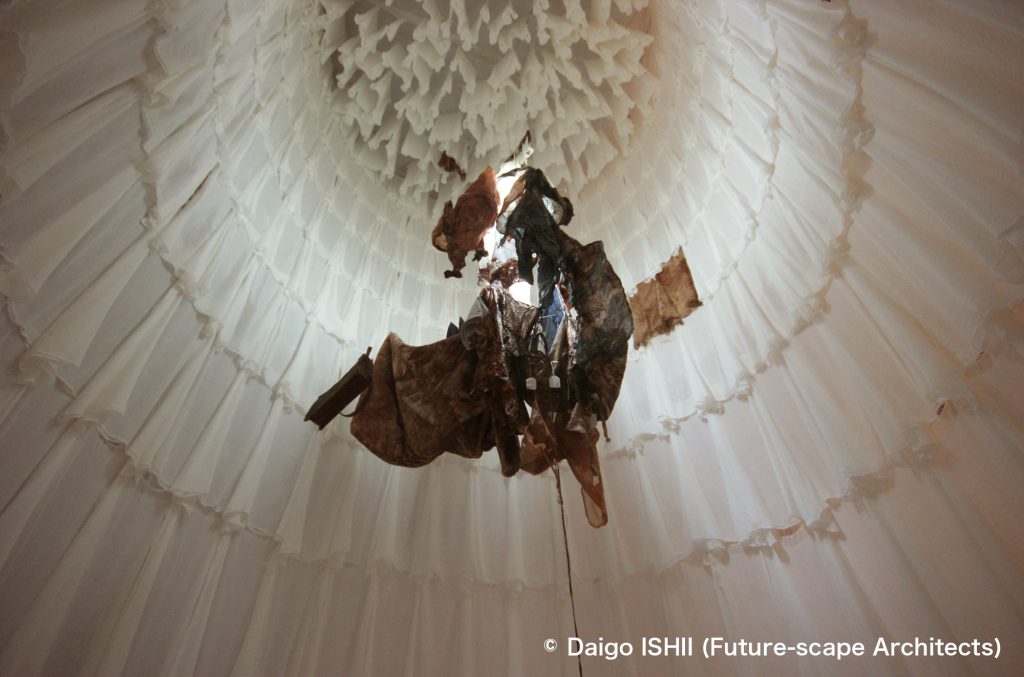
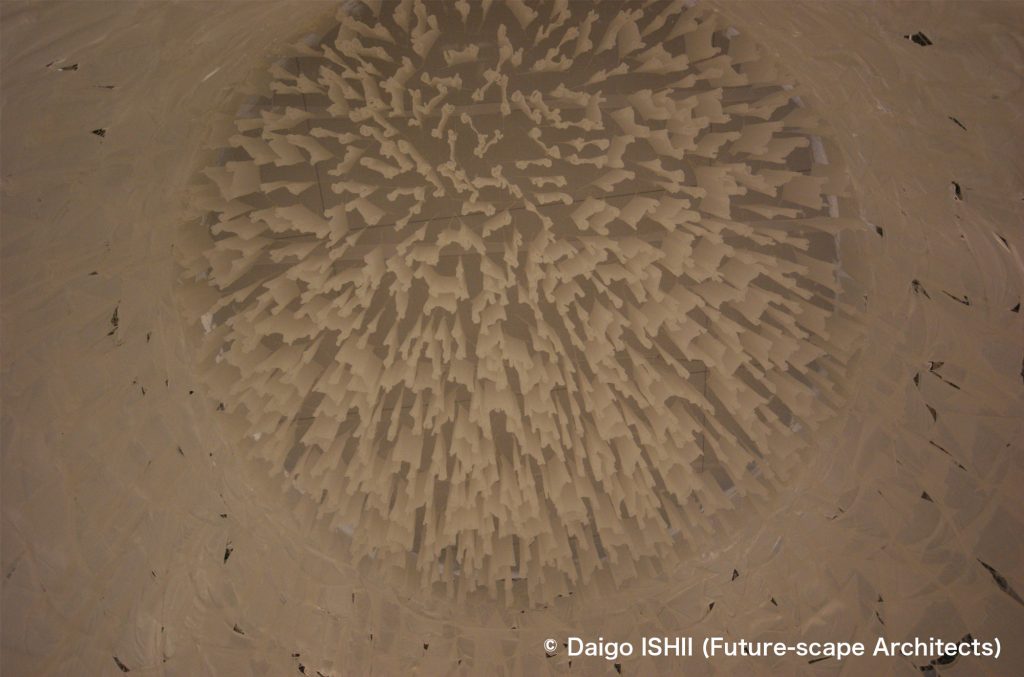
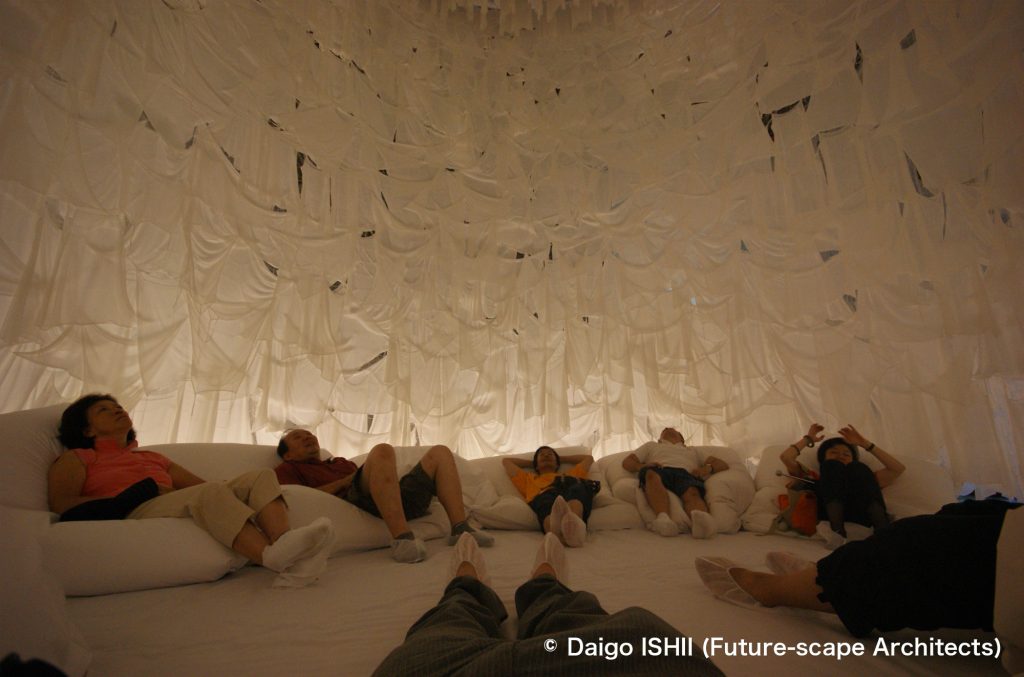
2009 Ryuichi YAMAZAKI ”Culture bound syndrome” (No longer in existence)
The statues of a hooded child sitting at a small desk on top of a desk were inspired by an anti-bullying campaign that took place at the closed school where the exhibition was held. Drawings by children who attended the school were also on display.
English Website
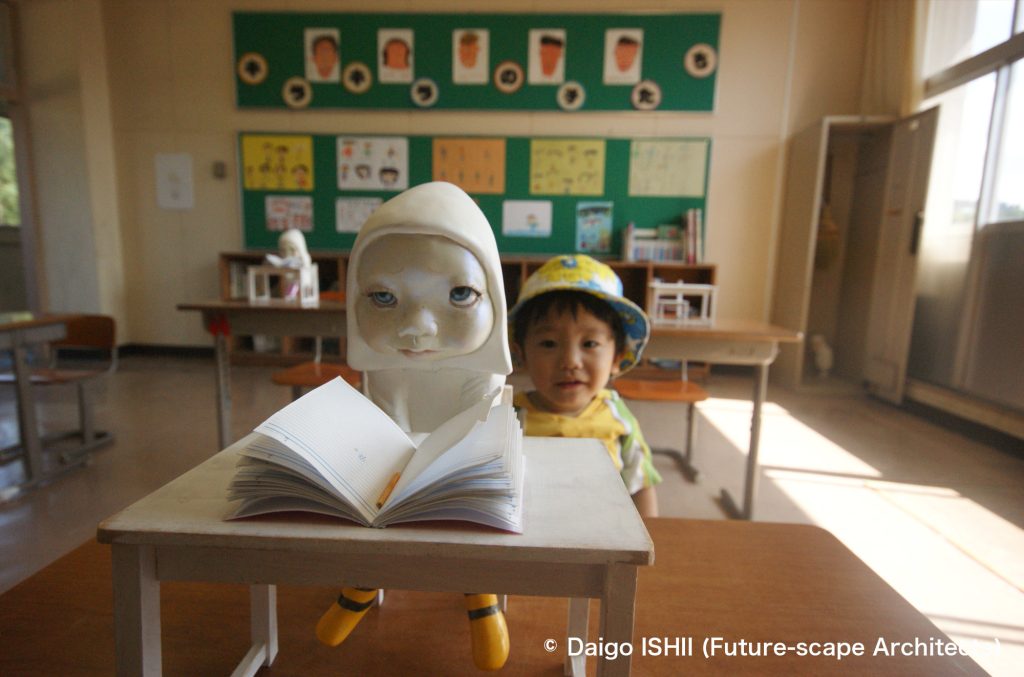
2012 Echigo-Tsumari Art Triennale 2012
2012 Ann HAMILTON ”Air for Everyone” (Now opening except winter)
In a house that once housed a sheet metal worker in Tanaka community of Tsunan, various musical instruments are hung, and visitors can pull on the strings to make sounds. The sounds connect the house to the village.
English Website
https://maps.app.goo.gl/c6whT1oGihV35TgE9
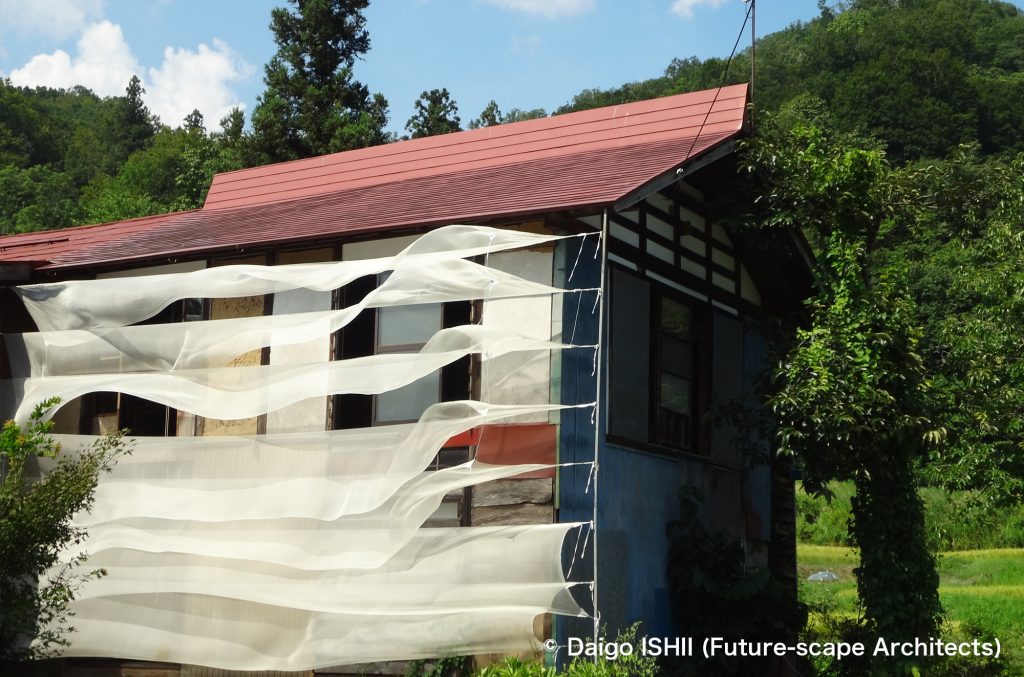

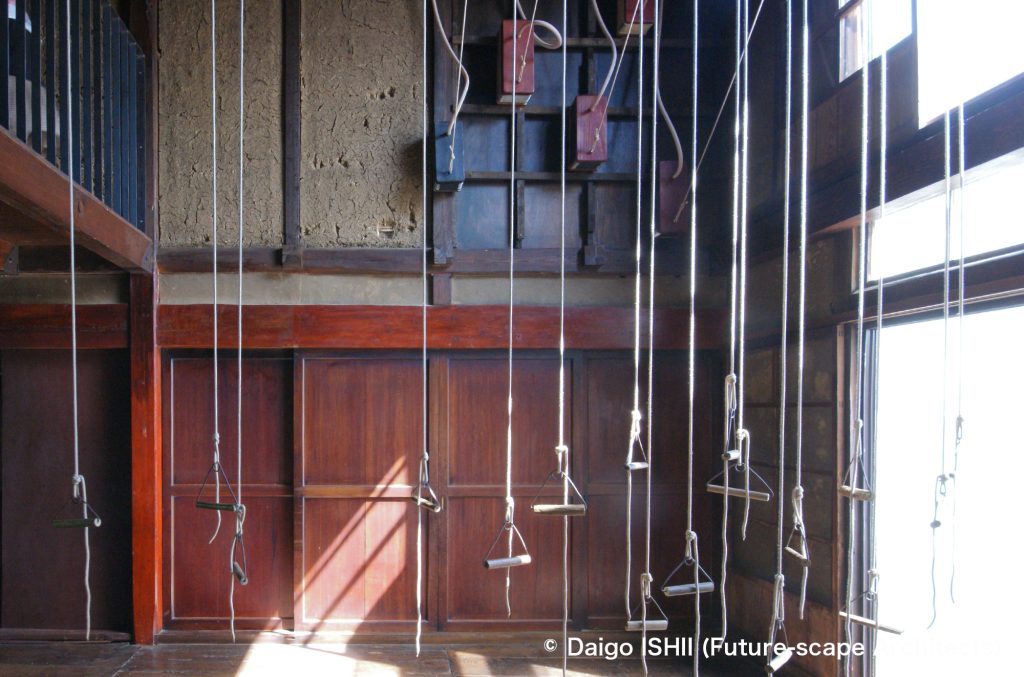
2012 Noe AOKI ”Water in the Air / mossgarden” (No longer in existence)
This is an artwork from 2012 by the artist who has been installing artworks in the Nishitajiri and Shirahake community since 2003. Circles cut from steel plates that were installed within the shrine grounds were connected, and floated as if released from gravity.
English Website
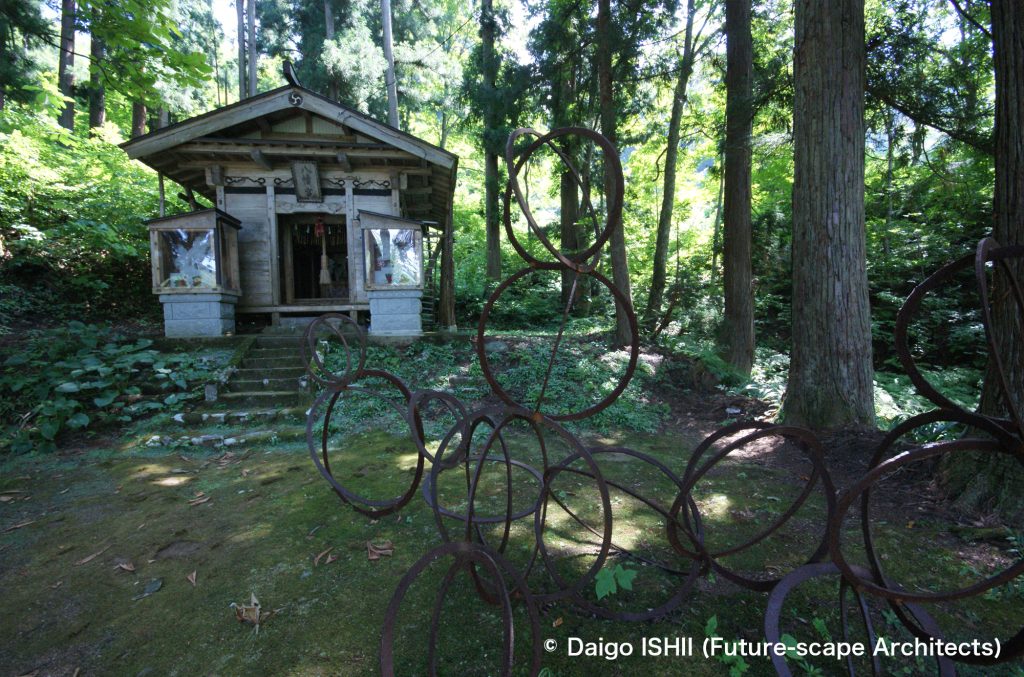
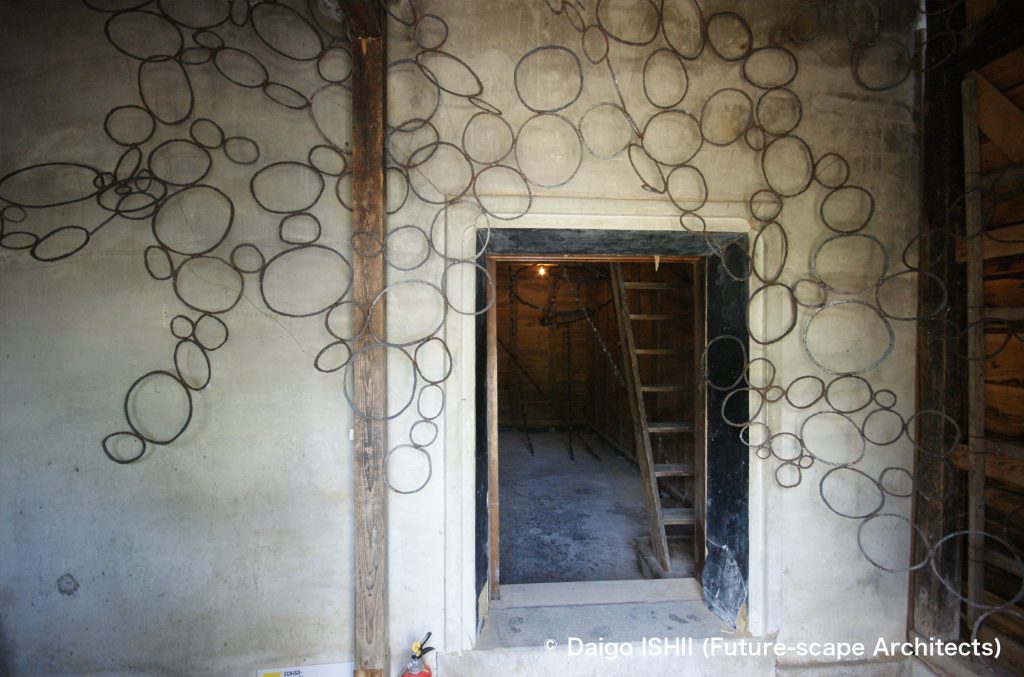
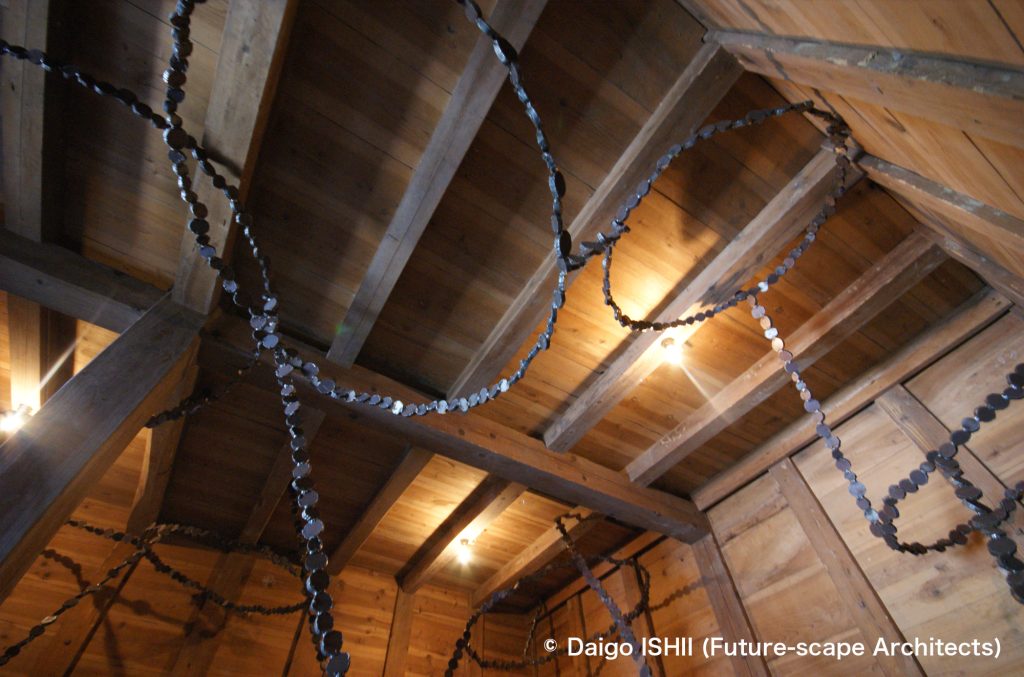
2012 Andrew Burns Architect ”Australia House” (Now opening except winter)
The first Australia House was completely destroyed in the 2011 Northern Nagano earthquake, and the second was selected in an international design competition and completed in 2012. It serves as both an artist-in-residence facility and accommodation facility.
English Website
https://maps.app.goo.gl/BbkrNaWotx6dW4vK6
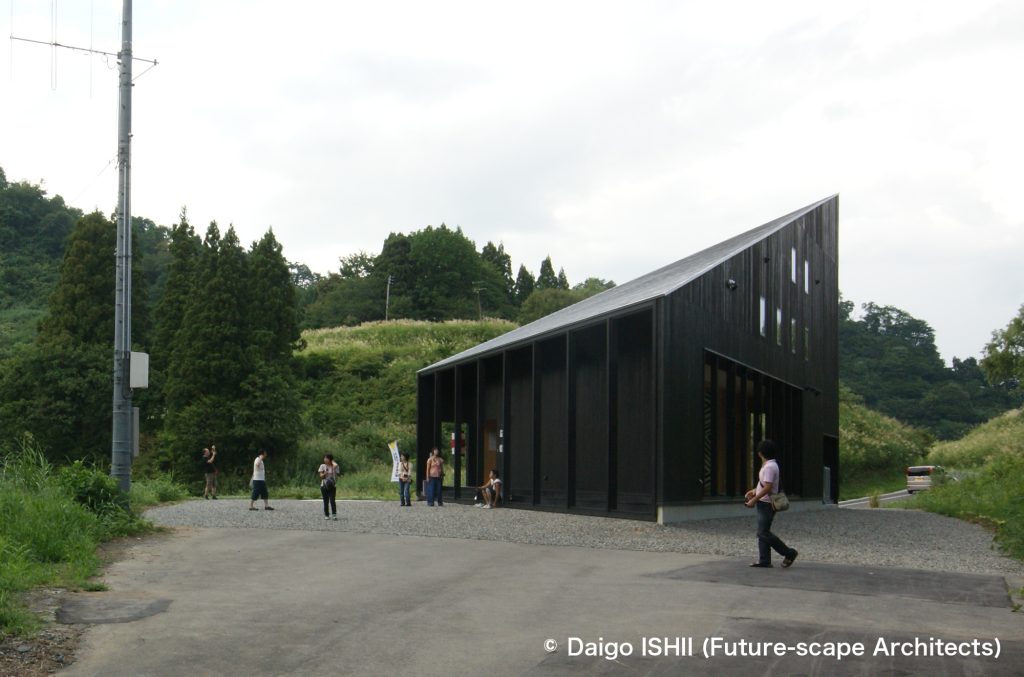
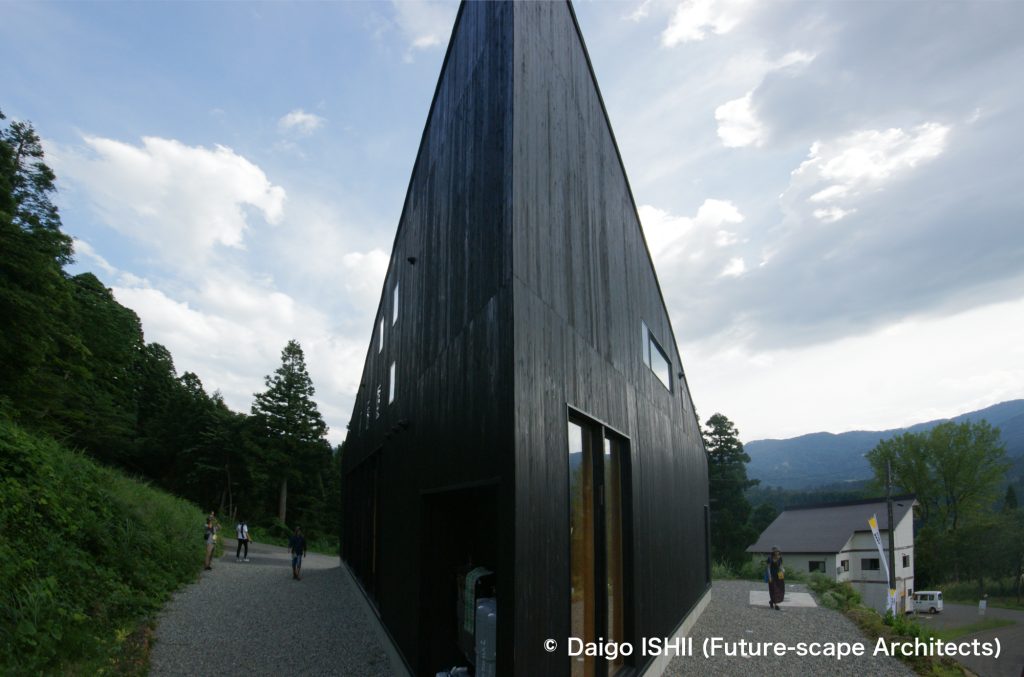
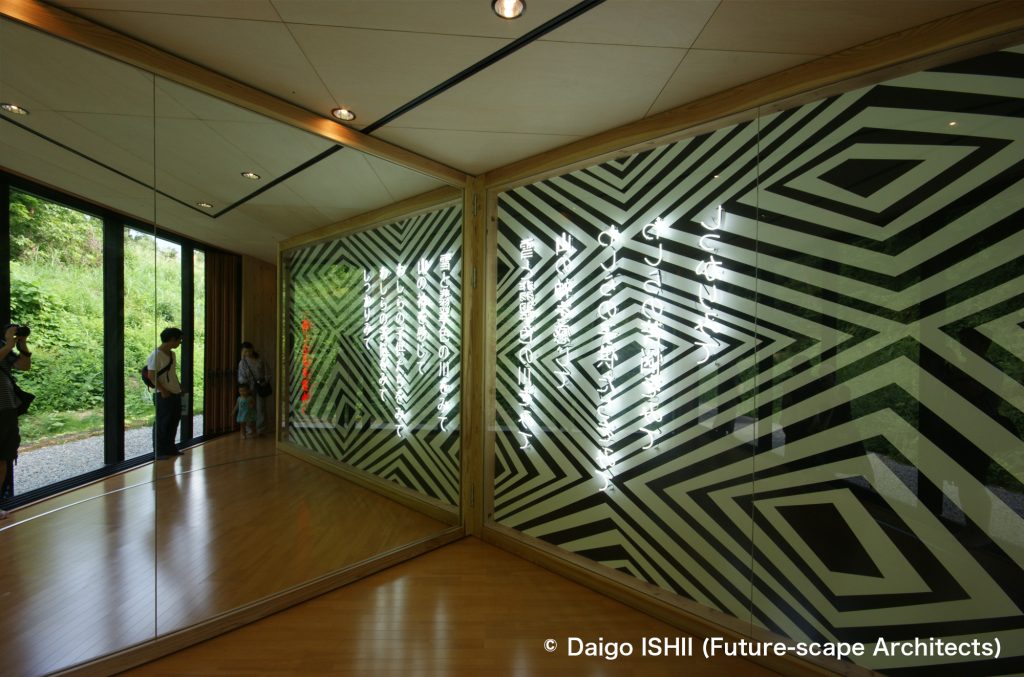
2015 Echigo-Tsumari Art Triennale 2015
2015 Guo-Qiang CAI ”Penglai / Hōrai” (No longer in existence)
This installation was set on the water in the courtyard of Kinare. It imitates Mount Penglai, an island in the sea where immortals are said to live in Chinese Taoism. Straw vehicles and gunpowder paintings were also exhibited around it.
English Website
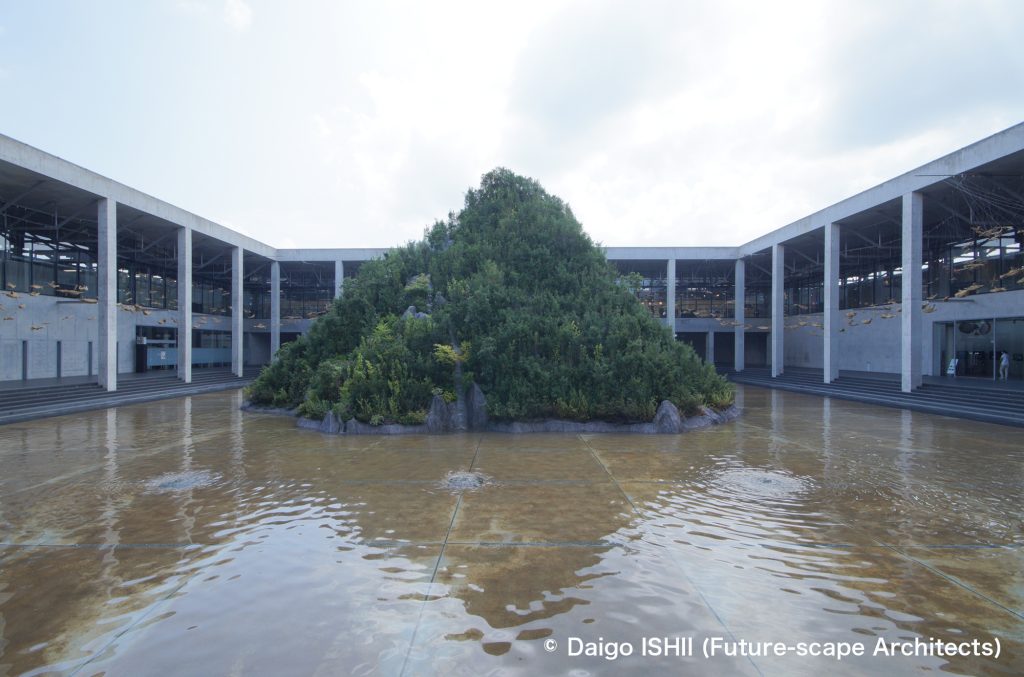
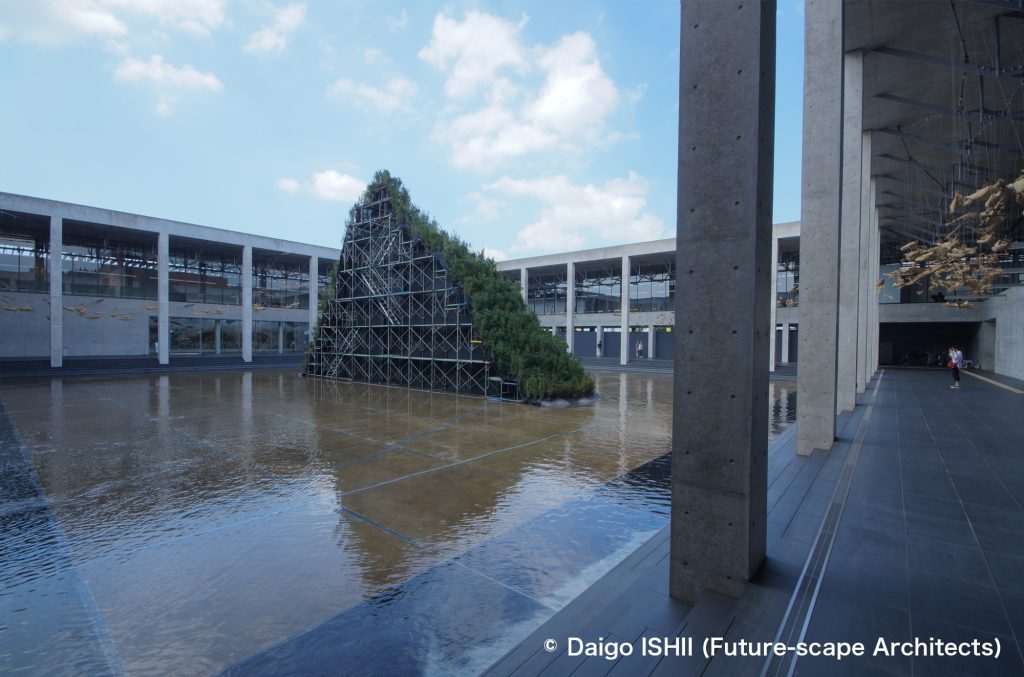
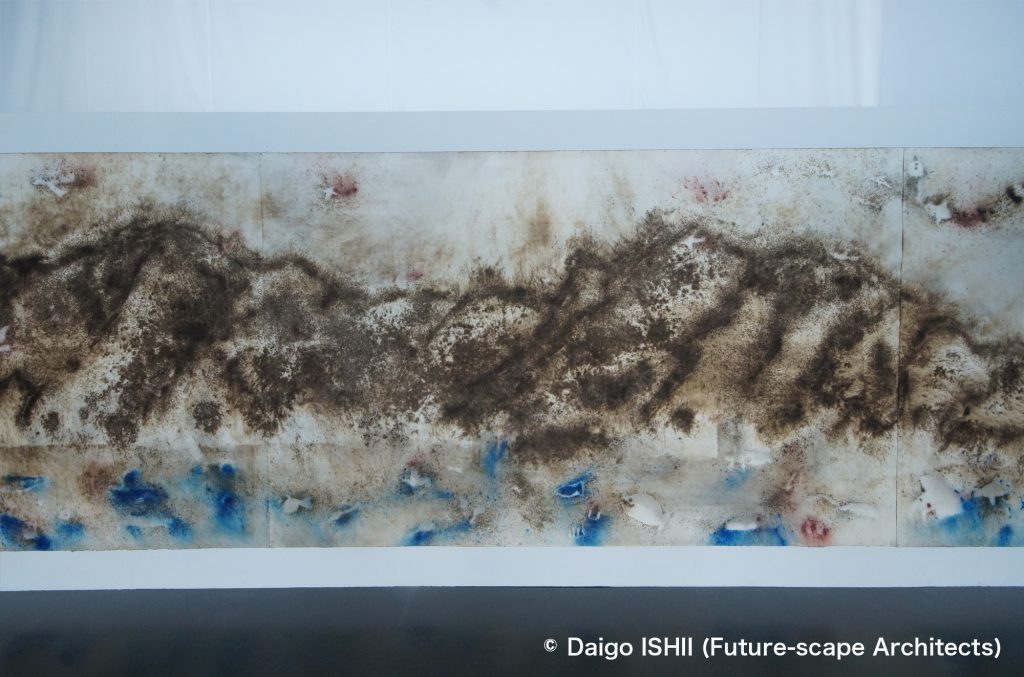
2015 Ryo Toyofuku ”Golden Playroom” (Now opening except winter)
It is a golden-colored playroom. Everyday items, game consoles, Buddha statues, and chandeliers fill the walls and ceiling of the room, creating a space reminiscent of claustrophobia (horror vacui) in Latin Baroque architecuture.
English Website
https://maps.app.goo.gl/icTBaZhCdtmrmE3z6

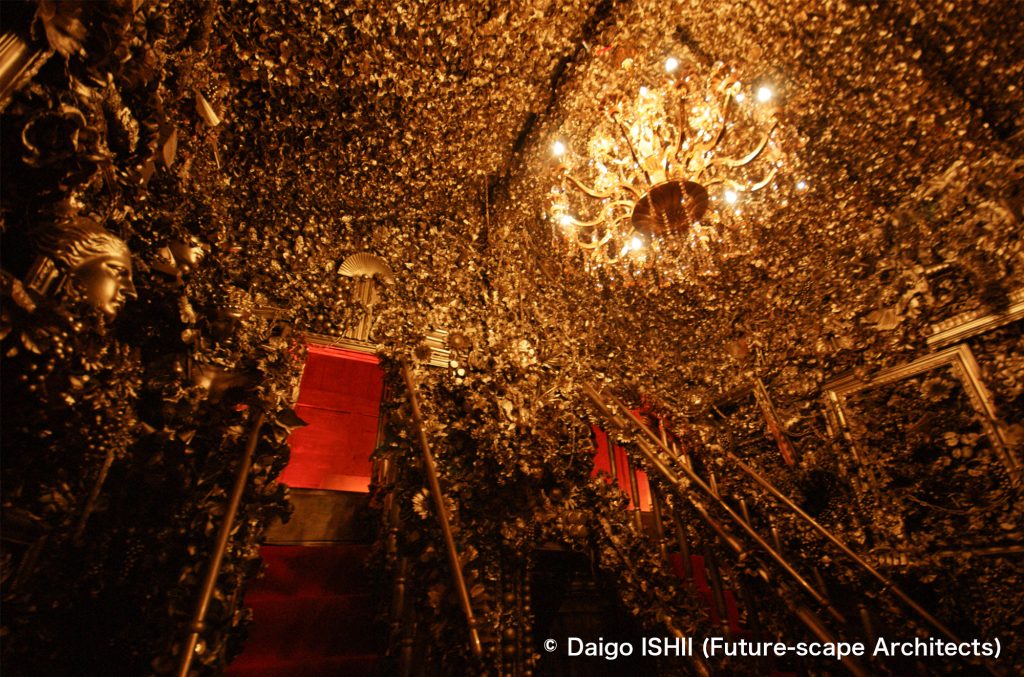
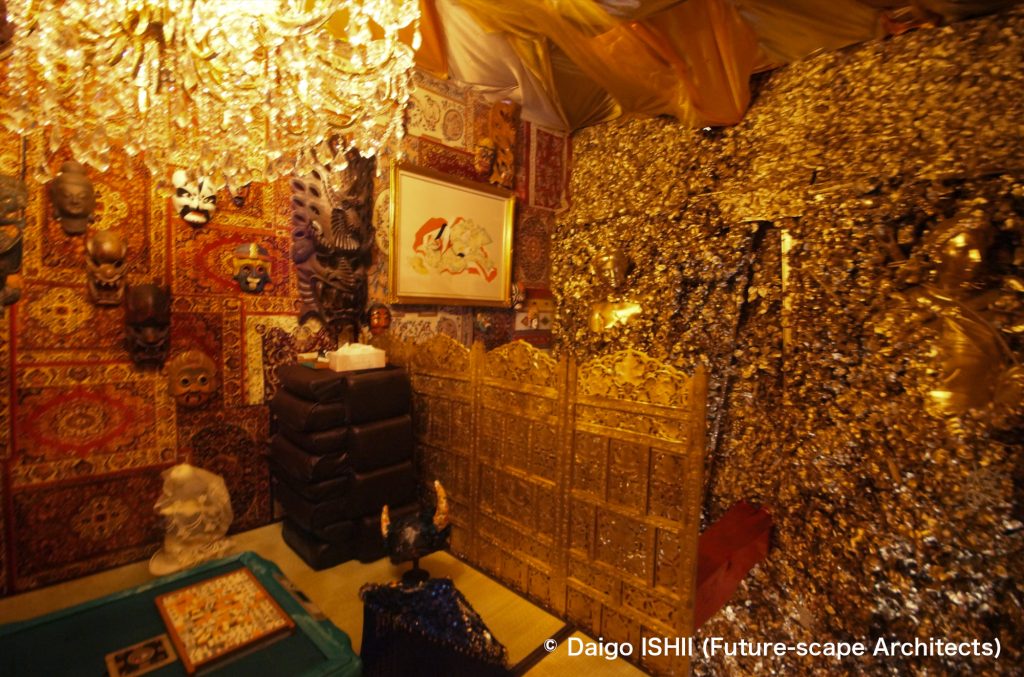
2015 EAT&ART TARO + others ”Restaurant Kamigo Clove Theatre” (Performed during the period of the art festival)
A restaurant located in Kamigo Clove Theatre. Local women serve meals made with local ingredients in a theatrical setting.
English Website
https://maps.app.goo.gl/KZ7SWvdseYanokJc6

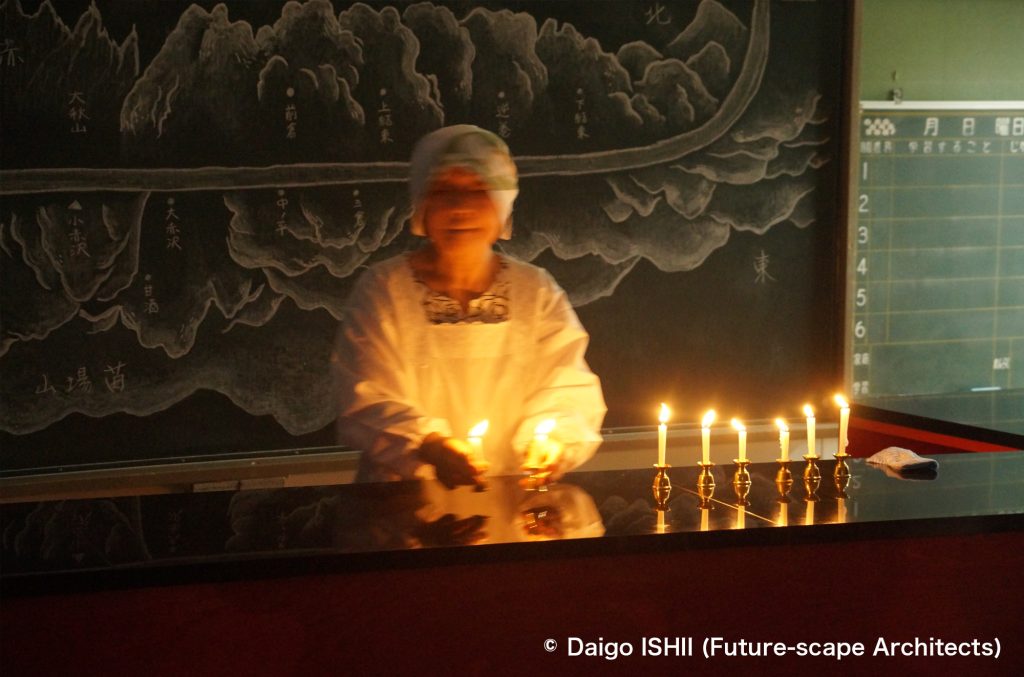
2018 Echigo-Tsumari Art Triennale 2018
2018 Michiko NAKATANI ”Beyond the river, voice calling for a boat” (Closed)
Various old memories collected from residents of Ueno community were turned into reliefs and displayed on the white walls of the community center. Each relief was convex, and the expression of the depicted image changed depending on the angle from which they viewed. This series of artworks is currently on display at the Museum on Echigo-Tsumari (MonET). (Production year : 2018, Closed)
English Website
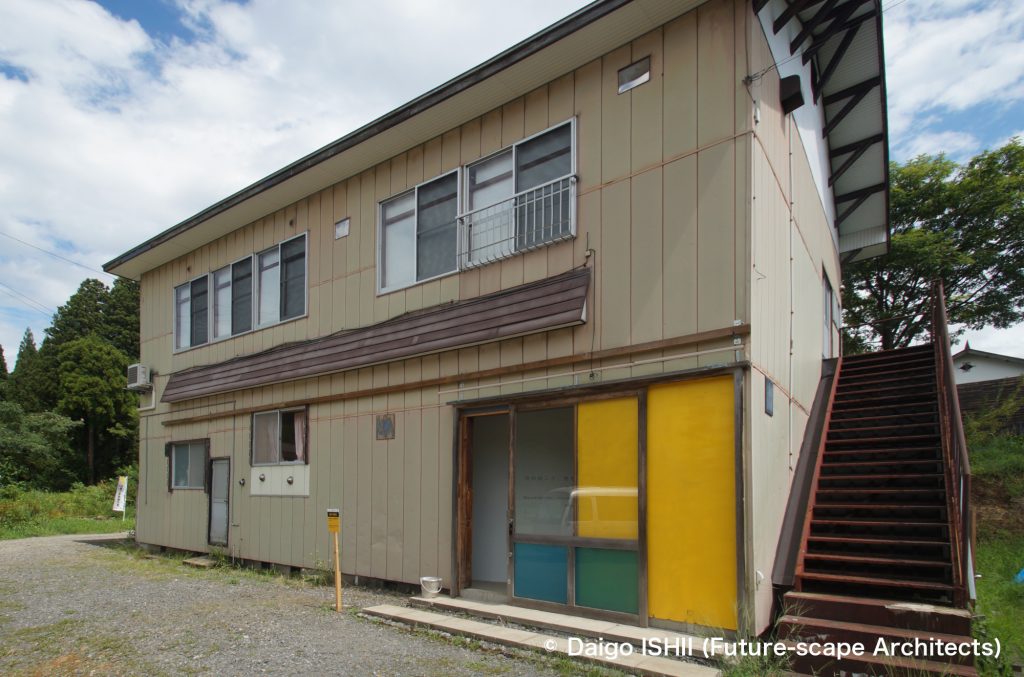
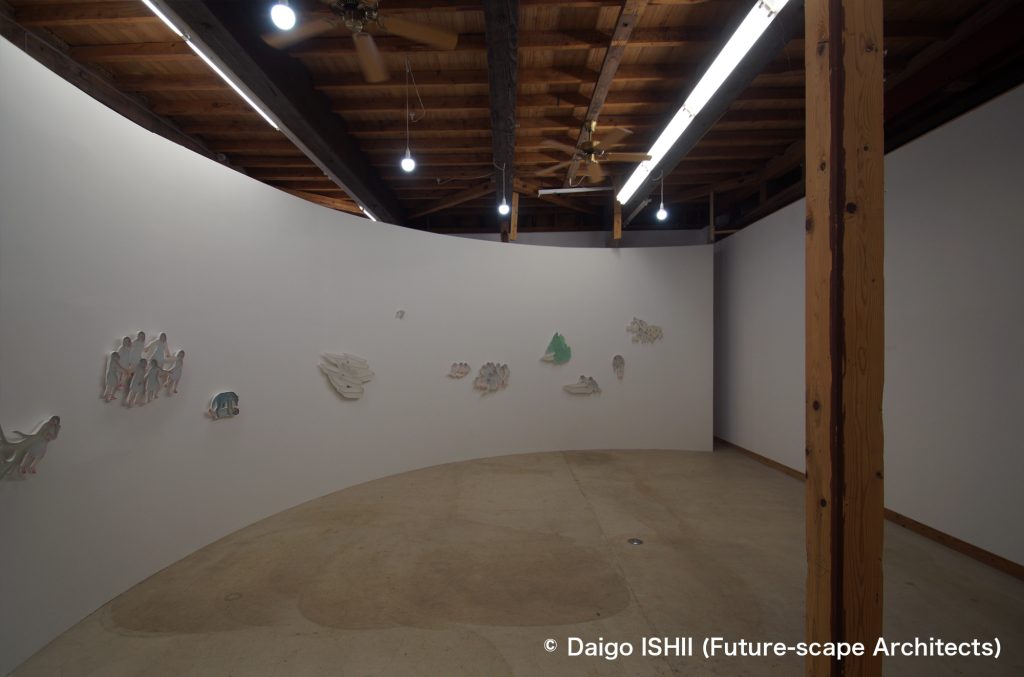
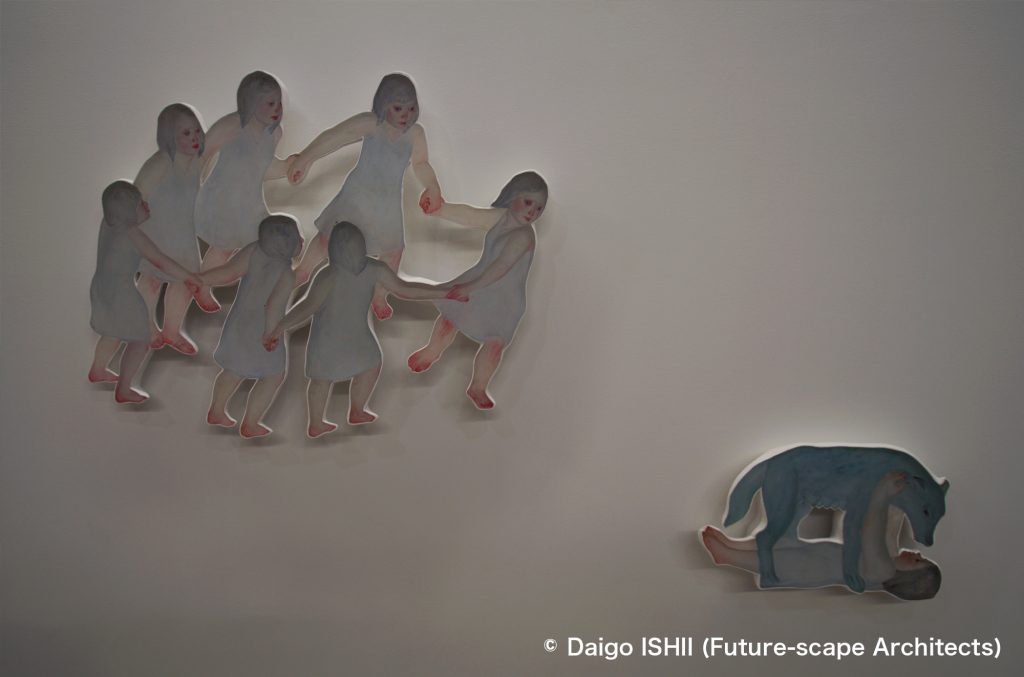
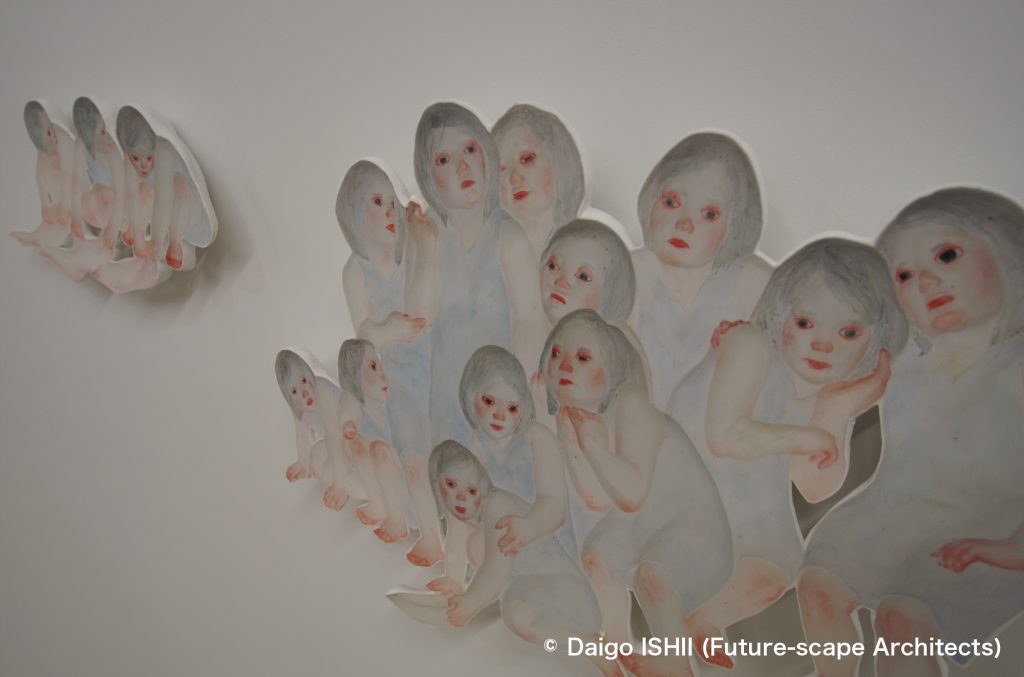
2018 Damián ORTEGA ”Warp cloud” (No longer in existence)
In a closed textile factory in the Miyukicho community of Tsunan, balls and drop-shaped weights were attached to a number of threads hanging from the ceiling, creating a curtain-like space that evokes the former textile factory.
English Website
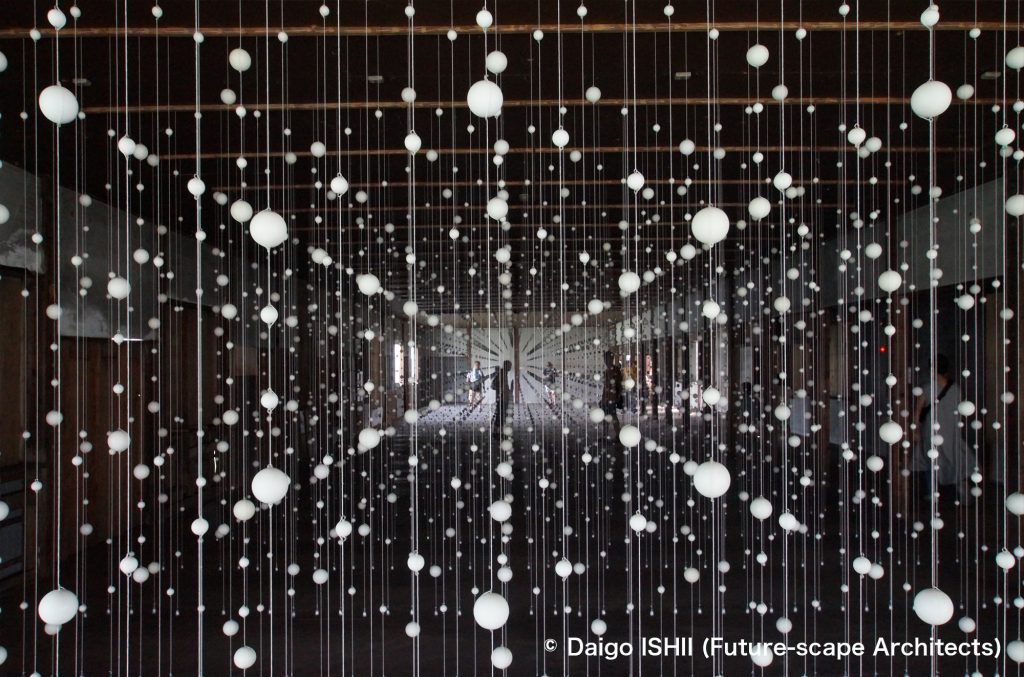
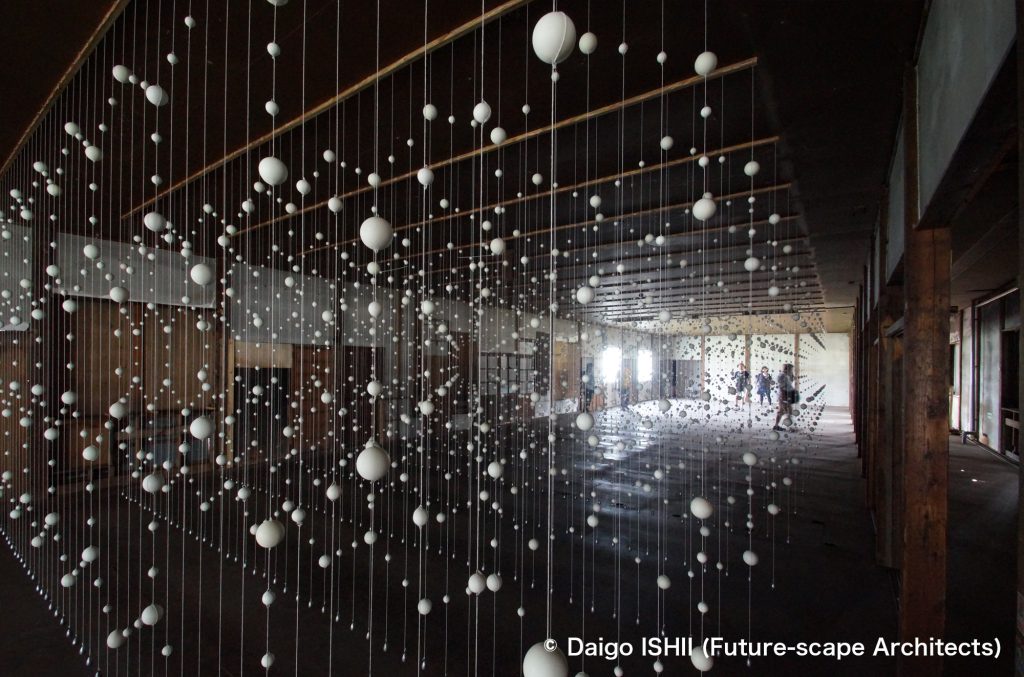
2018 Chun Hang YIP ”Hong Kong House” (Now opening except winter)
It was a base for cultural exchange with Hong Kong which architect was selected through public competition. It houses local exchange programs with Hong Kong, as well as artists' residency programs. The detailed design was done by Masashi Ohira.
English Website
https://maps.app.goo.gl/KZ7SWvdseYanokJc6
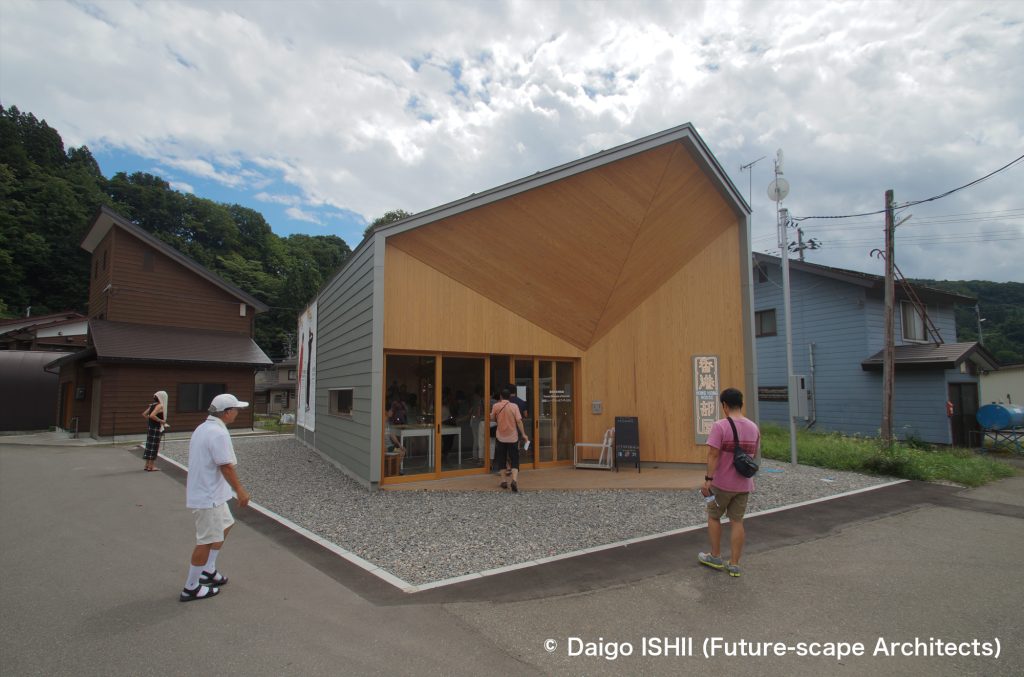
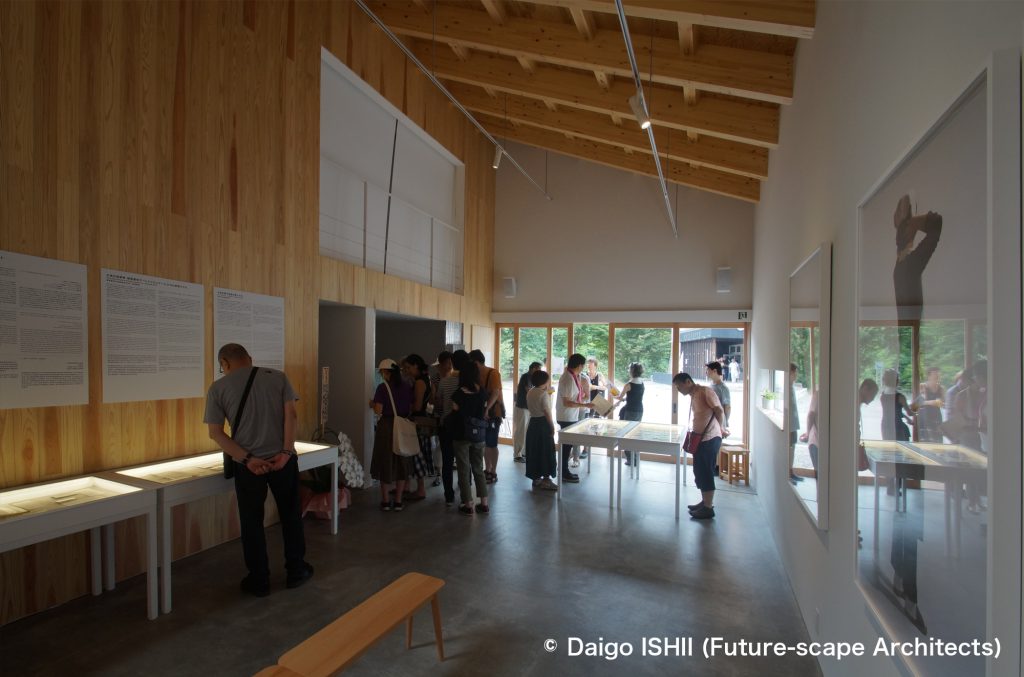

2022 Echigo-Tsumari Art Triennale 2022
2022 Mapped to the Closest Address + Jun YAMAGUCHI ”We like to watch clumsy-seeming Mountains” (No longer in existence)
The installation was created by a group working to reexamine mountains and ecosystems from a multi-ethnic perspective, and explores the question of who the ideal mountain landscape is for and the movements that exist within mountain ecosystems. The work also serves as a venue for a gate ball game on the mountain.
English Website
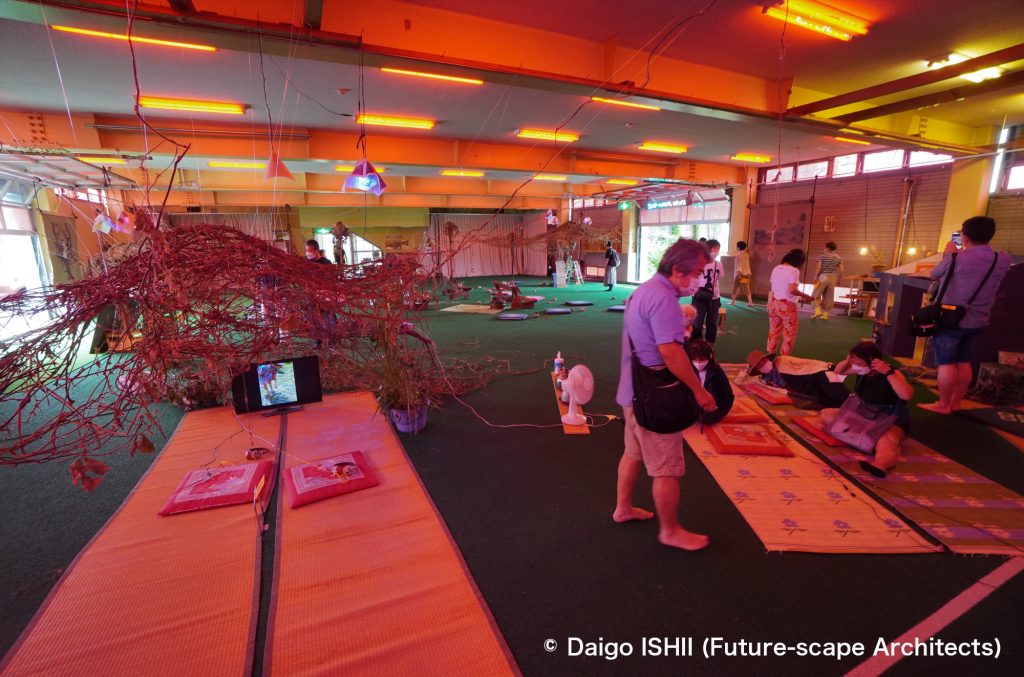
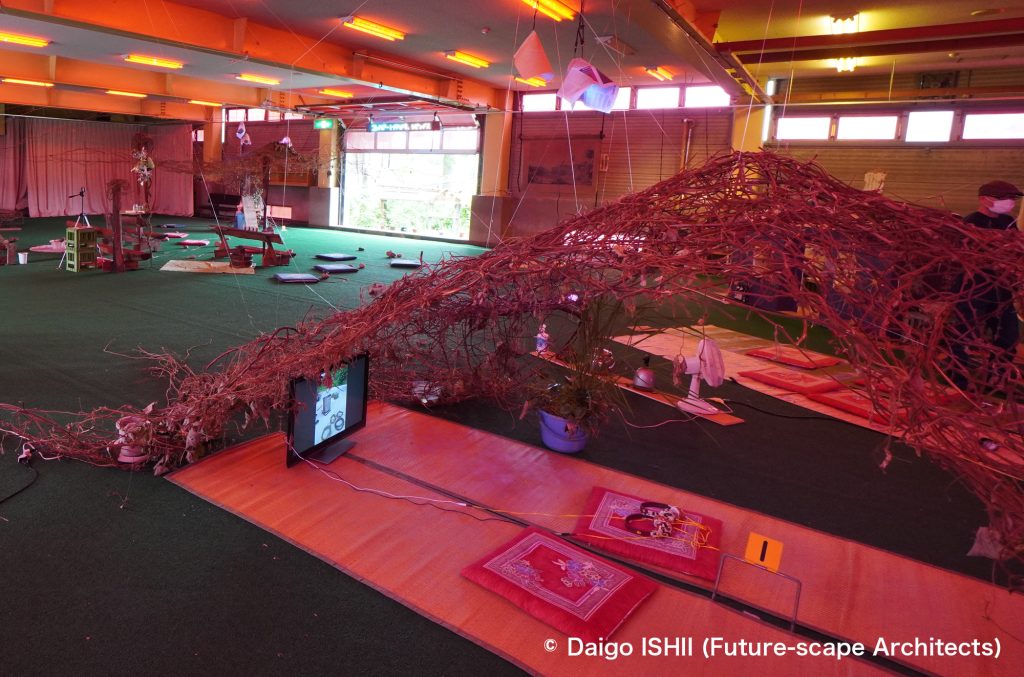
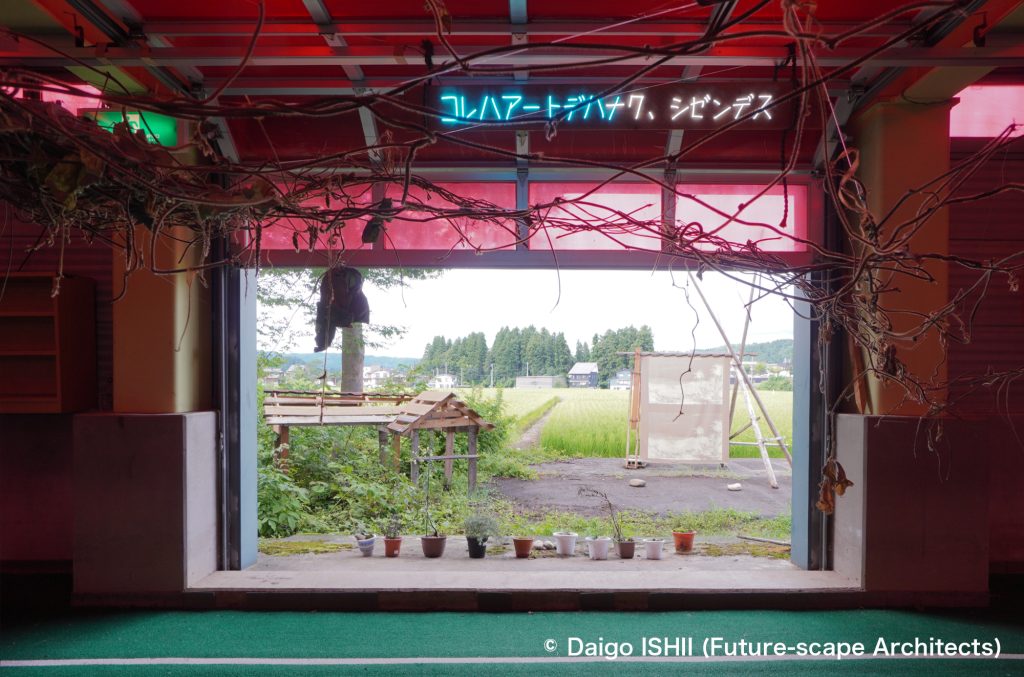
2022 Takafumi FUKAZAWA ”Snow Tower” (No longer in existence)
At the disaster prevention center in the Nanawa district of Niiza, a new town in Tokamachi, a tower has been built by stacking up Kumashiki snow removal tools developed in the area and commonly used in areas with heavy snowfall.
English Website
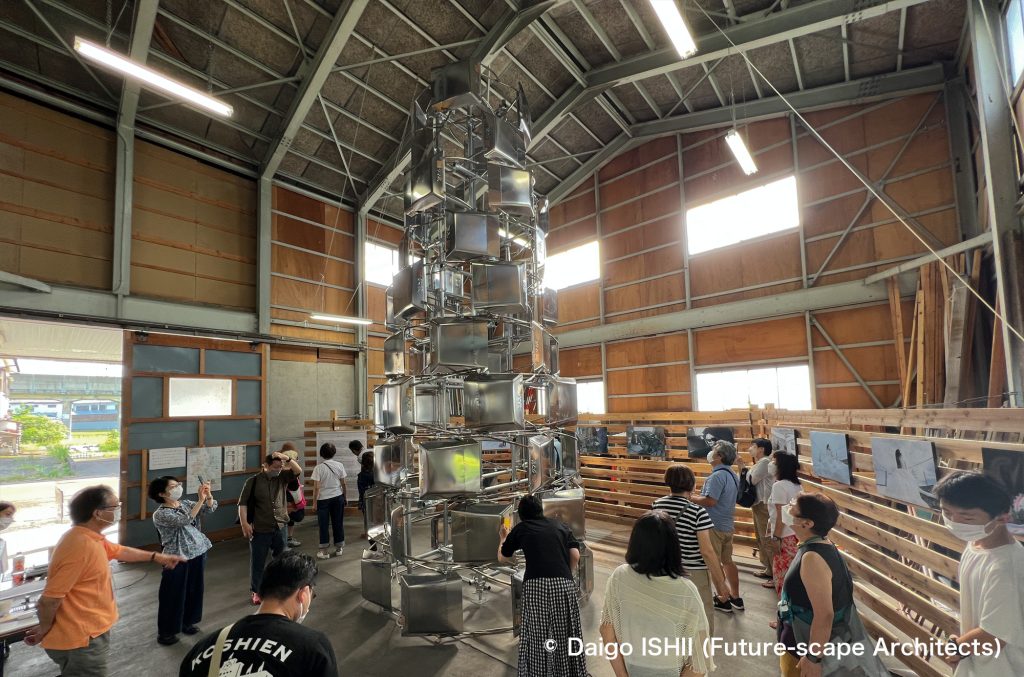
2024 Echigo-Tsumari Art Triennale 2024
→ As for the 2024 works, please see this post
The electronic advertisement in Japan Railways trains in the Tokyo area in 2024 showed the clip introducing Echigo-Tsumari Art Triennale once every 15 minutes. The 2022 advertisements were done by Japan Railways clearly. The 2024 advertisements indicated the name of the Echigo-Tsumari Art Triennale Committee at the end. Could it be their own advertisement? Another photo of the clip introduces the lunch buffet in Matsudai NOHBUTAI.
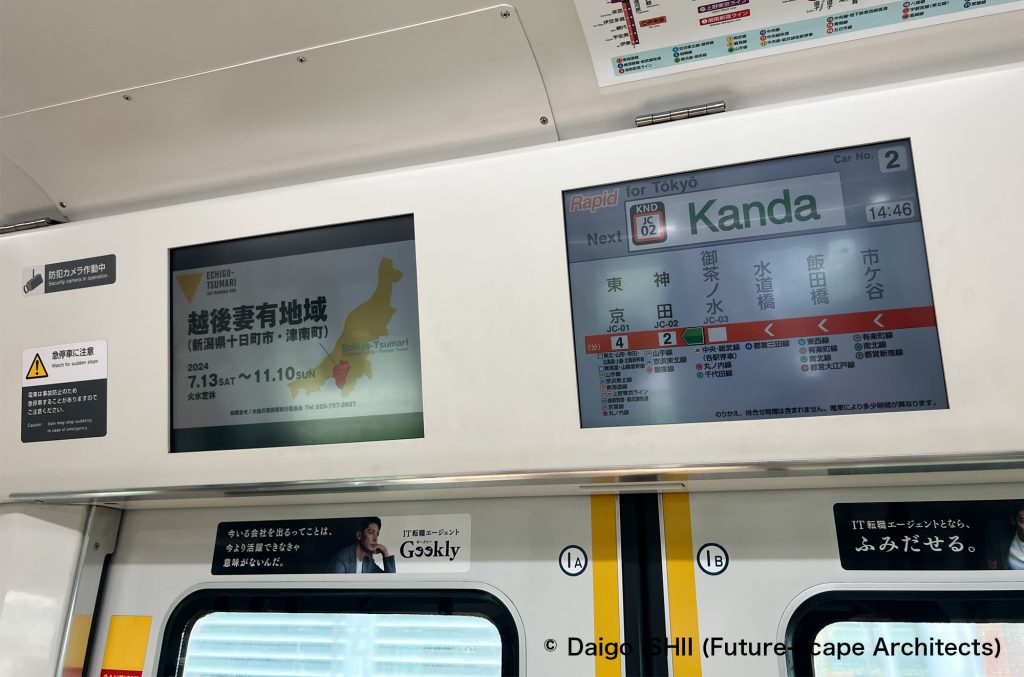
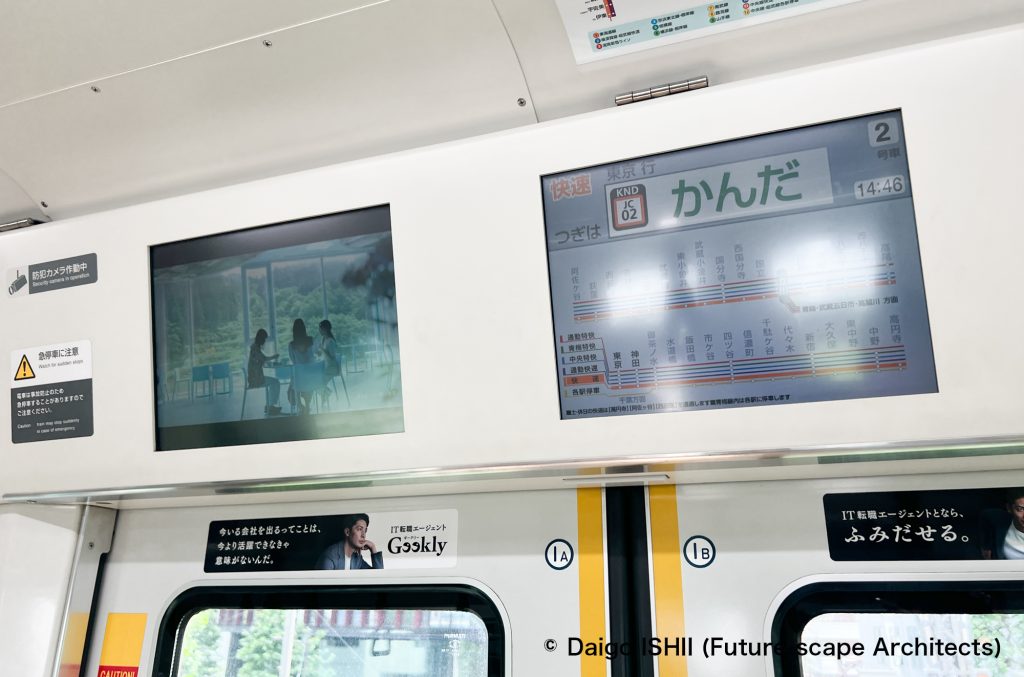
Click here for your impressions
reference
"越後妻有アートネックレス整備事業計画書"(アートフロントギャラリー,1999)
"大地の芸術祭 越後妻有アートトリエンナーレ2000"(越後妻有大地の芸術祭実行委員会,2000)
"大地の芸術祭 越後妻有アートトリエンナーレ2000"(越後妻有大地の芸術祭実行委員会,2001)
"大地の芸術祭 越後妻有アートトリエンナーレ2003 ガイドブック"(大地の芸術祭・花の道実行委員会東京事務局,2003)
"越後妻有アートトリエンナーレ2006 大地の芸術祭ガイドブックー美術手帖2006年7月号増刊"(美術出版社,2006)
"公式ガイドブック 大地の芸術祭アートをめぐる旅ガイドー美術手帖2009年8月号増刊"(美術出版社,2009)
"現代美術がムラを変えた 大地の芸術祭"(北川フラム,角川学芸出版,2010)
"美術は地域をひらく 大地の芸術祭10の思想"(北川フラム,現代企画,2014)
"公式ガイドブック 大地の芸術祭 越後妻有アートトリエンナーレ2015"(現代企画室,2015)
"大地の芸術祭 越後妻有アートトリエンナーレ2018 公式ガイドブック"(現代企画室,2018)
"大地の芸術祭 越後妻有アートトリエンナーレ2022 公式ガイドブック"(現代企画室,2022)
"大地の芸術祭 越後妻有アートトリエンナーレ2024 公式ガイドブック"(現代企画室,2024)
大地の芸術祭ウェブサイト
Echigo Tsumari Art Field Website
Wikipedia
Please do not use or upload our photos without permission.





